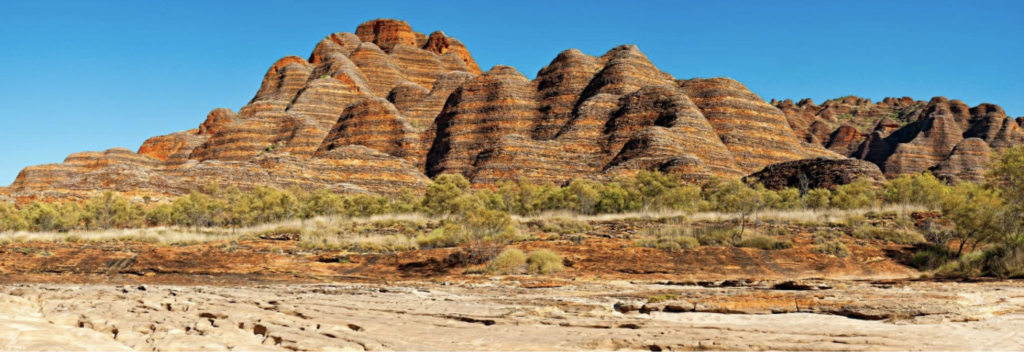September 2021 a super deal popped up for a 4 day trip to Uluru. Great price. NT was desperate for tourists and I was desperate for a trip.
So a booking was made.

Flights were booked – and moved by Qantas – a number of times including one being 24 hrs after the package began. So more changes were made.
But finally a plan.
26th Feb – Fly to Alice Springs to have time with sister Lindy.
1st March drive to Uluru.
4th March back to Alice.
5th March home.
Fingers crossed!
And the finger crossing worked. YAY. OMG! I got to go on a holiday. A week in the Red Centre – Alice and Uluru.
2022 – Red Centre Day 1 Sat 26th Feb
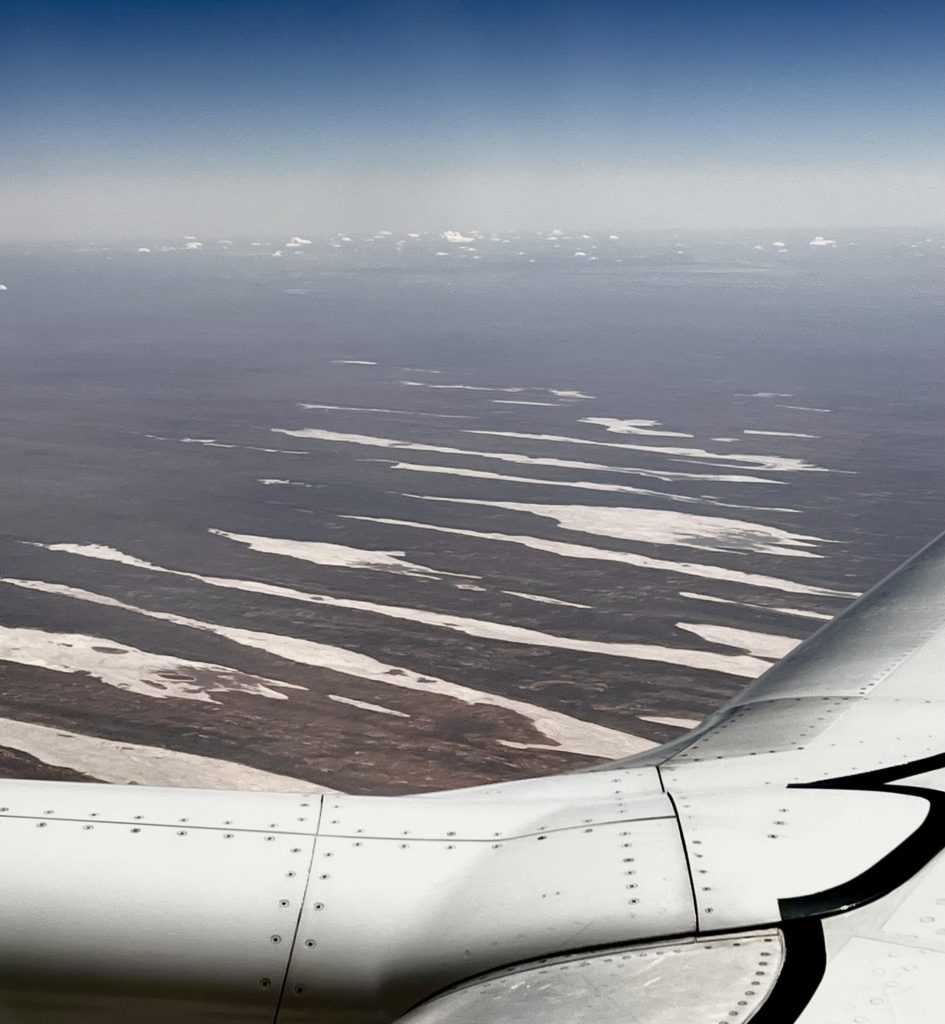
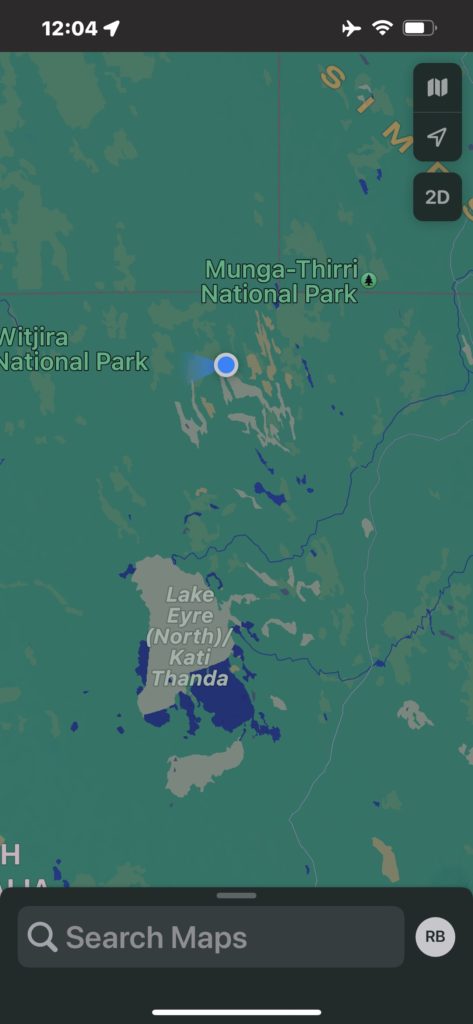
Flight to Alice Springs and a drive around. The flight took us over Munga-Thirri National Park. Previously known as Simpson Desert for a 100 odd years. To see the salt pans to the north of Kati Thanda-Lake Eyre, was amazing.
Wangangurru and Yarluyandi Country.
Got to see the COVID dry storage of the Singapore Airlines planes at Alice airport.
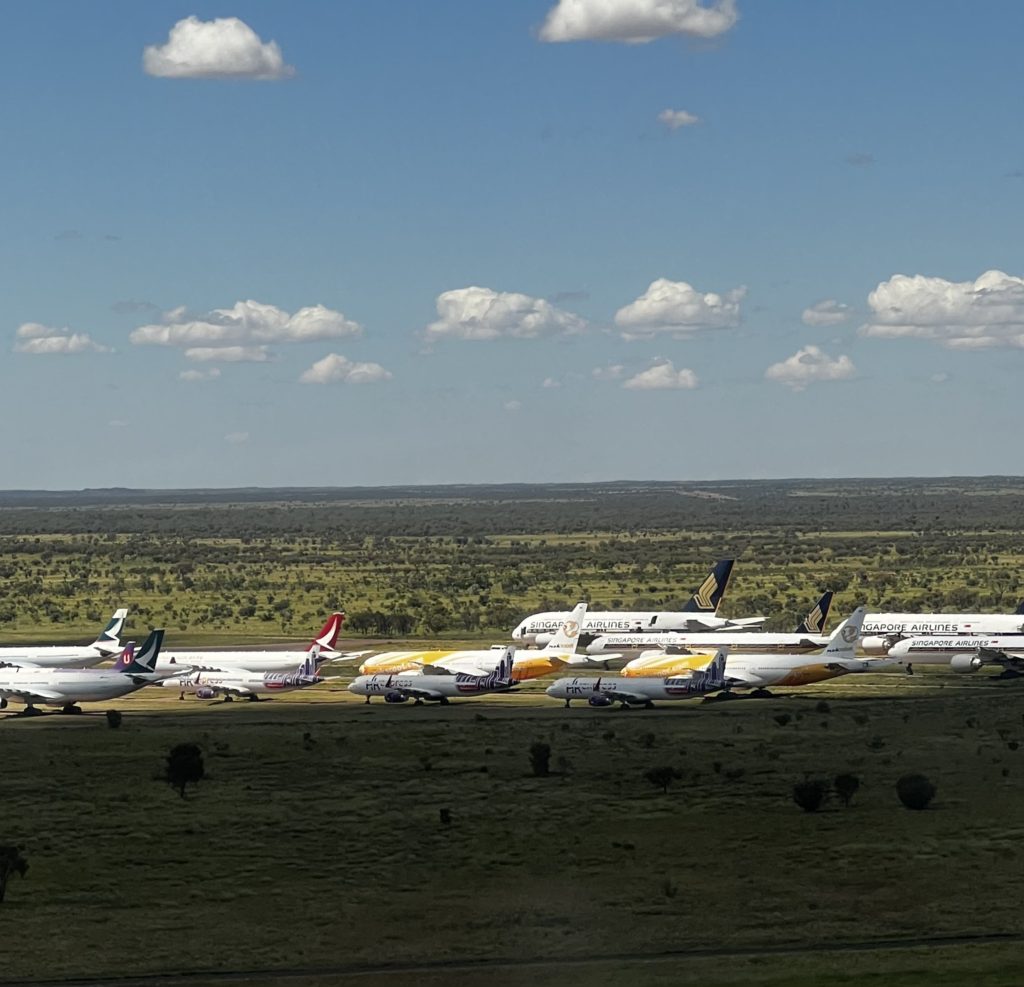
Then off to Lindy and Ashleys and a look around Alice Springs on Arrernte country and the surrounding area. Up ANZAC Hill then a drive out through the West MacDonald Ranges.
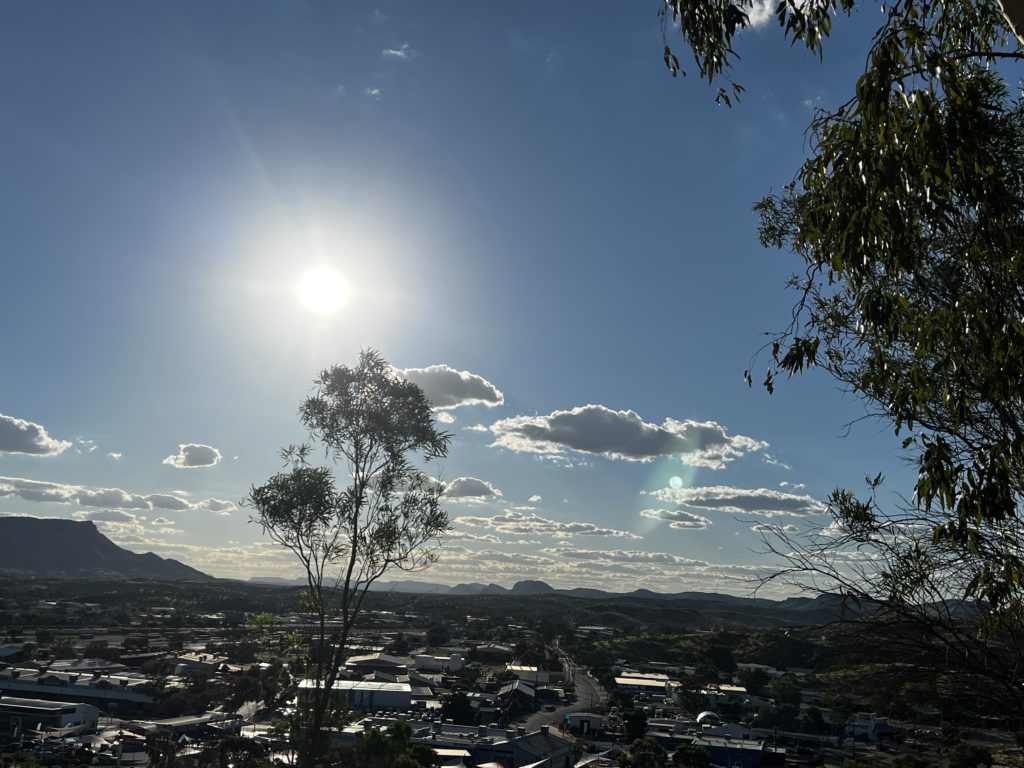
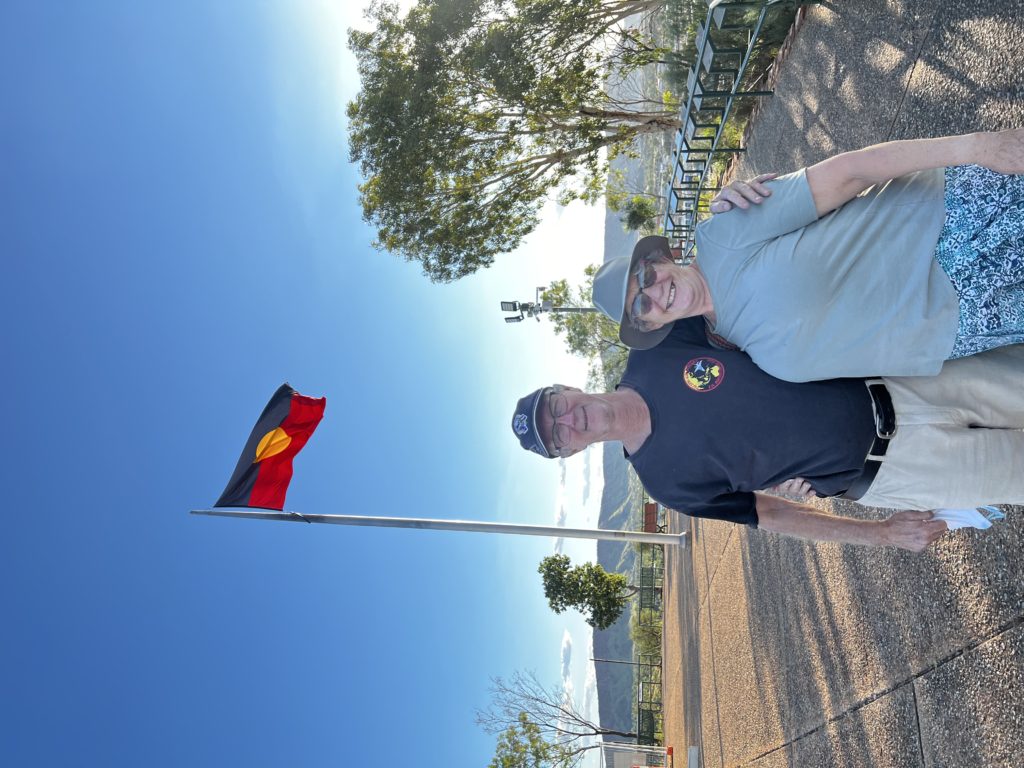
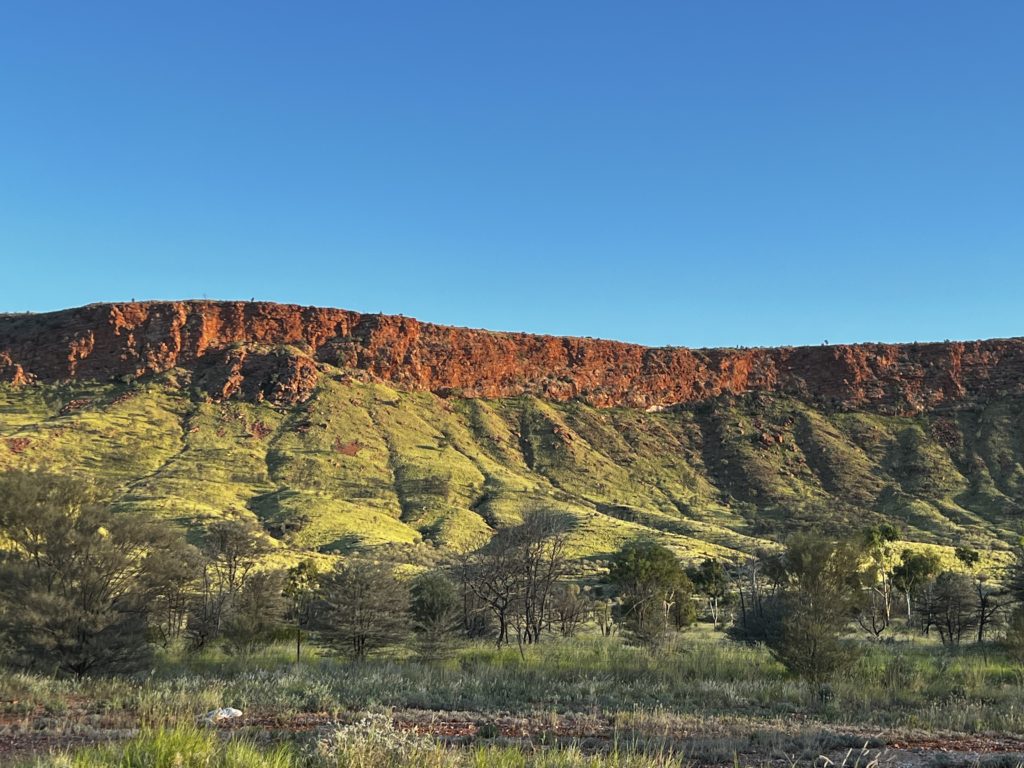
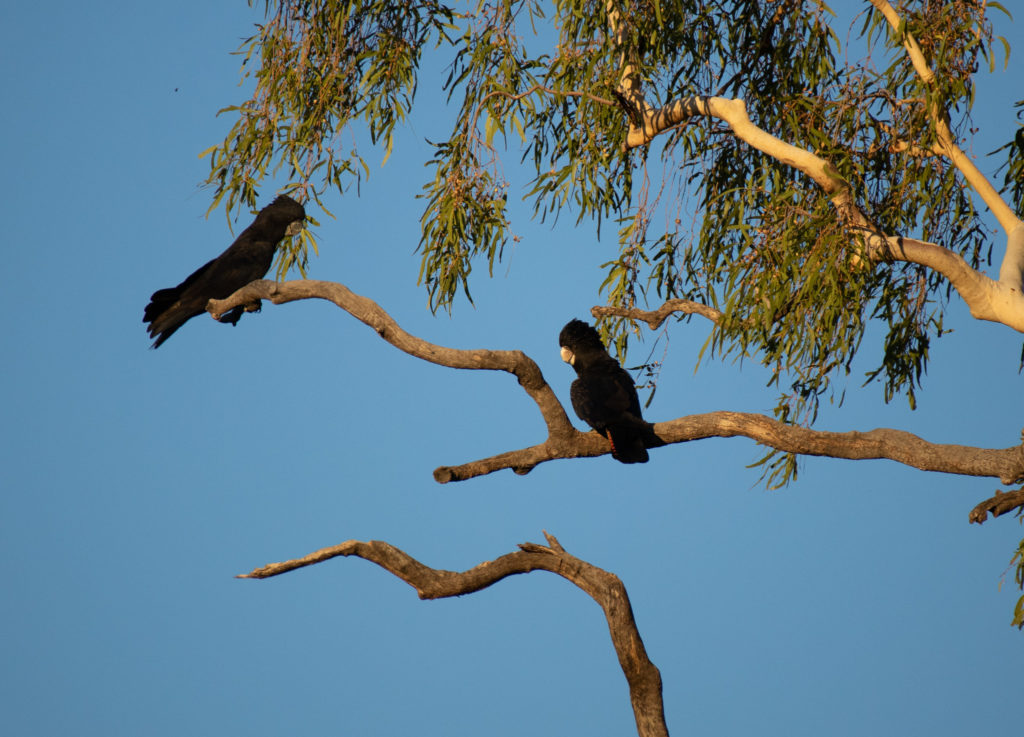
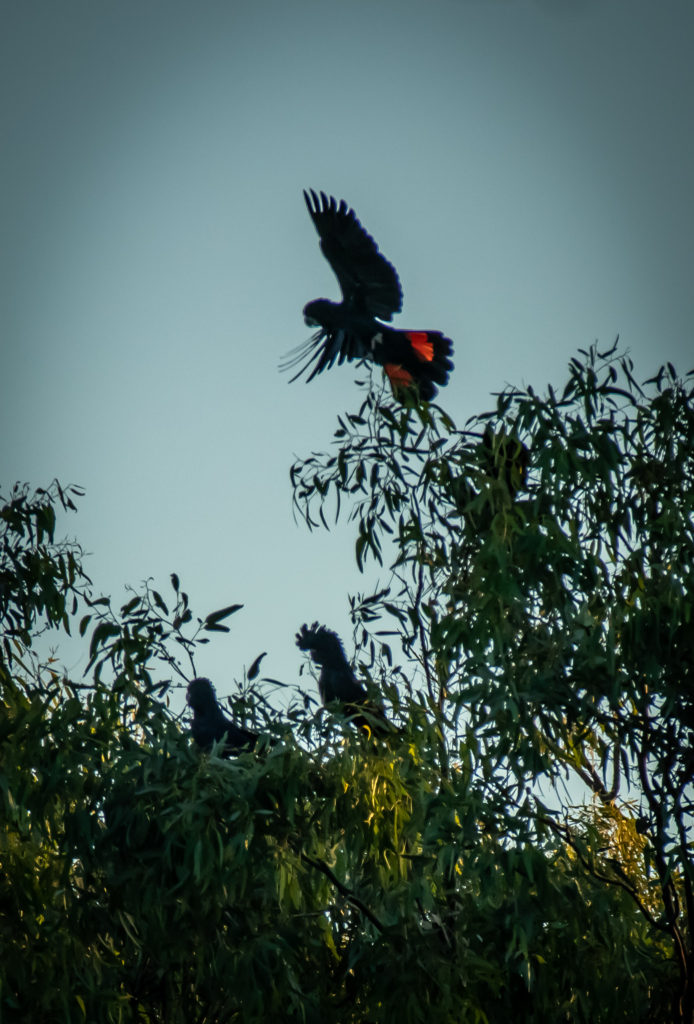
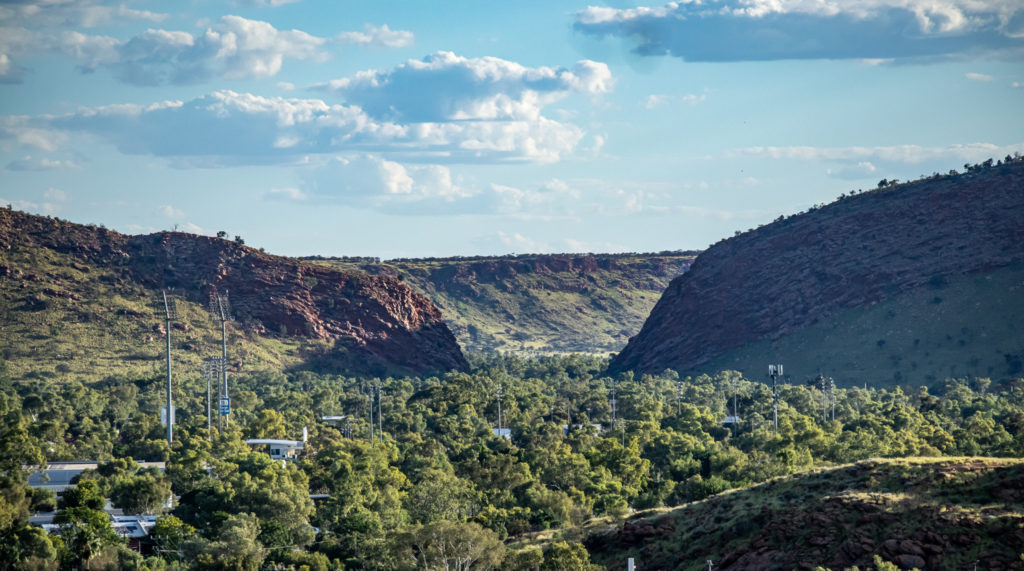
2022 – Red Centre Day 2.
27th Feb – East MacDonald Ranges.
After a lovely slow start we headed off to the east of Alice Springs. So lush after the recent rains. But mainly Buffel grass, a deep-rooting, summer-growing, erect tussocky grass. And terribly invasive. It is taking over the native grasses and is adapting to be able to run up hill, something it couldn’t do when it first appeared. Everything was green and lush. No red soil to be seen.
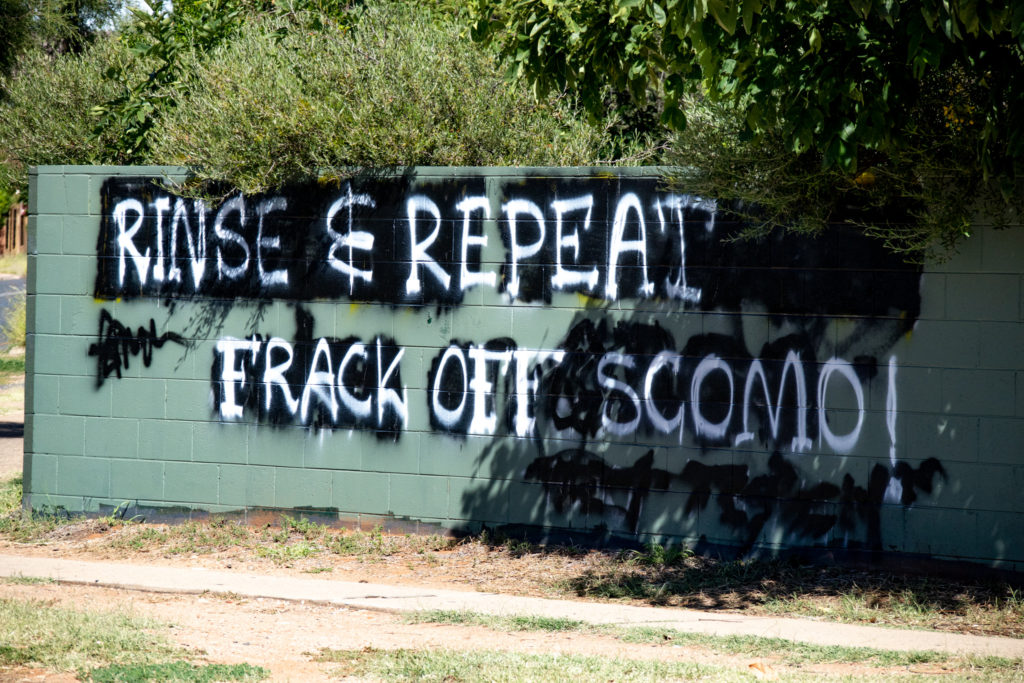
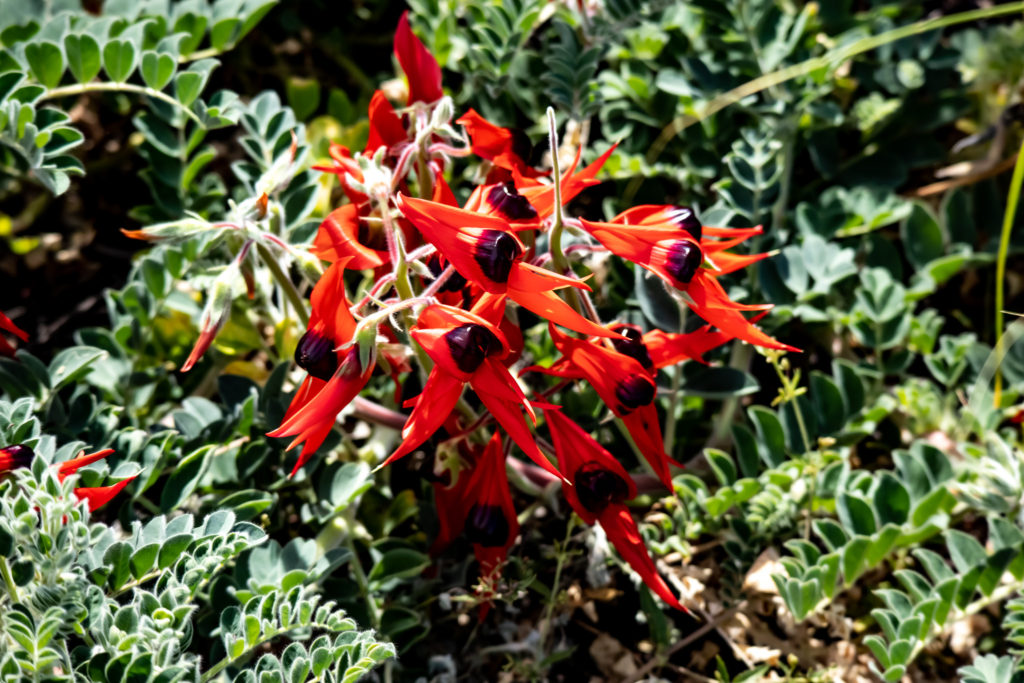
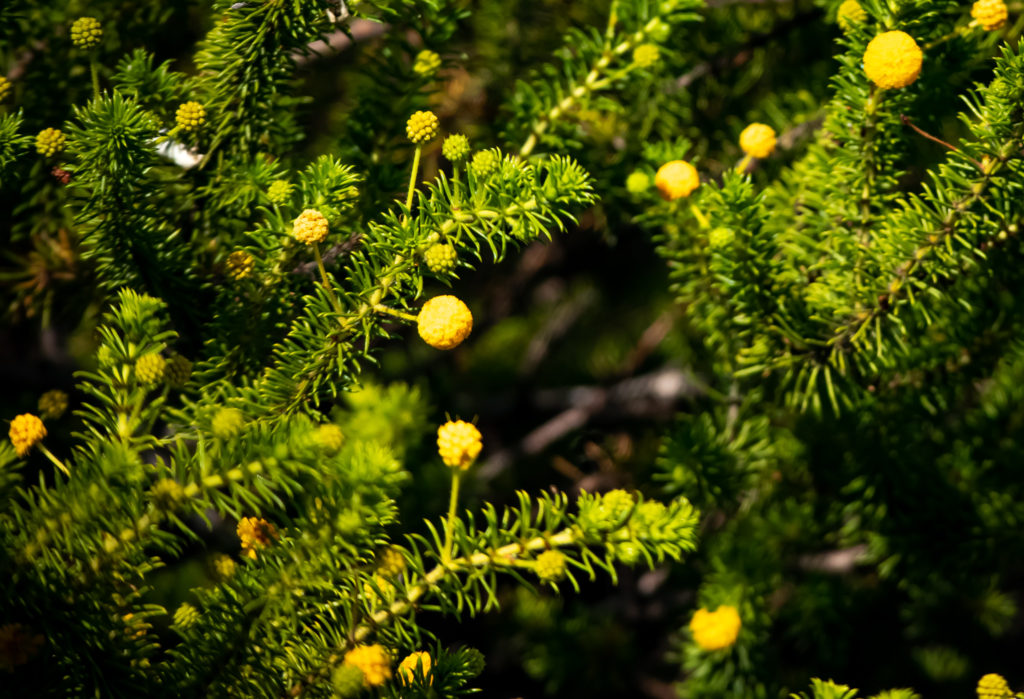

First stop was Atherrke. (Jessie Gap). Atherrke is closely associated with the storyline of the Three Caterpillars. It’s a beautiful gorge with a gap through the East MacDonald Range. And a great swimming hole. There is rock art further in. This is an important site. Tessellated bark on the Desert Bloodwood tree was so pretty.
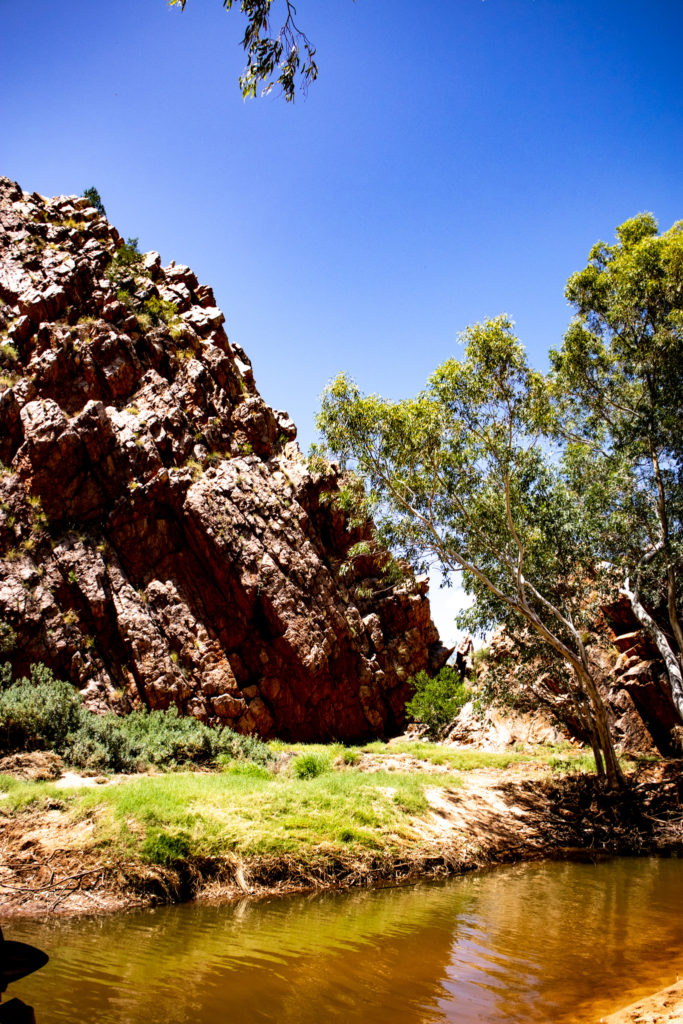
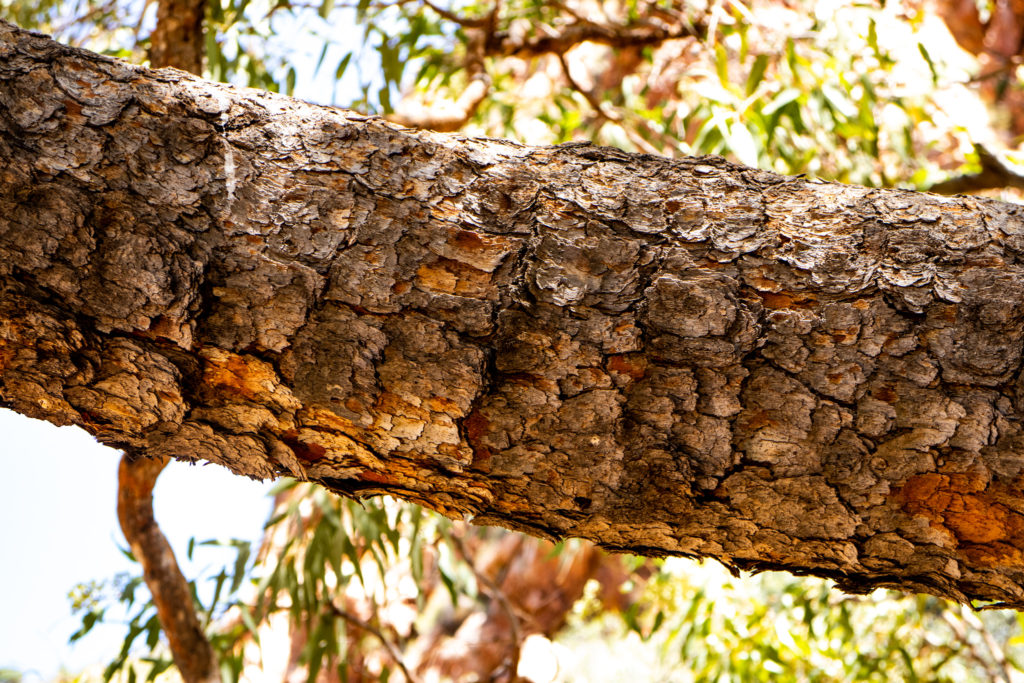
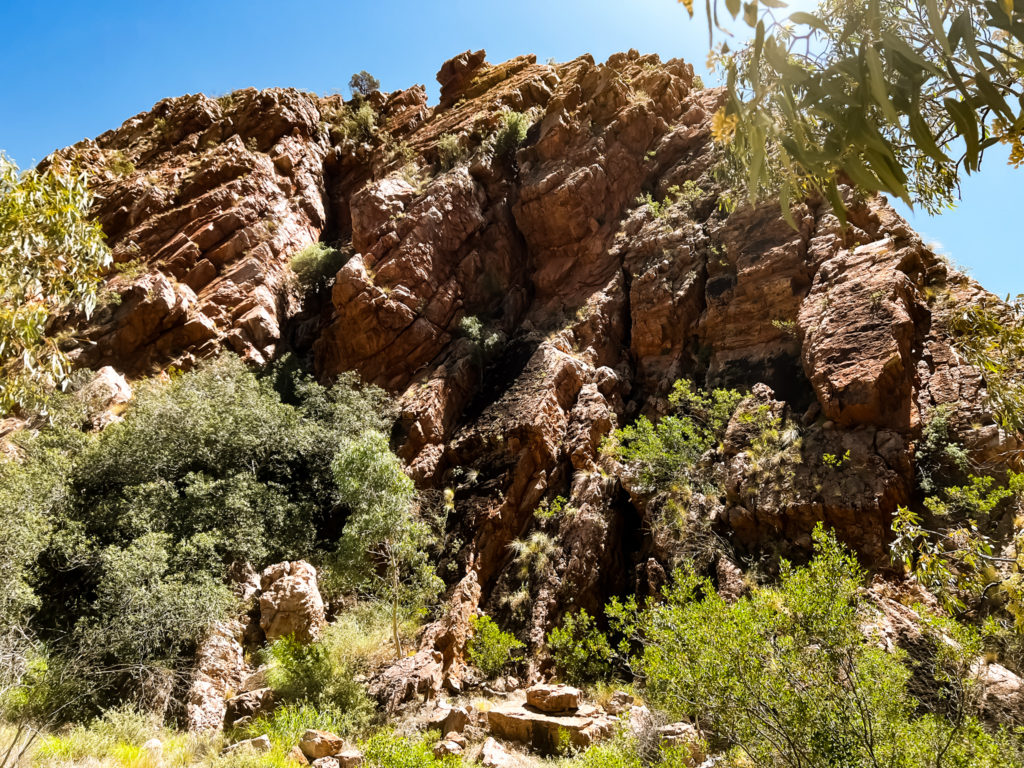
Next stop was to visit THE Ghost Gum. Corymbia Aparrerinja, is endemic to Central Australia. Stunning smooth white bark. But this wasn’t just any Ghost Gum. This is THE Ghost Gum. This one is 33 metres high and estimated at 300 years old. It is listed in the NT Register of Significant Trees and is recognised as the largest Ghost Gum in Australia. Very significant to the Arrernte People, birds and insects. When branches die they turn black, go rock hard and stay on for many years. And look stunning. We couldn’t walk close to it, out of respect and to protect the soil. And what an amazing tree it was.
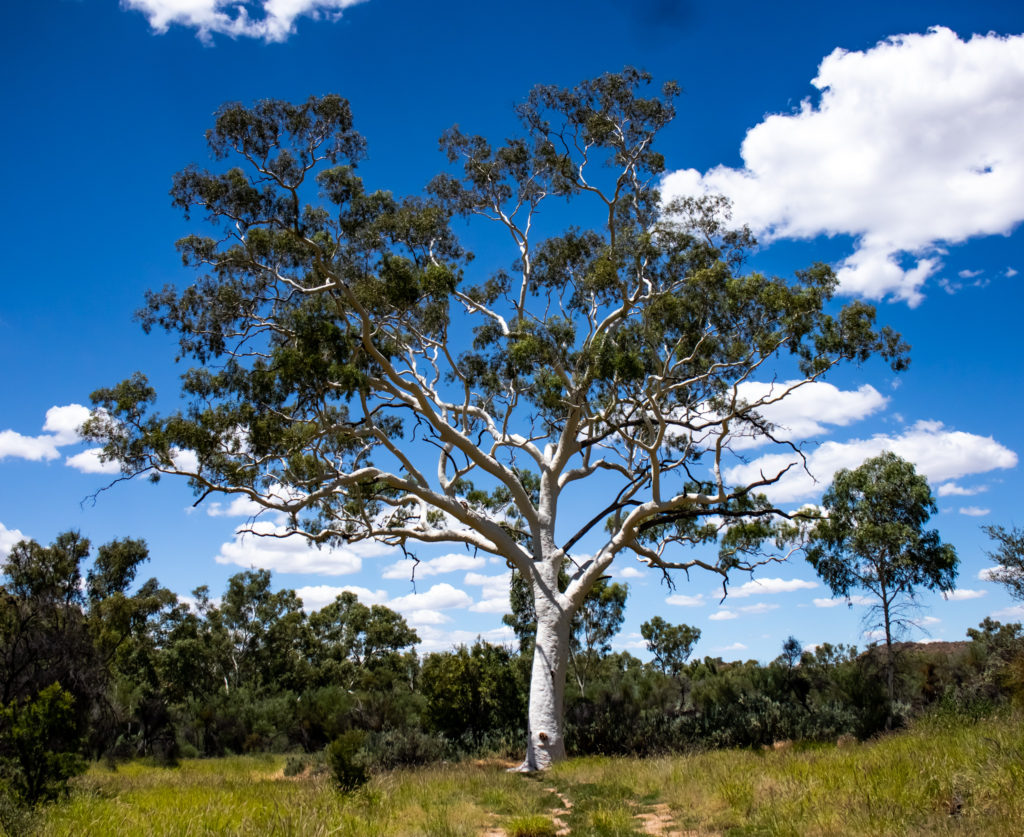
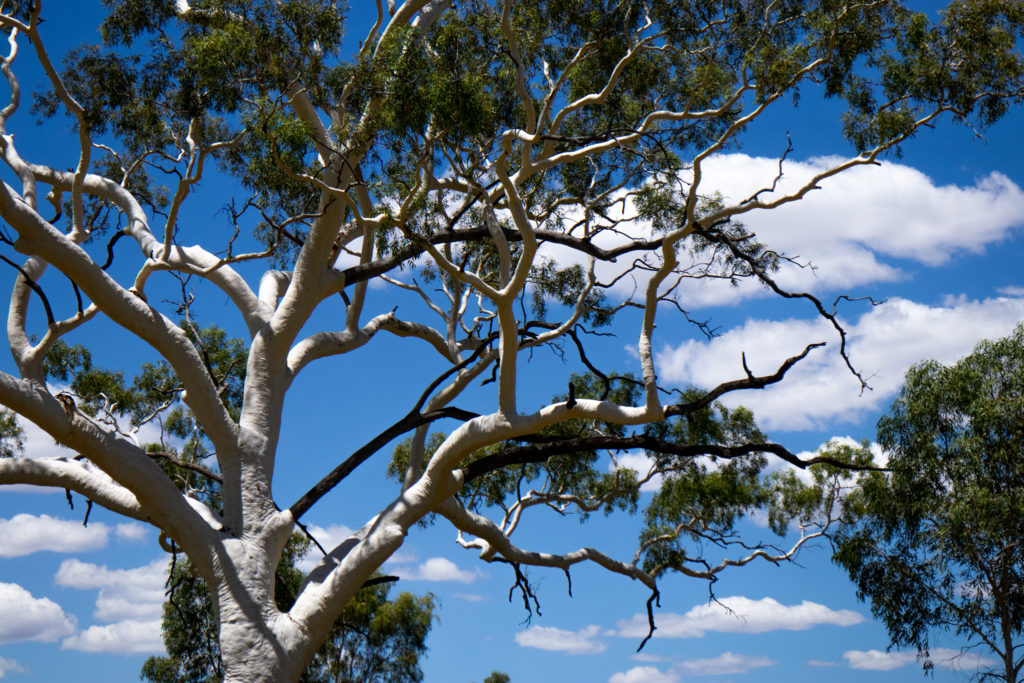
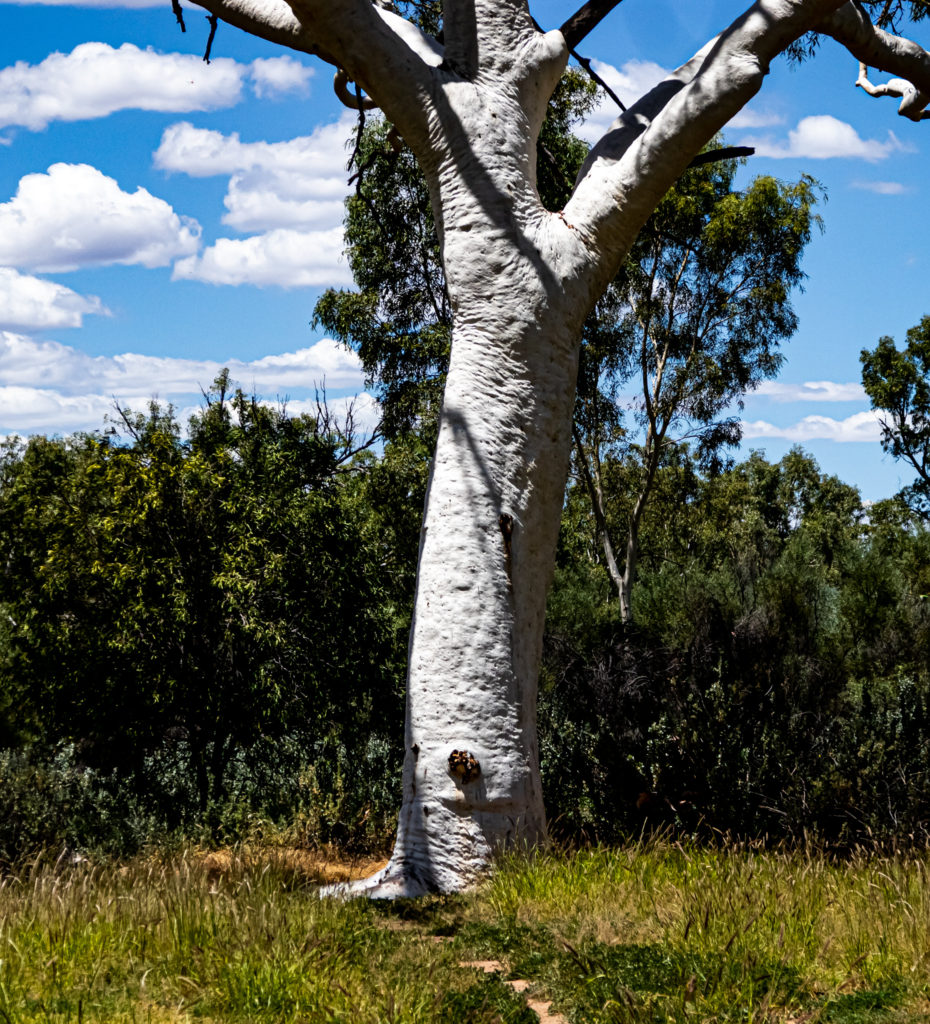
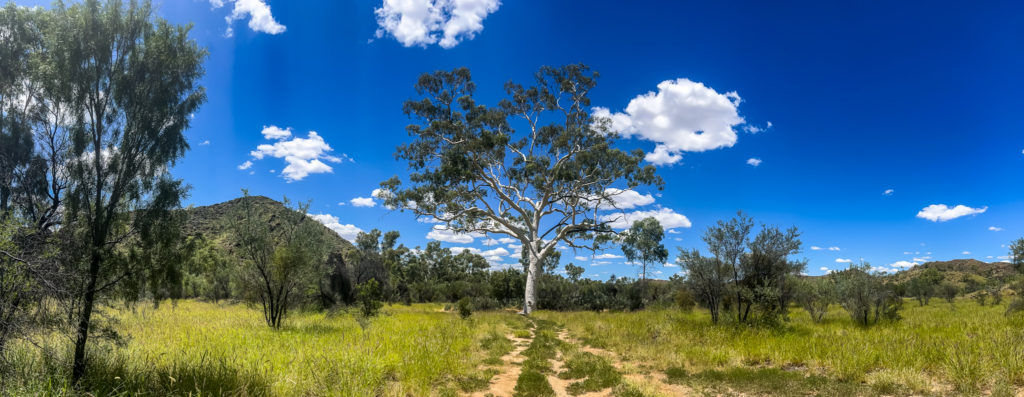
Trephina Creek.
Another ‘dry’ river, but home to the mightily River Red Gum. Many of the rivers here are “upside down rivers”. They appear dry but have water flowing underneath. River Red Gums – Eucalyptus Camaldulensis. They have giant straw like roots that go down very deep to the sub terrarium rivers. Young trees grow a large tap root to anchor themselves and gain water. The root system is as big as the above ground part of the tree. As well as providing so many homes for birds and insects, these trees was of huge importance to the Arrernte People.
Birds (and possums before they were almost wiped out in the 1930’s) for food.
The ash is mixed with a Nocotiana plant to make chewing tobacco.
Psyllids (tiny sucking parasites) living on the leaves produce lerps, a sticky white secretion. They are eaten as lollies.
Hollow branches often contain “sugar bags’, native bee nests. Leaves were used as a herb to flavour meat.
The bark is soaked to make an eyedrops, an wash for sores and drunk to cure diarrhoea. The caps of the gumnuts were used to make jewellery.
And of course great fire wood.
We saw a guy collecting bush medicines on the side road.
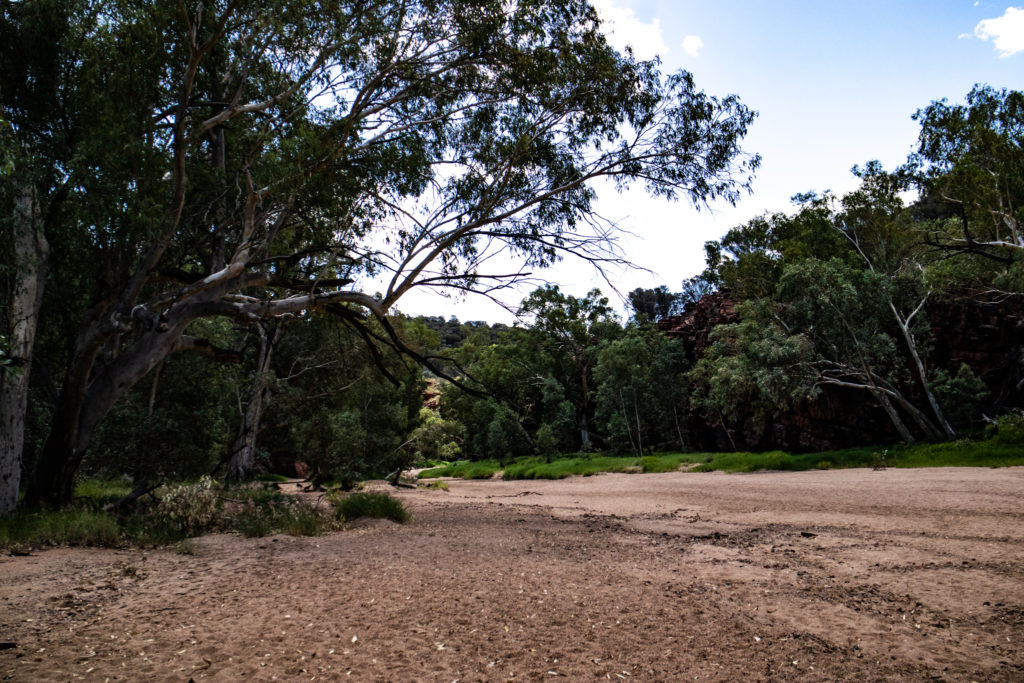

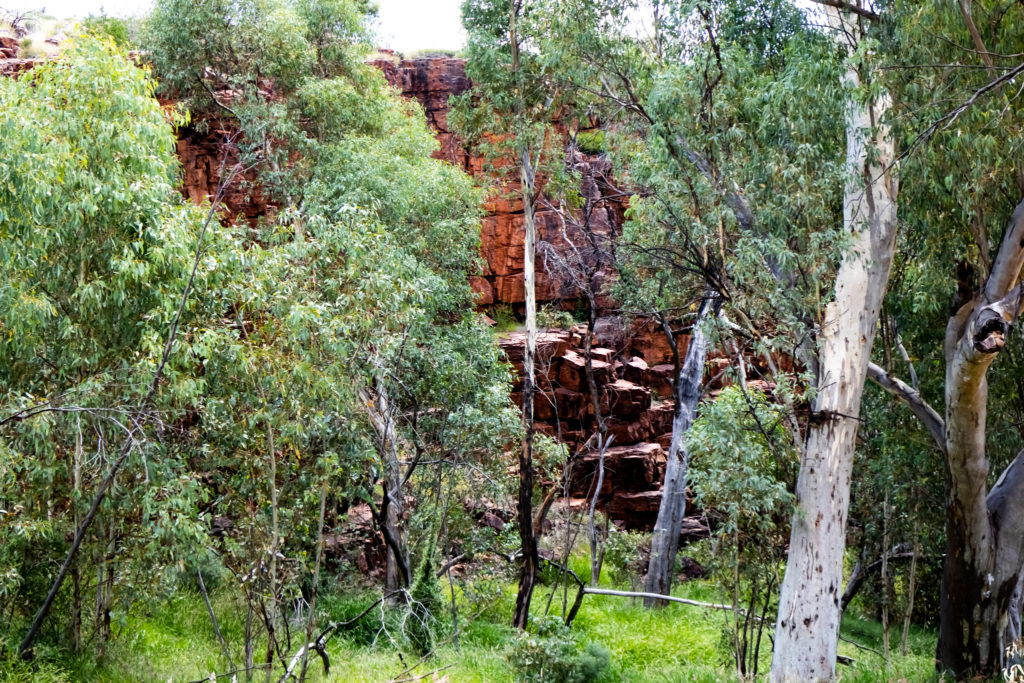
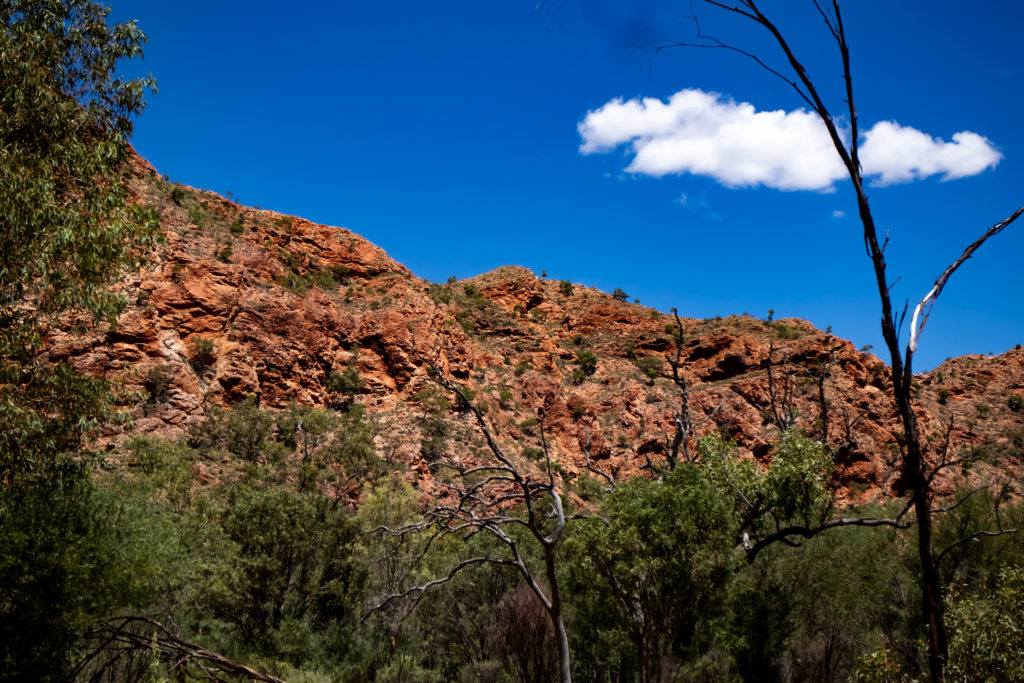
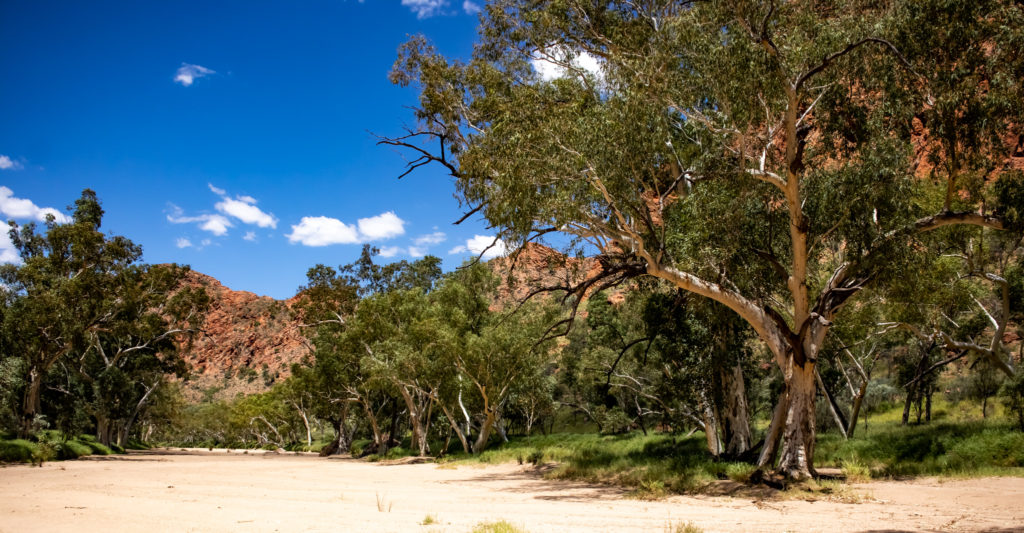

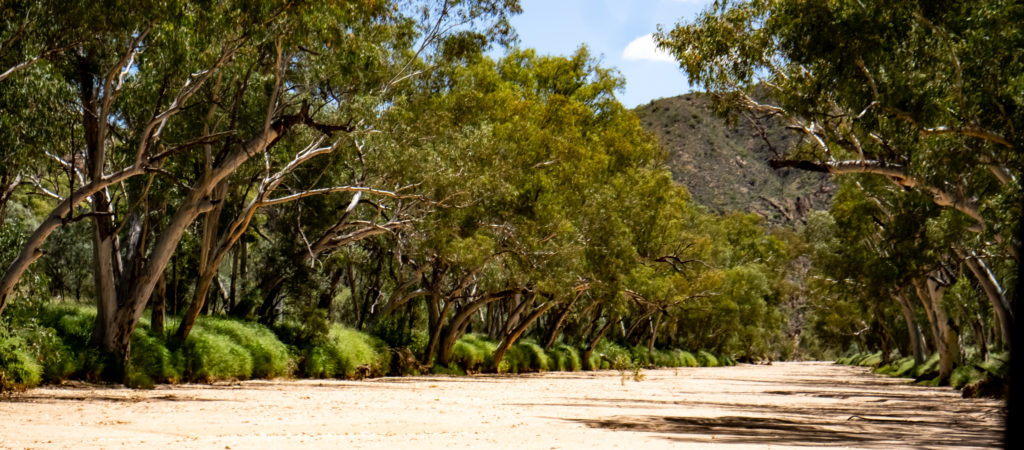
Then onto Ross River Resort. 90ks from Alice. I went there 40 years ago (on a camel trip) so it was great to see it again.
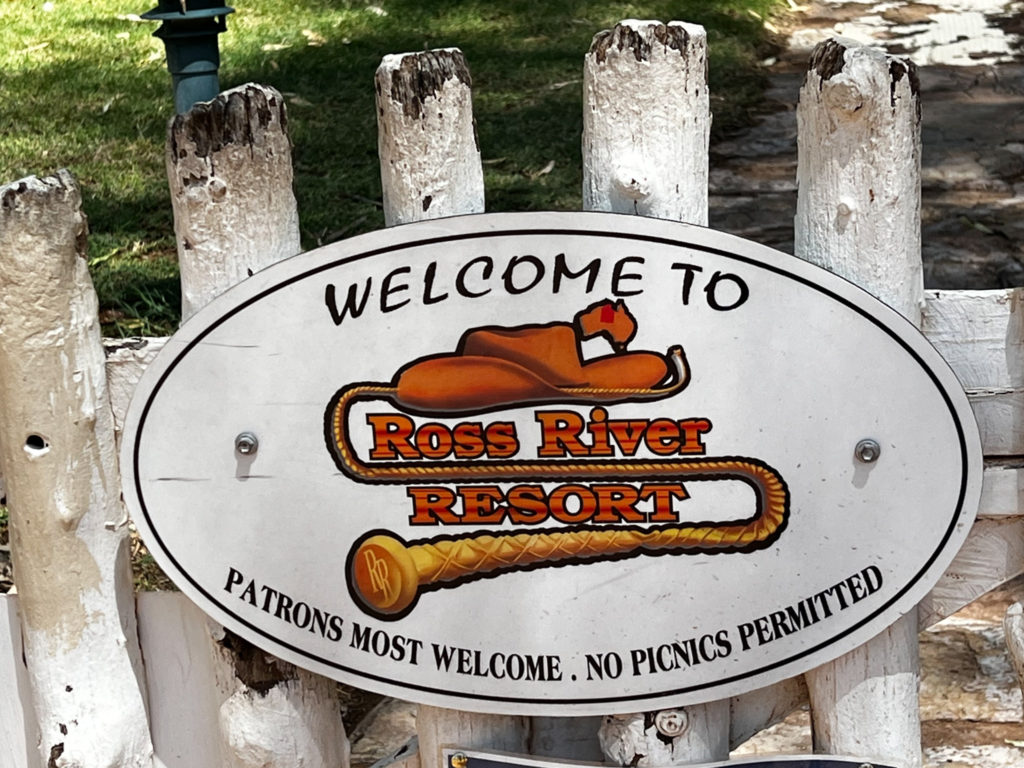
The original homestead was built in 1886 when Lewis Bloomfield (and his family who obviously didn’t have anything to do with setting the place up – as they are not mentioned on any plaques) arrived from Adelaide. Lewis was an expert horseman and they became horse breeders, developing the Australian bred “Walers”. They were the biggest suppliers of Waler horses to the Indian Remount trade aka army. It’s now set up as an outback pub and was lovely. When the Fink section of the railway line was closed, local all went and ‘acquired’ parts of the track. These guys took a bridge. And used it to make a large extension to the resort. The walls are made of sleepers, roof trusses of bridge walls and the hand rails are made of tracks. Fantastic.
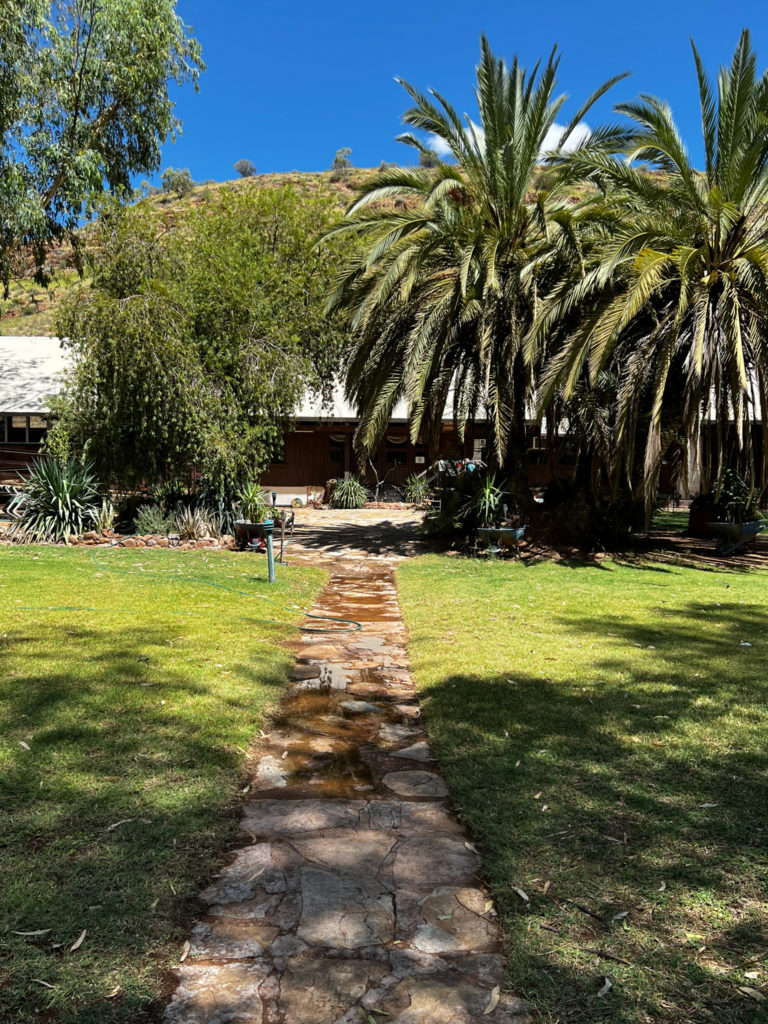
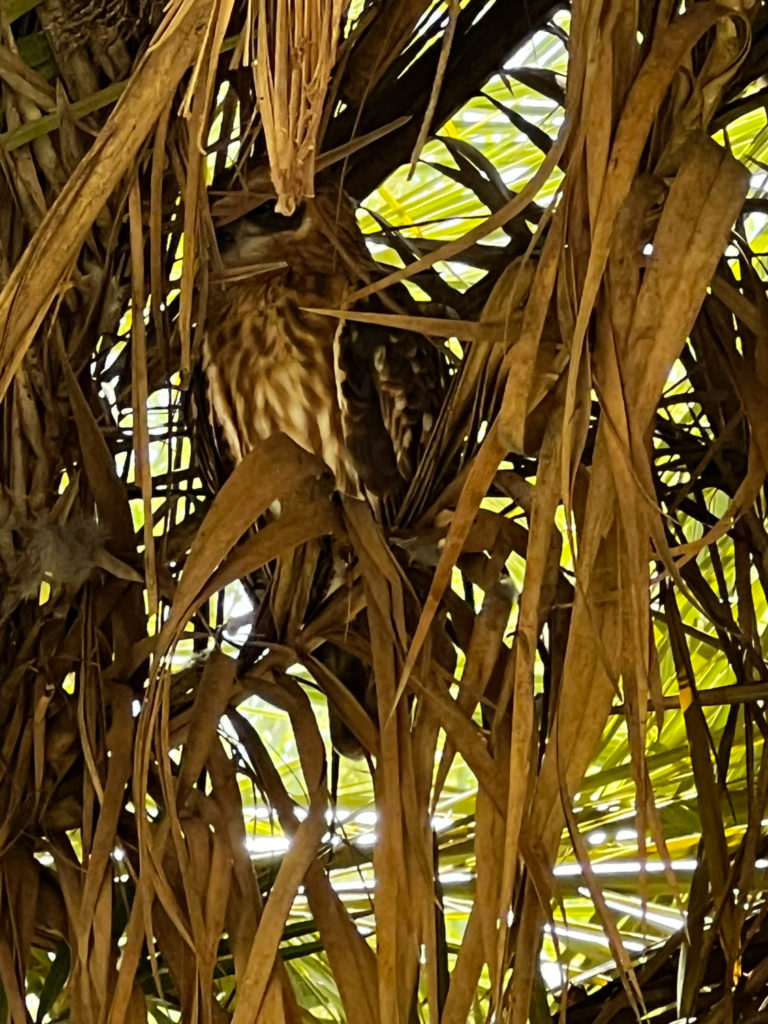
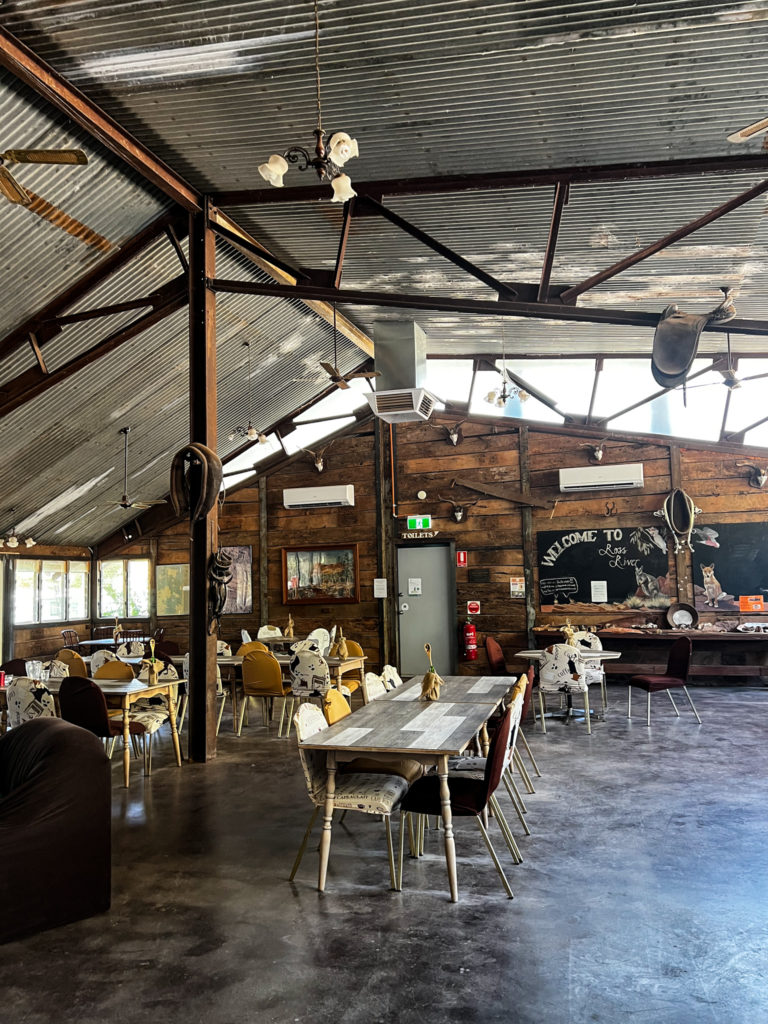
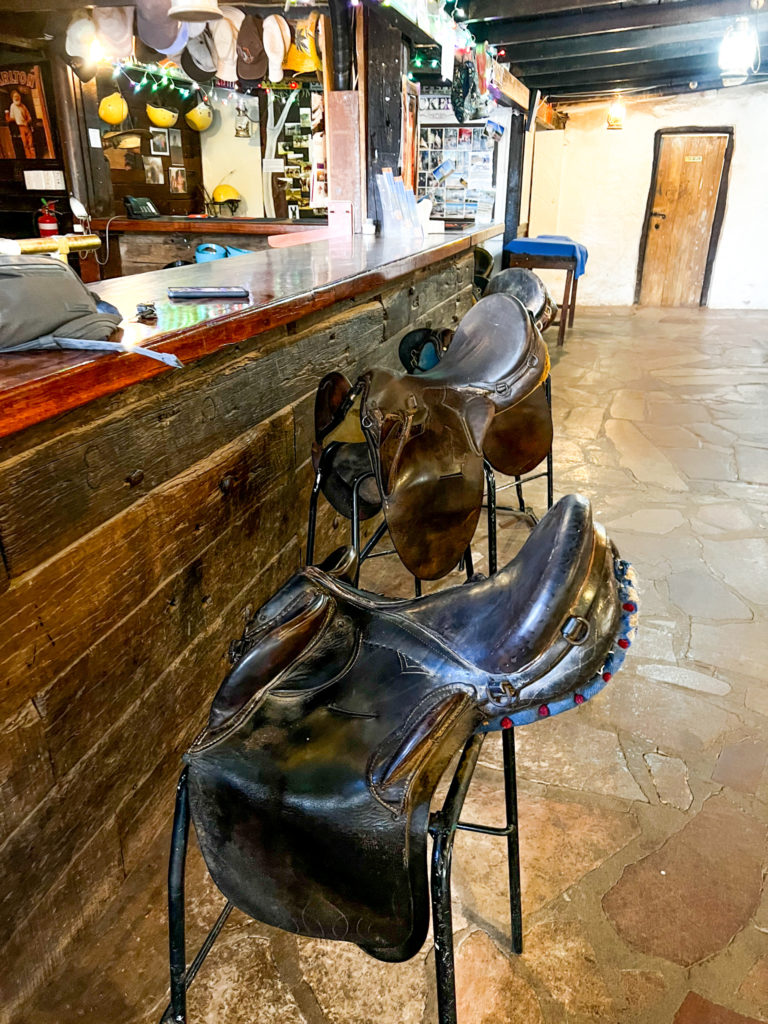
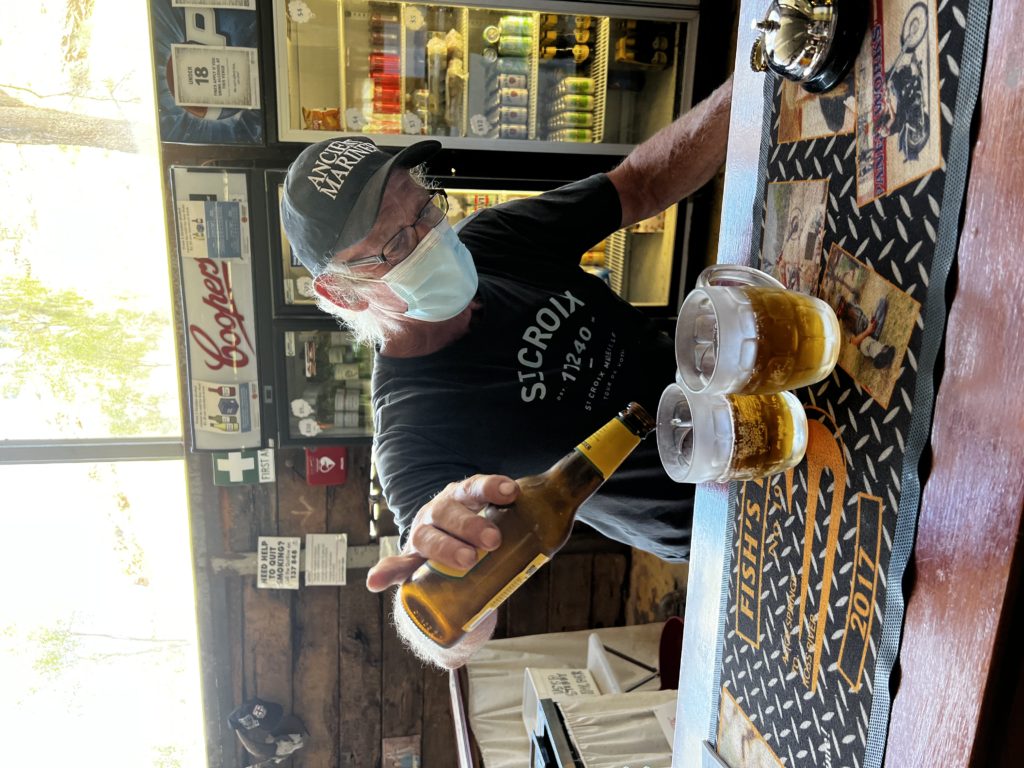
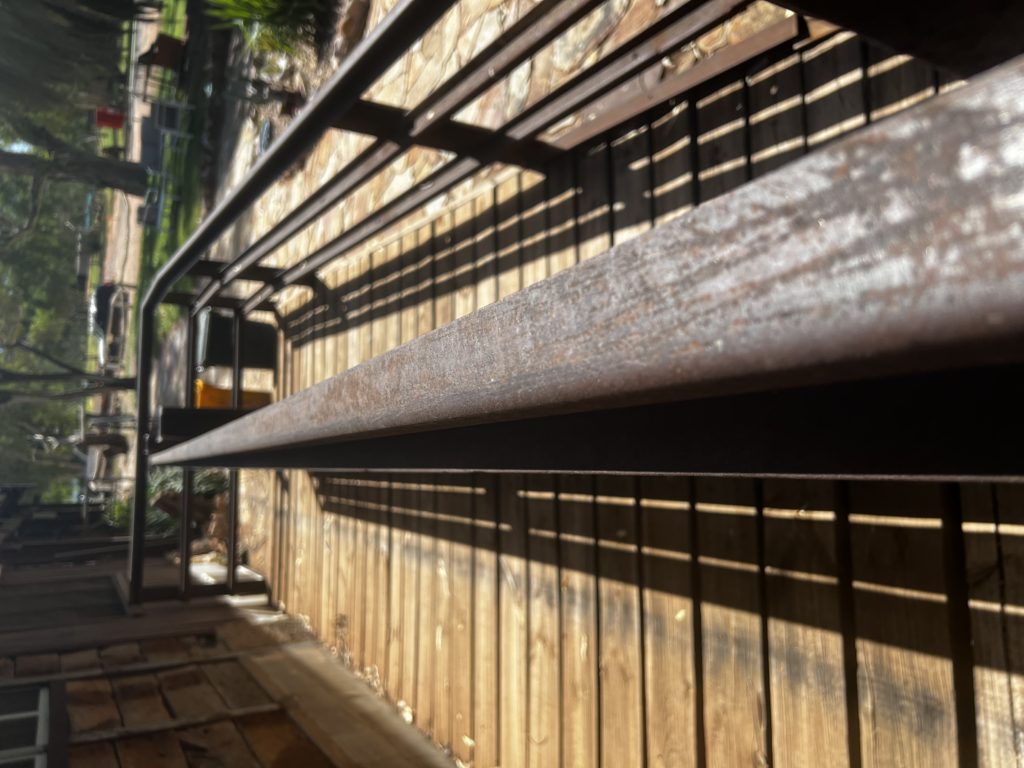
DAY 3 ALICE SPRINGS
28TH MARCH Around Alice.
The Old Telegraph Station. 4 ks out of town is the Alice Springs Telegraph Station Historic Reserve. The Arrernte people lived in this area for thousands of years. The permanent water hole was a significant place.
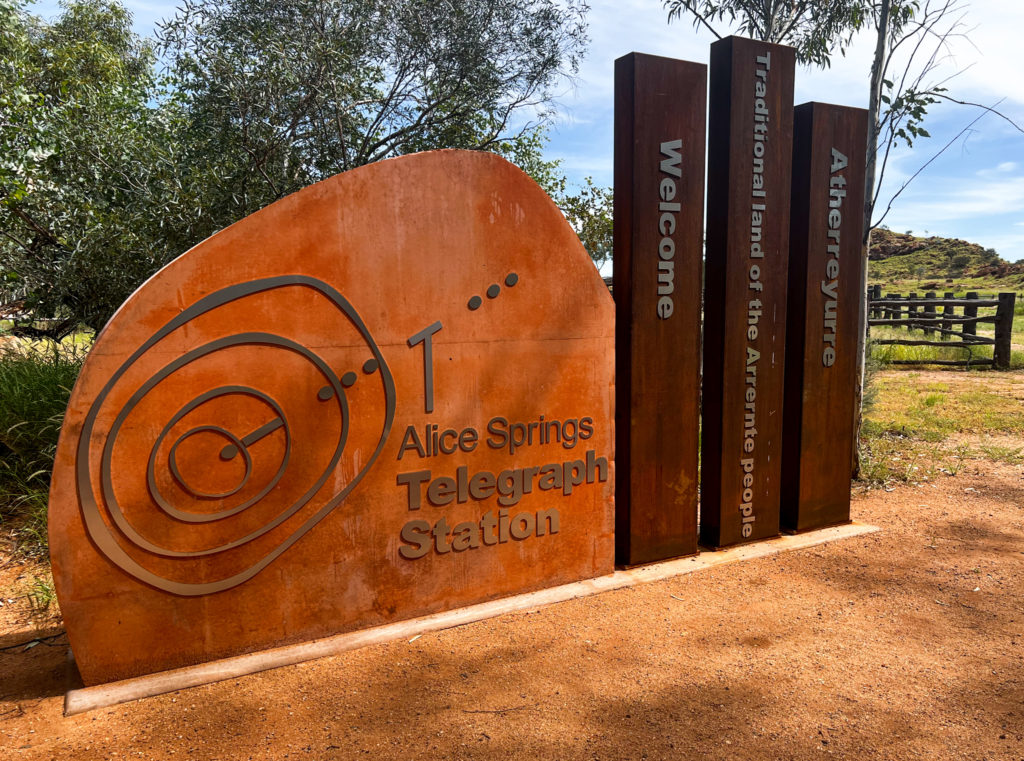
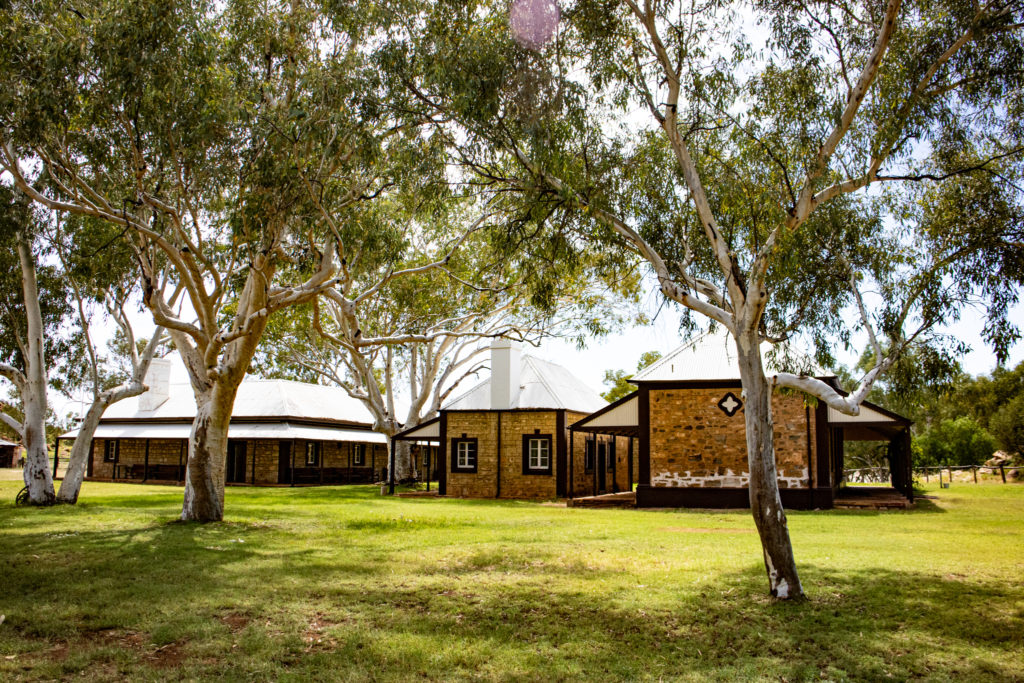


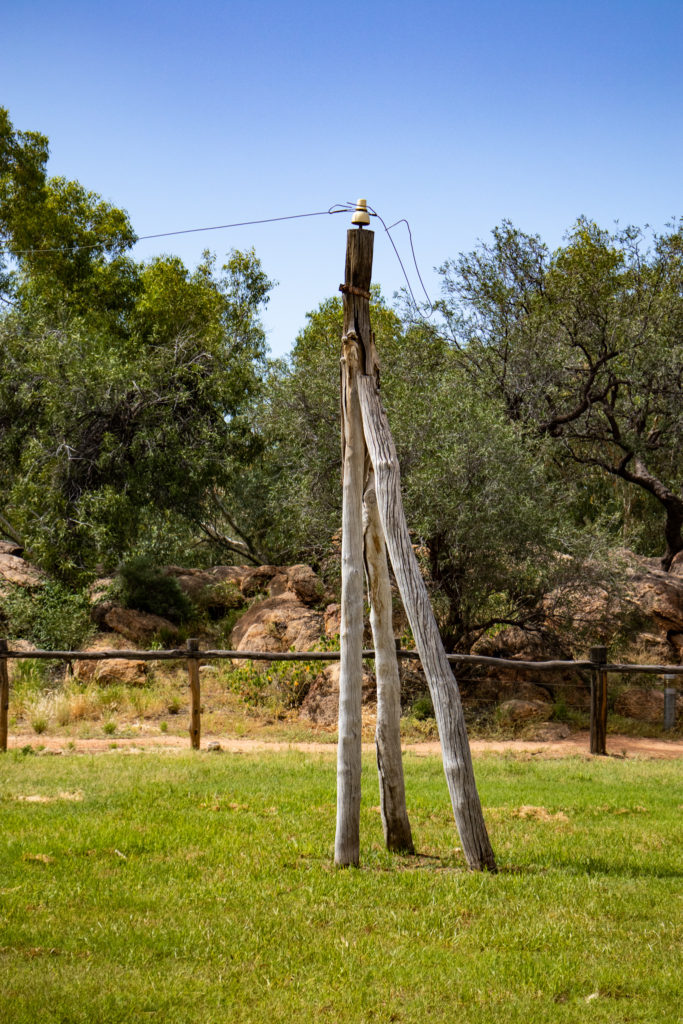
It’s on the site of the original European settlement in the Central Australia. It was established in 1871 as …… a telegraph station for the first overland Telegraph Line from Adelaide to Darwin. Which then connected Australia to Europe via the undersea network. With morse code, a message could get to England in 5 hours rather than 4 months by ship. Life changing.
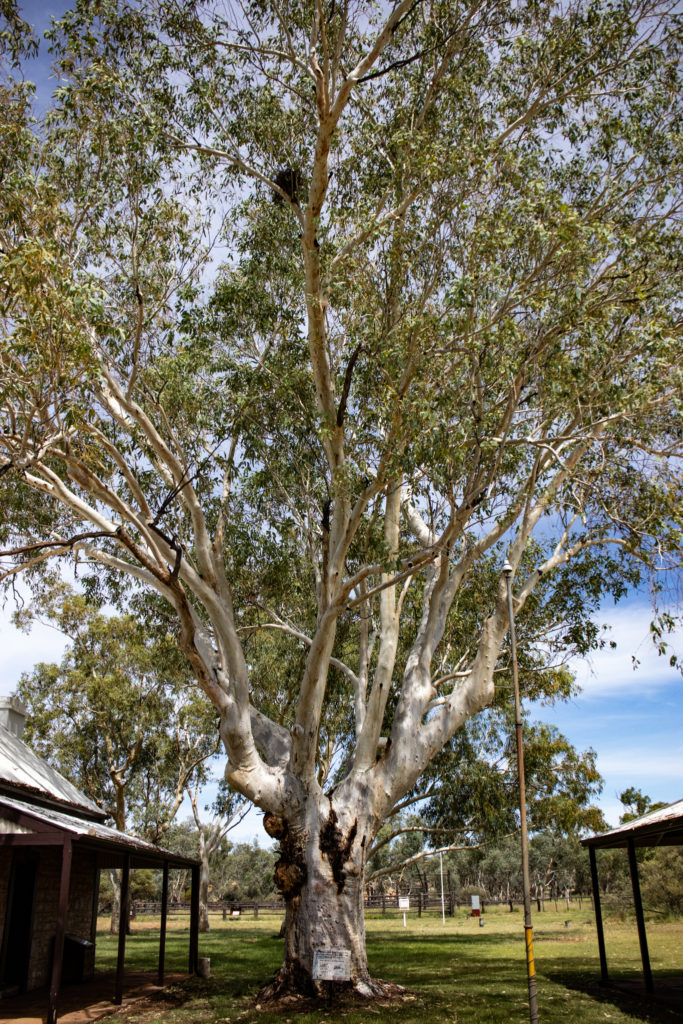

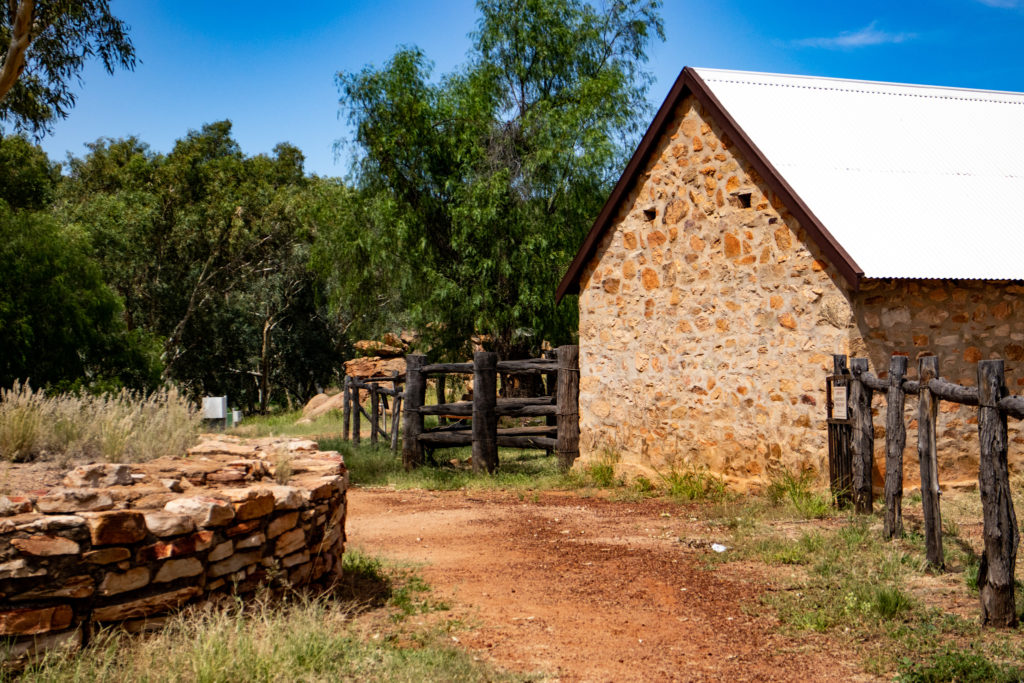
The permanent water hole was named “Alice Springs”. The buildings are stunning. So beautiful and on such a beautiful site. The Station operated for 60 years, and then in 1932 began its dark part of its history where is served as a “reserve” for Aboriginal children AKA a home for stolen generation children.
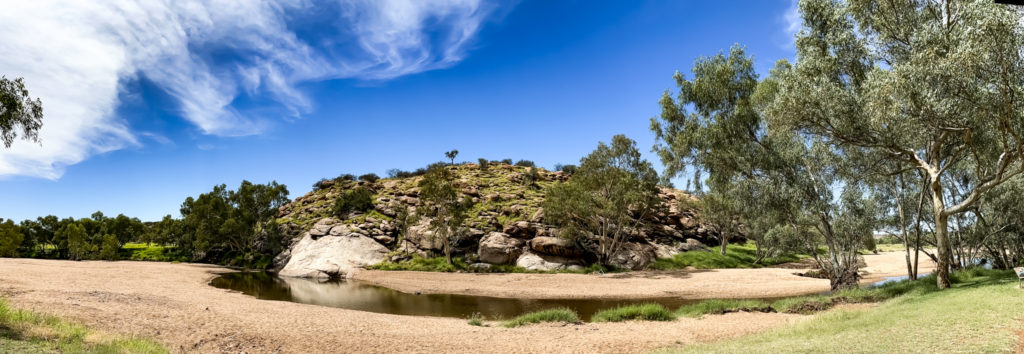
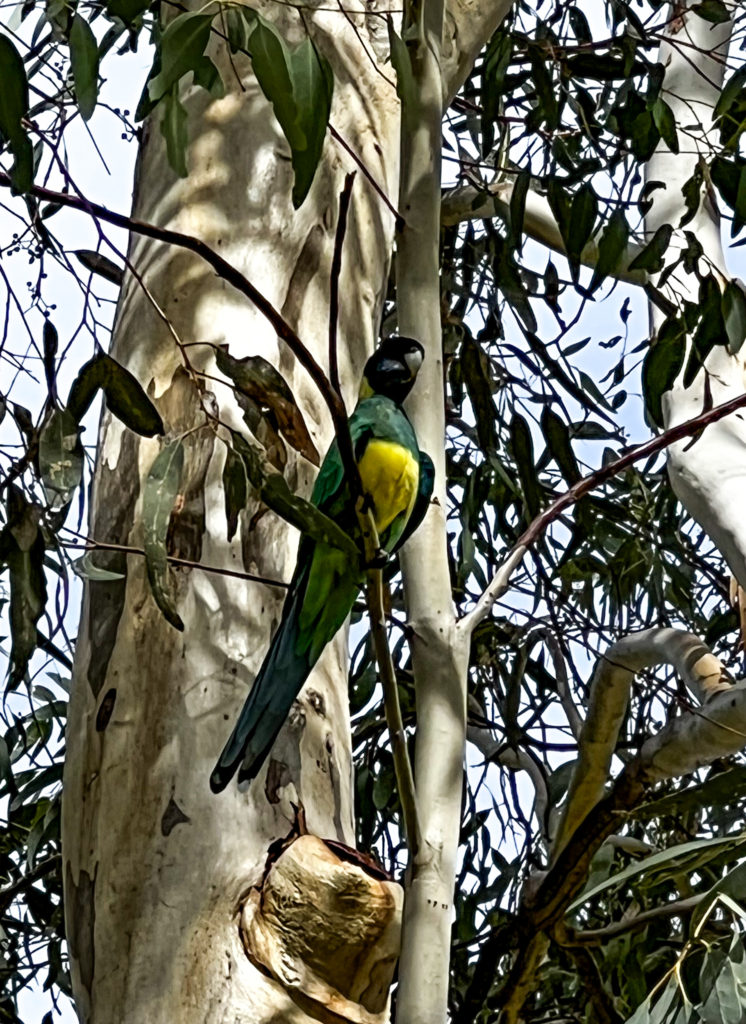
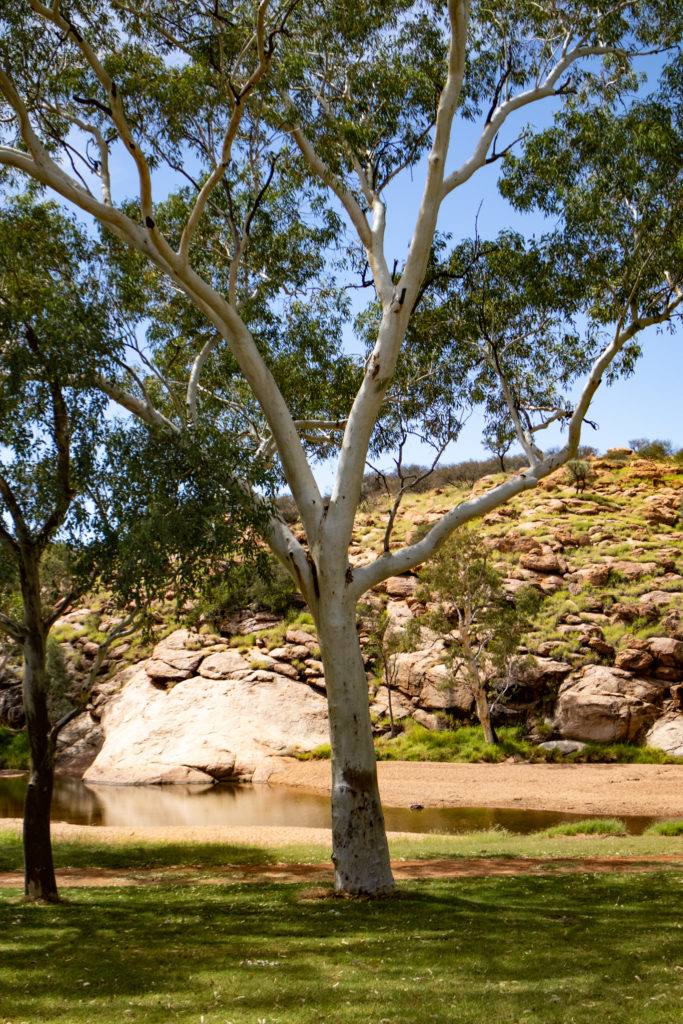
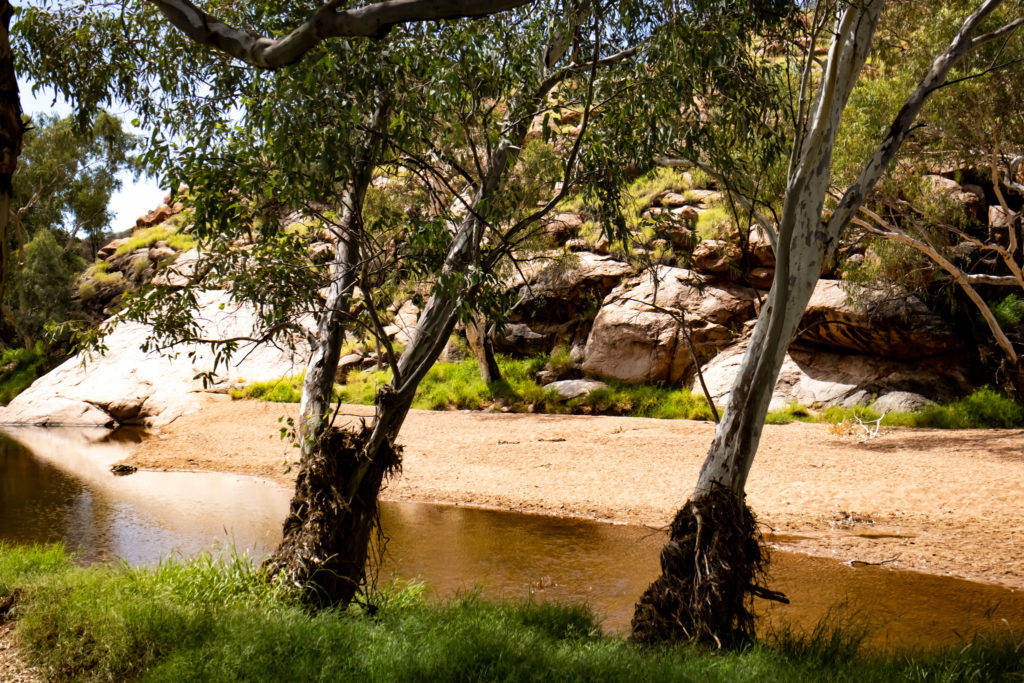
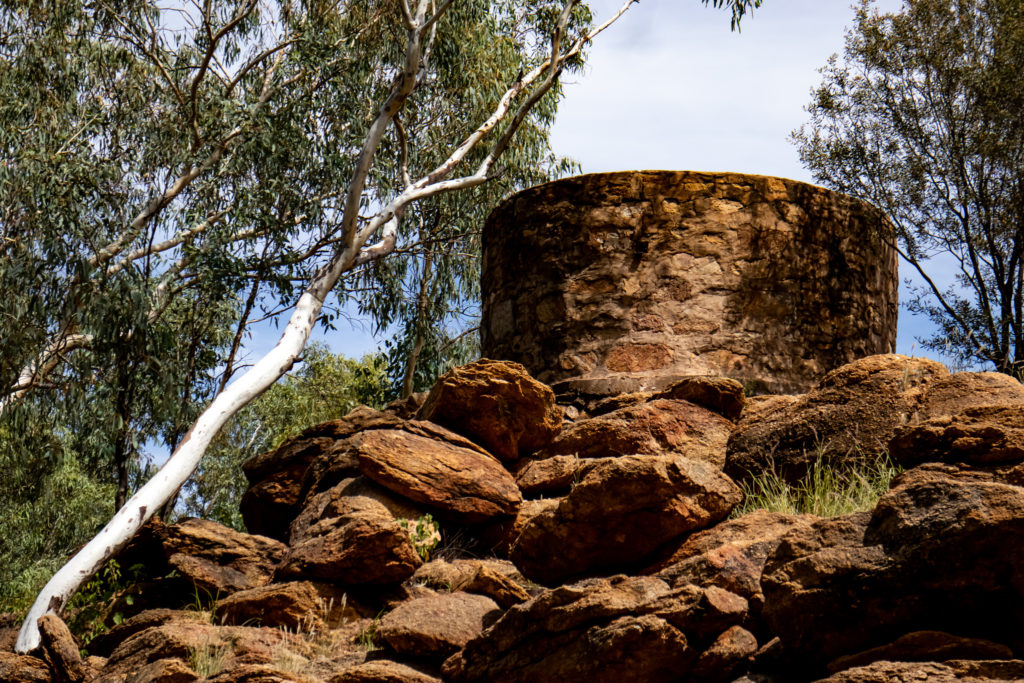
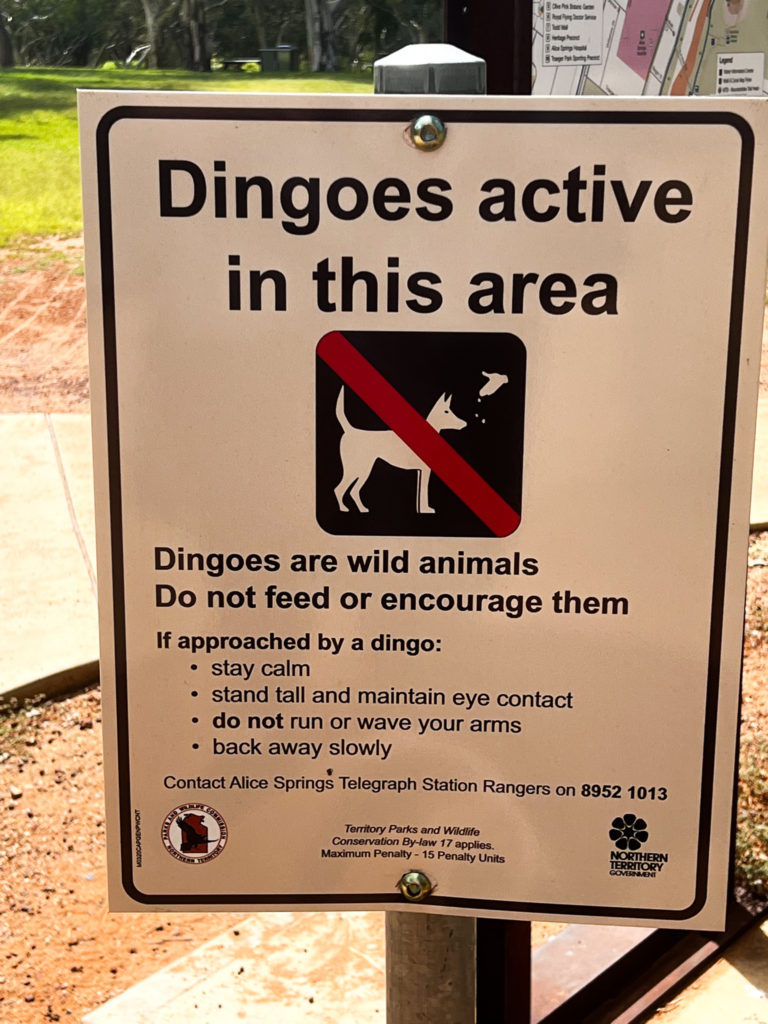
The whole park is stunning.
Walking and cycling trails everywhere and amazing rocks! It’s also the starting point for the Larapinta Trail.
Alice Springs Desert Park 1,300 hectares of botanic gardens / animal park was next. Many wild critters as well as some in enclosures. Sadly the nocturnal display was closed for renovations but we saw heaps. Amazingly beautiful, snuggled into the West MacDonald Ranges. It incorporate three distinct desert habitats – Desert Rivers, Sand Country and Woodland. 7 ks in 38degrees wasn’t ideal, but it was what it was and on we trudged. Near the very end the water left in my bottle was uncomfortably hot to drink.
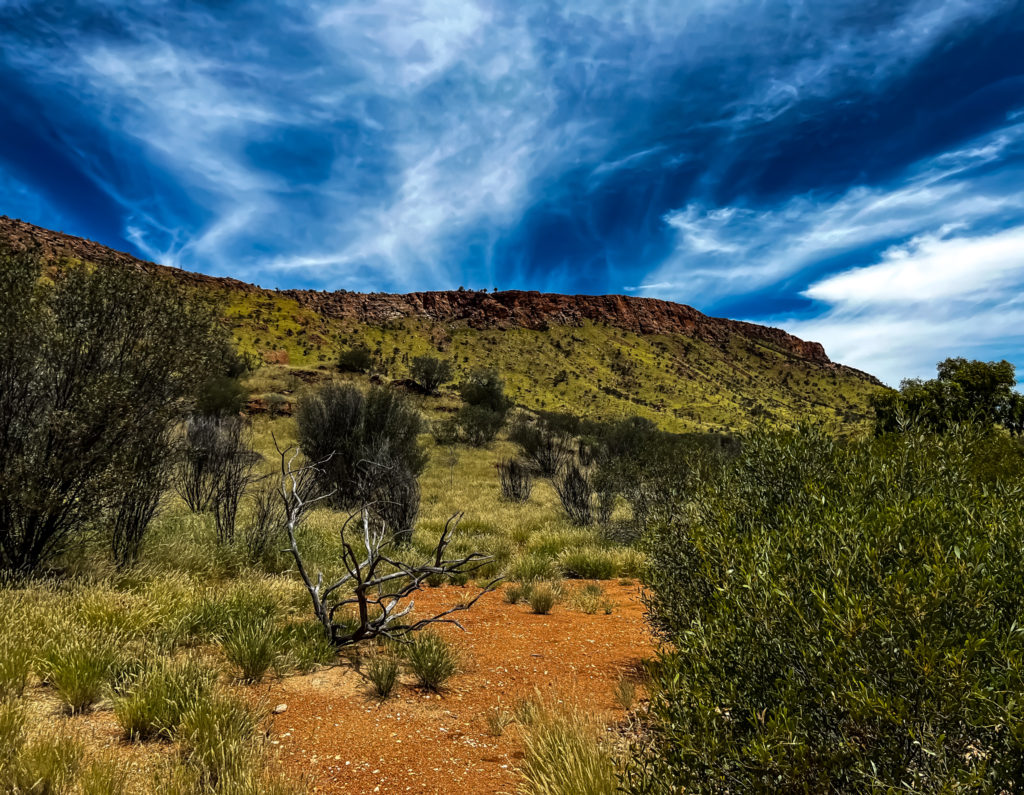
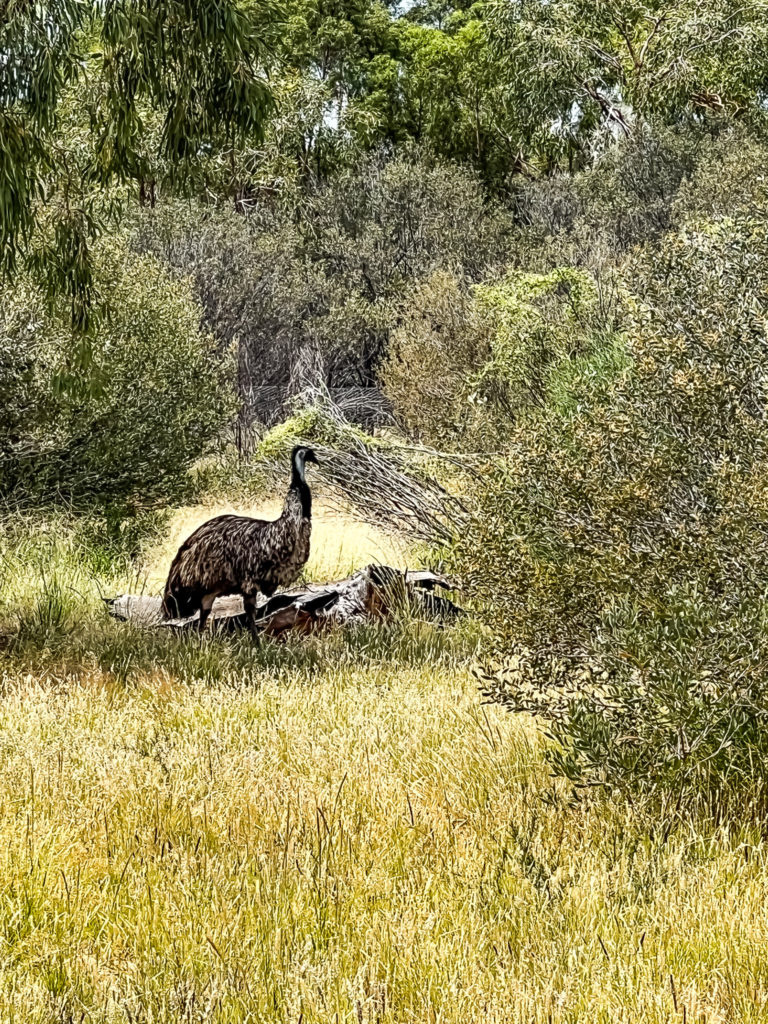
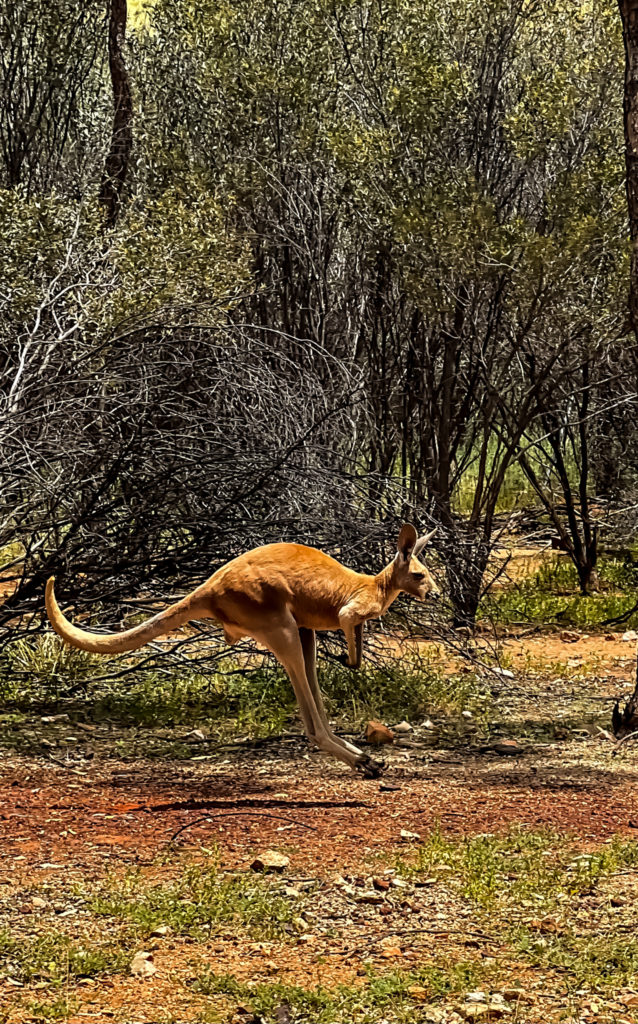
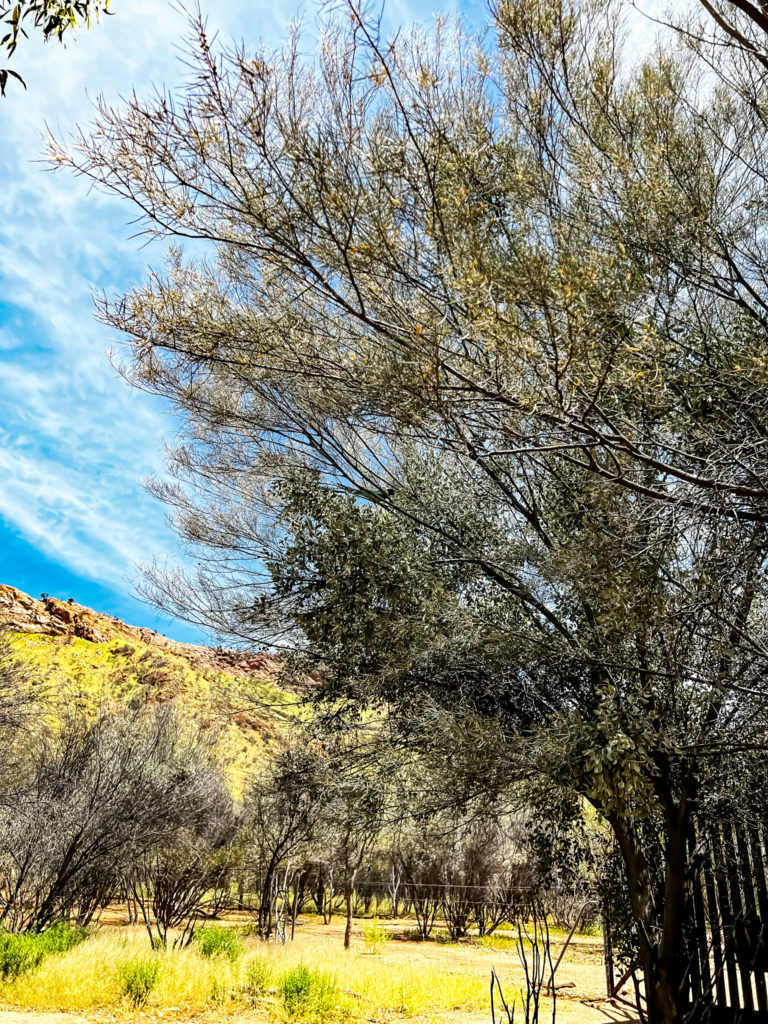
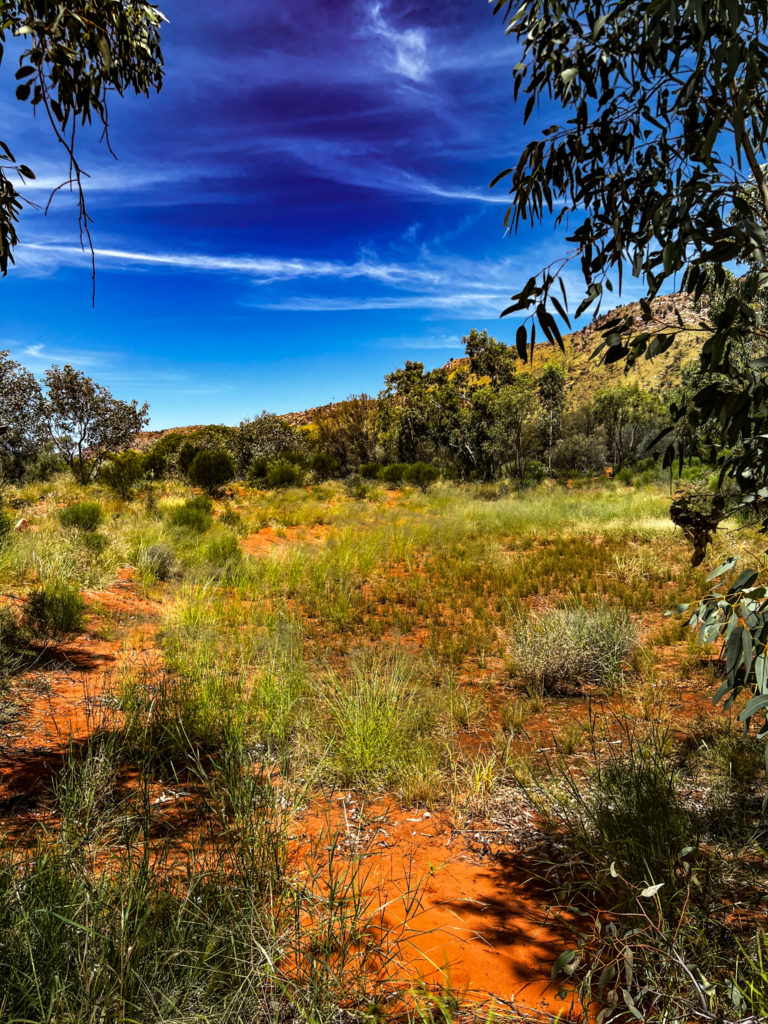
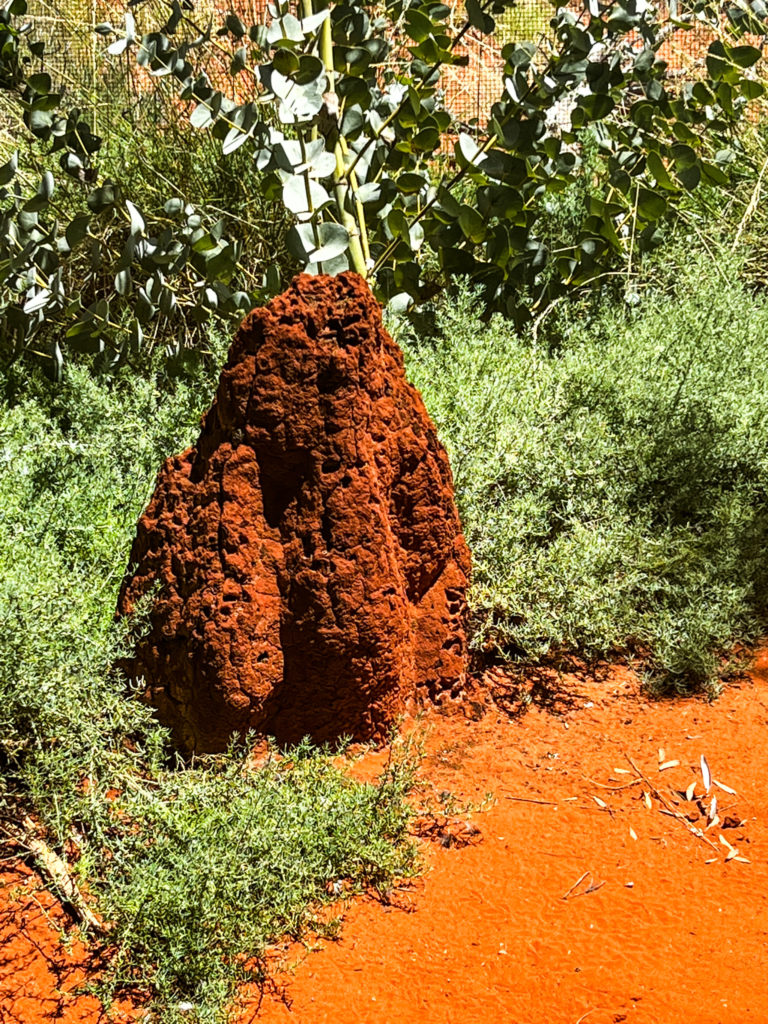
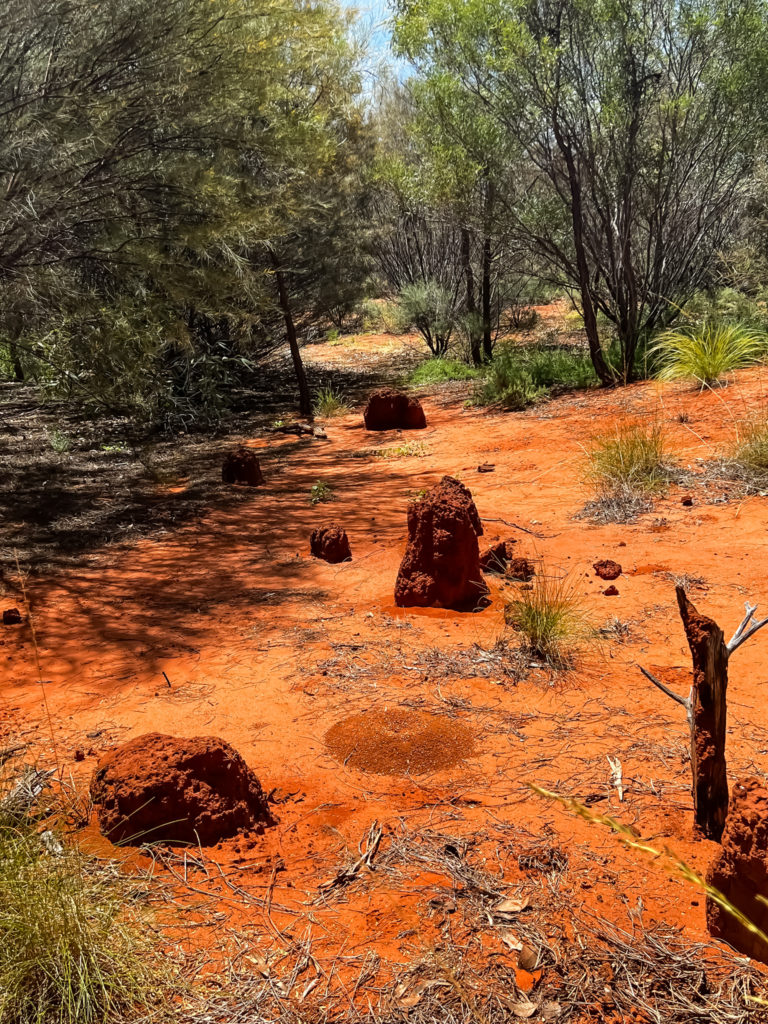
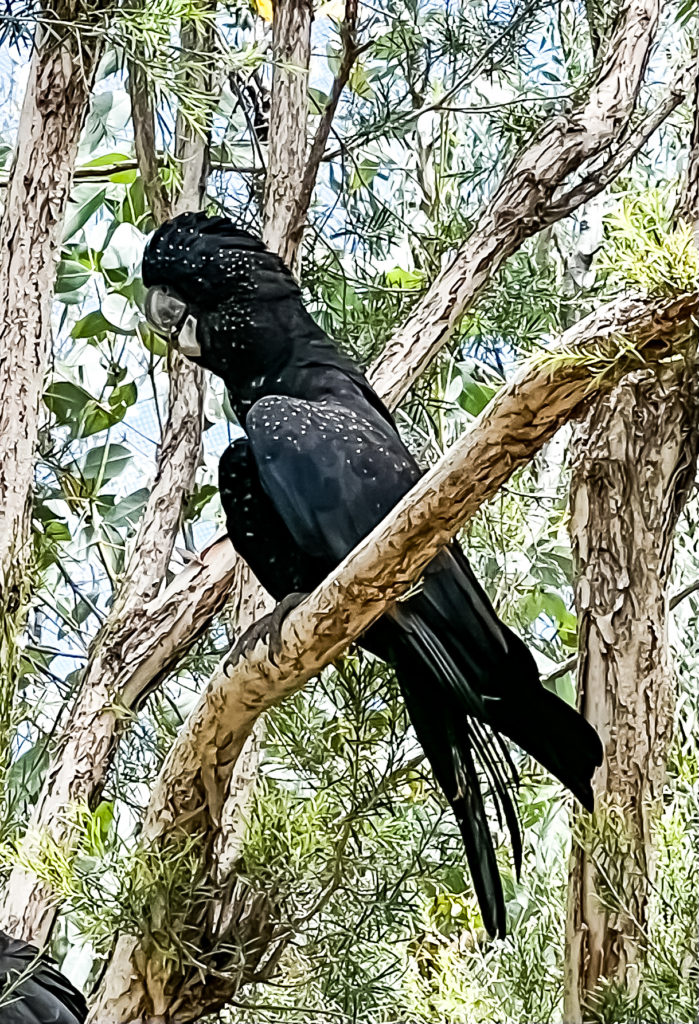


2022 – Red Centre Day 4 TRAVELING TO ULURU
TUESDAY 1st MARCH
WOW. WHAT A DAY!
We left Alice at 8 am and moseyed down the highway to Yulara (the township) and Uluru. 5 hr trip. Many stops.
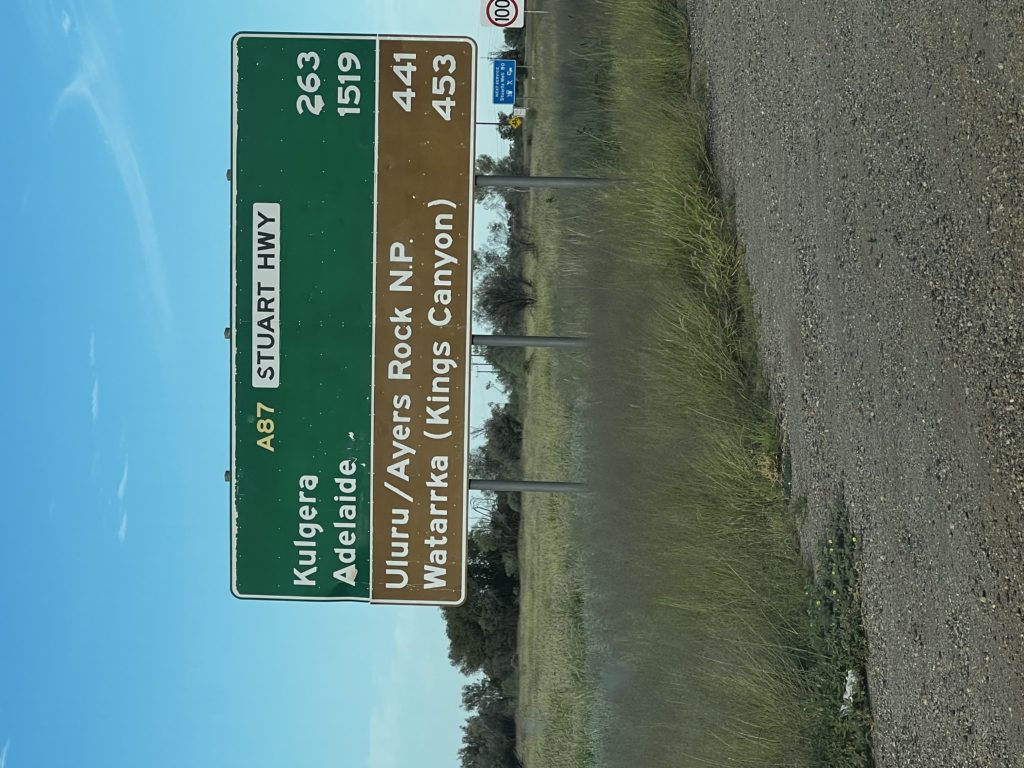
Along the way we passed many brown tourist sights with exciting things to see. Most of them were wells, that turned out to be petrol stations (all with an emu or two in a pen) or derelict hotels/petrol stations. One sign intrigued us. “Cannonball Memorial”. What could that be? Well……remember the movie Cannonball Run a crazy car race. They ran the race in 1994. 4 Deaths.
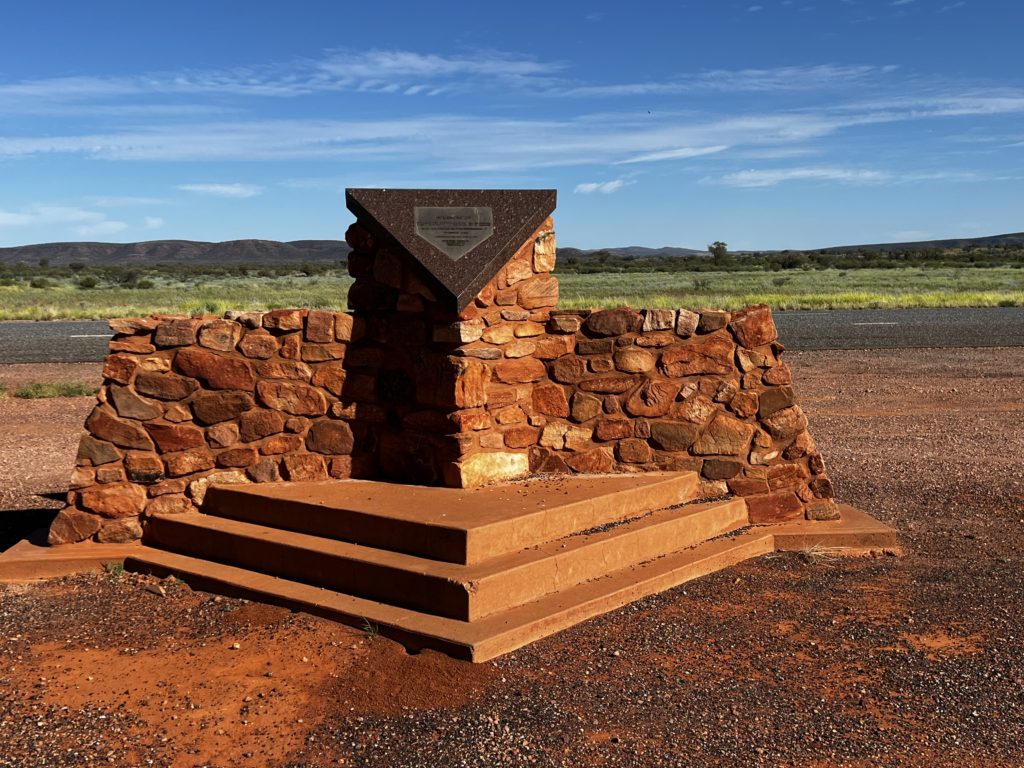
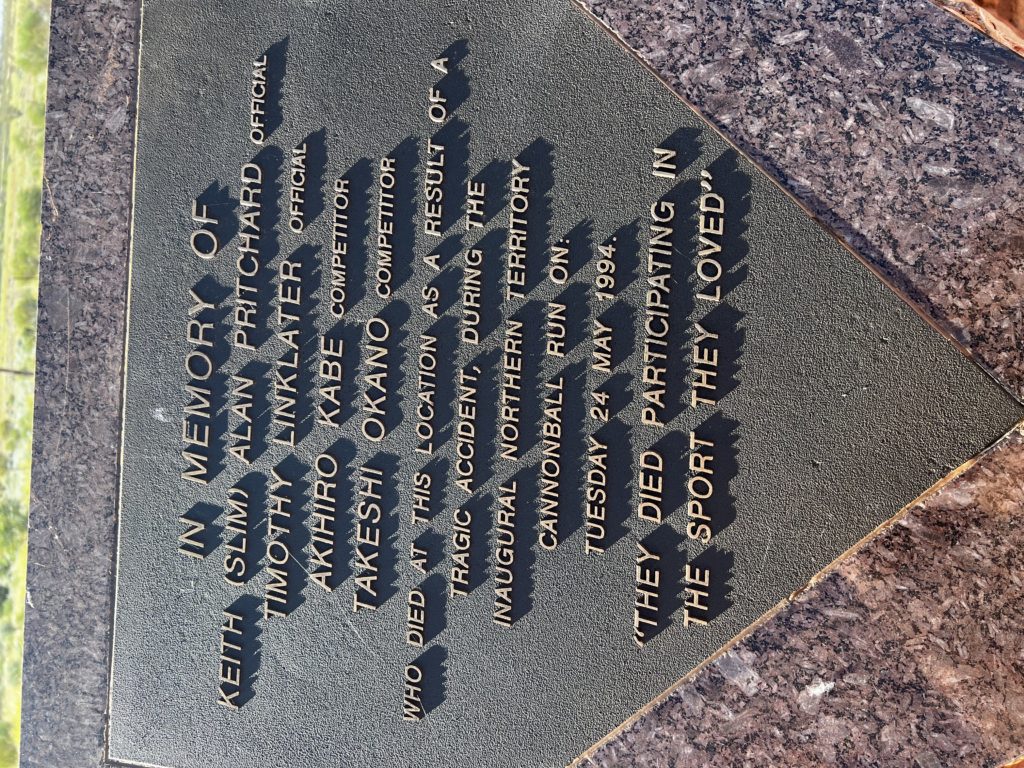
Amazing sights all along the way.
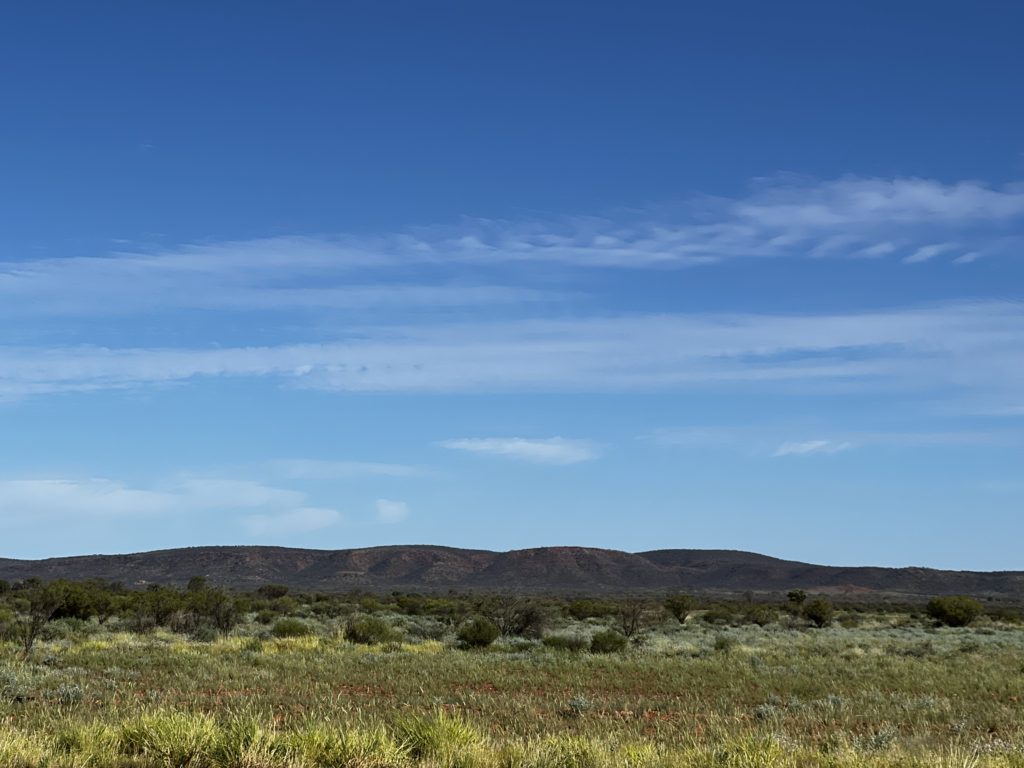
“Toilet Brush Trees” – Allocasuarina Decaisneana… Desert Oaks. They look totally different when mature.
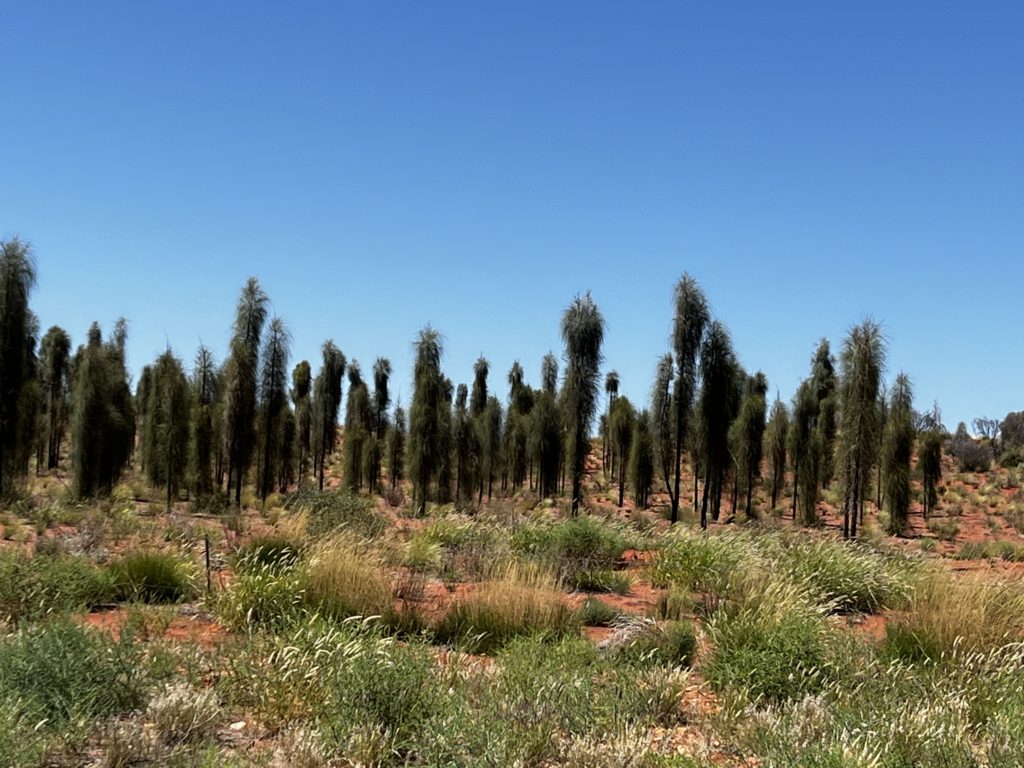
We saw salt pans off in the distance but there was no way to get to them. I tricked Tor with the old “Mt Conner” trick. She took many photos.
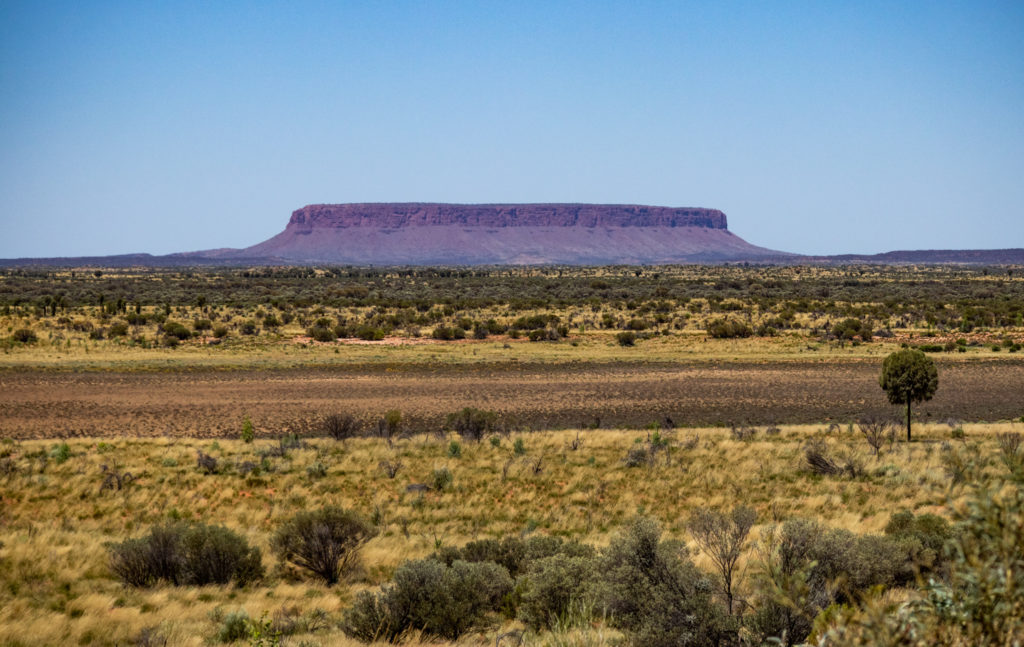
Mt Conner is on the Curtain Springs cattle station in Pitjantjatjara country. Its 859 metres above sea level and 300 metres above the surrounding ground. It is a fantastic example of an inselberg, an isolated hill rising from a level plain. The erosion makes it look so wonderful. Its top is made of same rock as the low domes of Kata Tjuta and the top of Uluru, formed in the Cretaceous period. . We stopped for photos of Mt Conner, because it may not be Uluru it is still mighty spectacular.
On the other side of the road, up a decent sized sand dune was….. an amazing Salt Pan. And I mean amazing. One of the prettiest landscapes I have seen. The sand was the most intense red. The sky so blue. And then this massive salt pan – brilliant white.
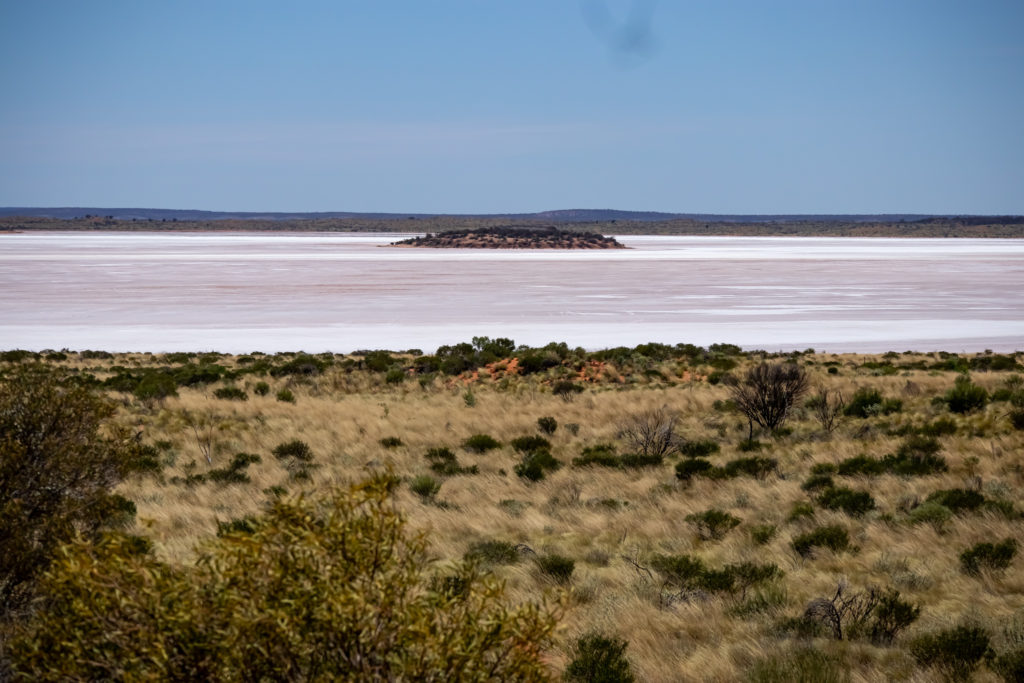
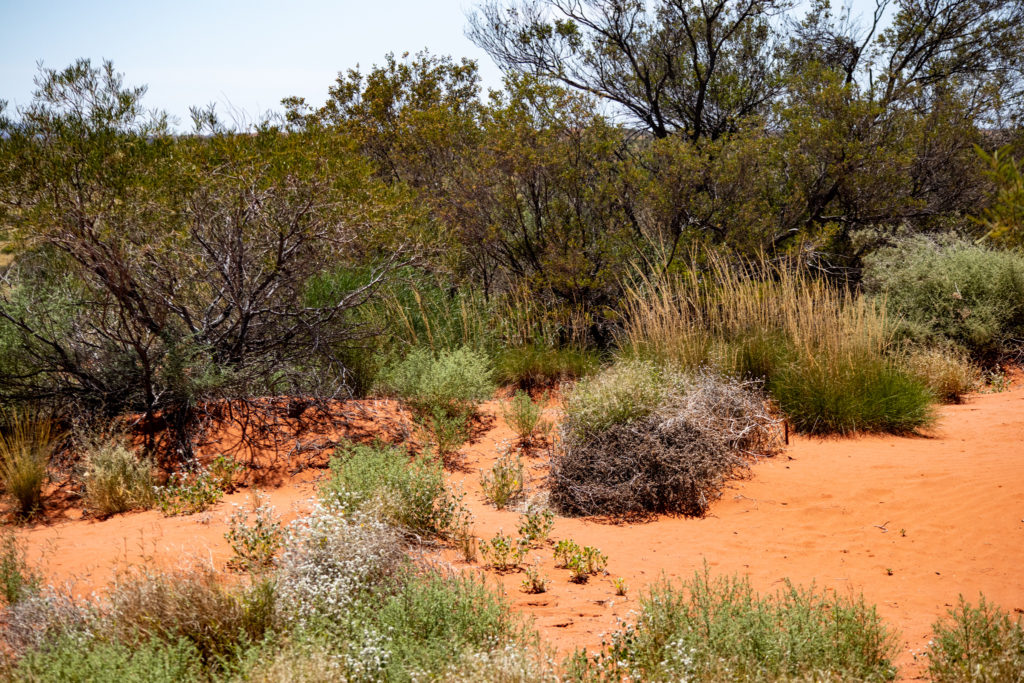
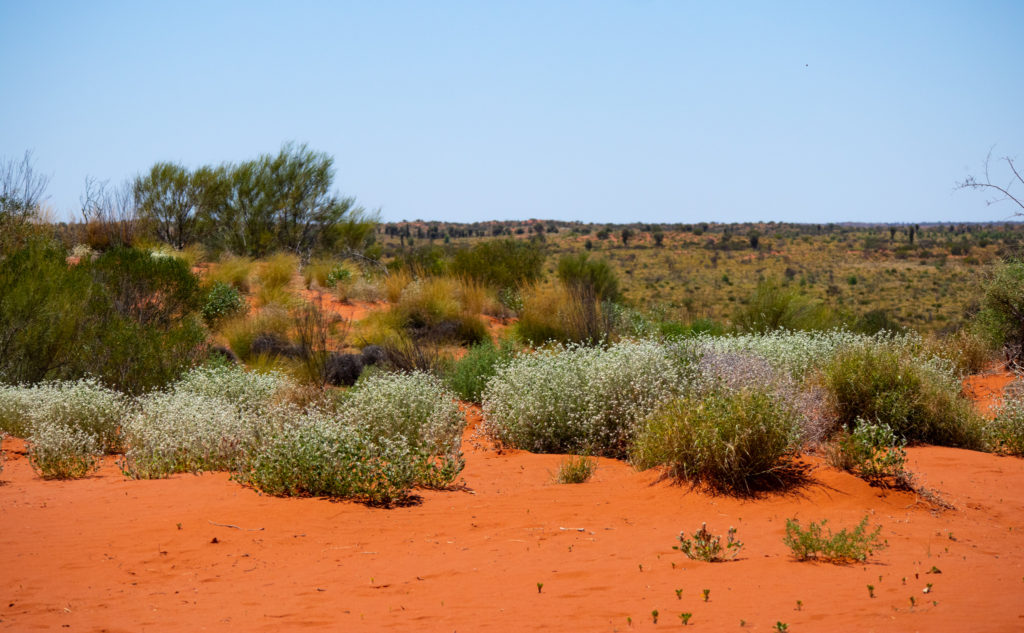
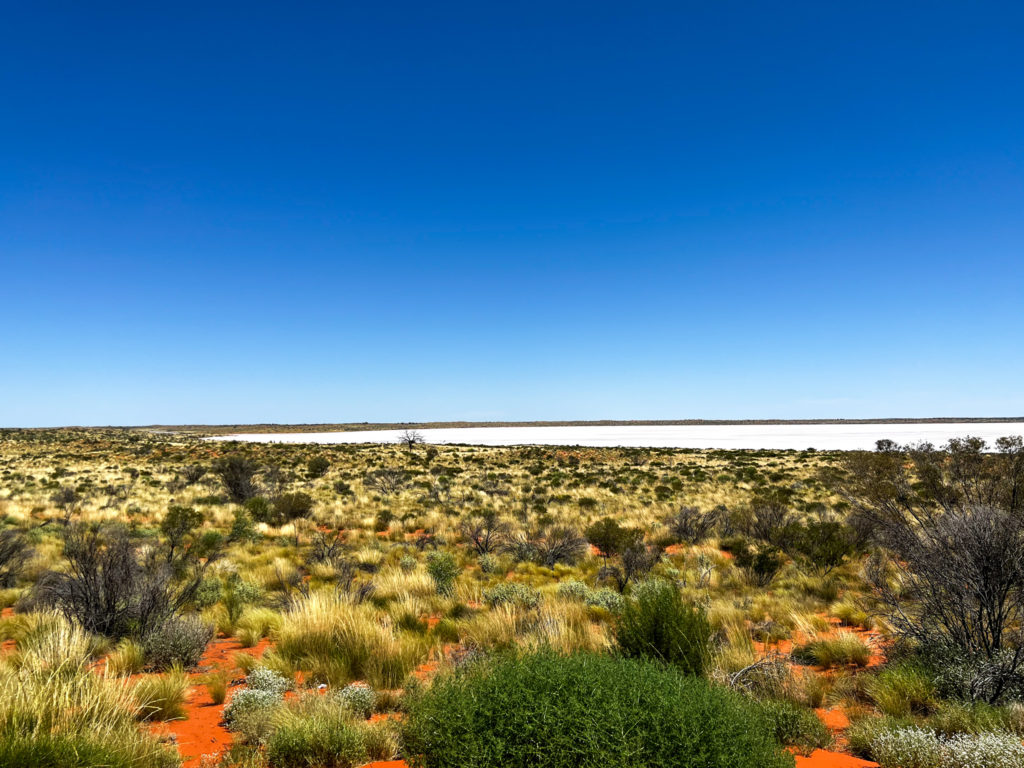
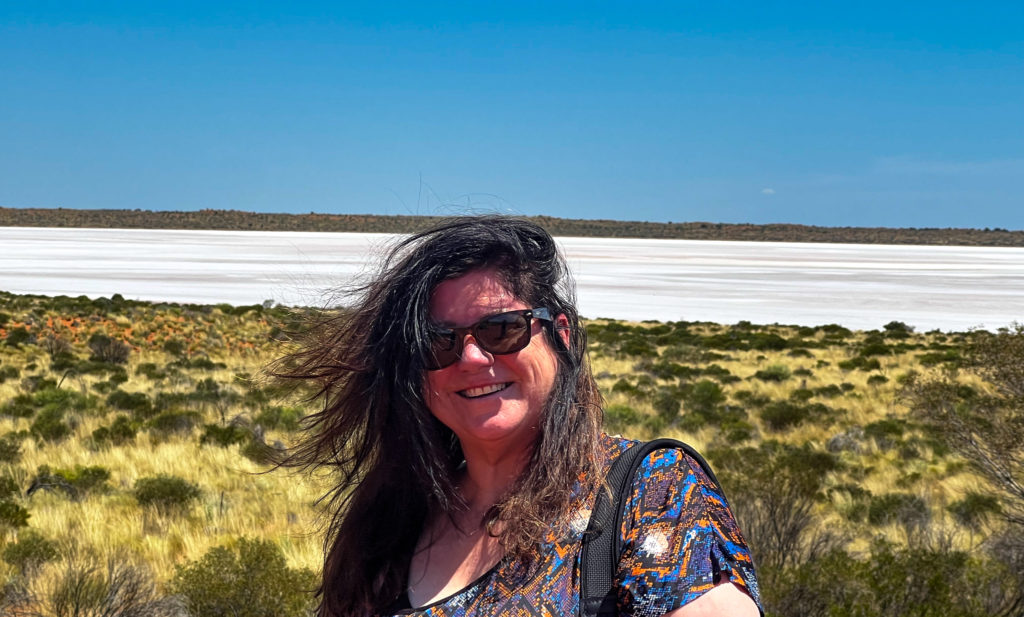
Uluru could be seen from 50 ks away. Exciting. And got more exciting as we got closer. We booked into our hotel at Sails in the Desert, very nice, then headed off for a “quick look” at the mighty Uluru. Stunning. Insanely amazing. Powerful! It’s about 20 ks from the town. No walking around today. They close all the trails at 40 degrees. They get sick of rescuing fools who don’t drink enough. When you enter the park they give you a quick talk and a handout about drinking etc.

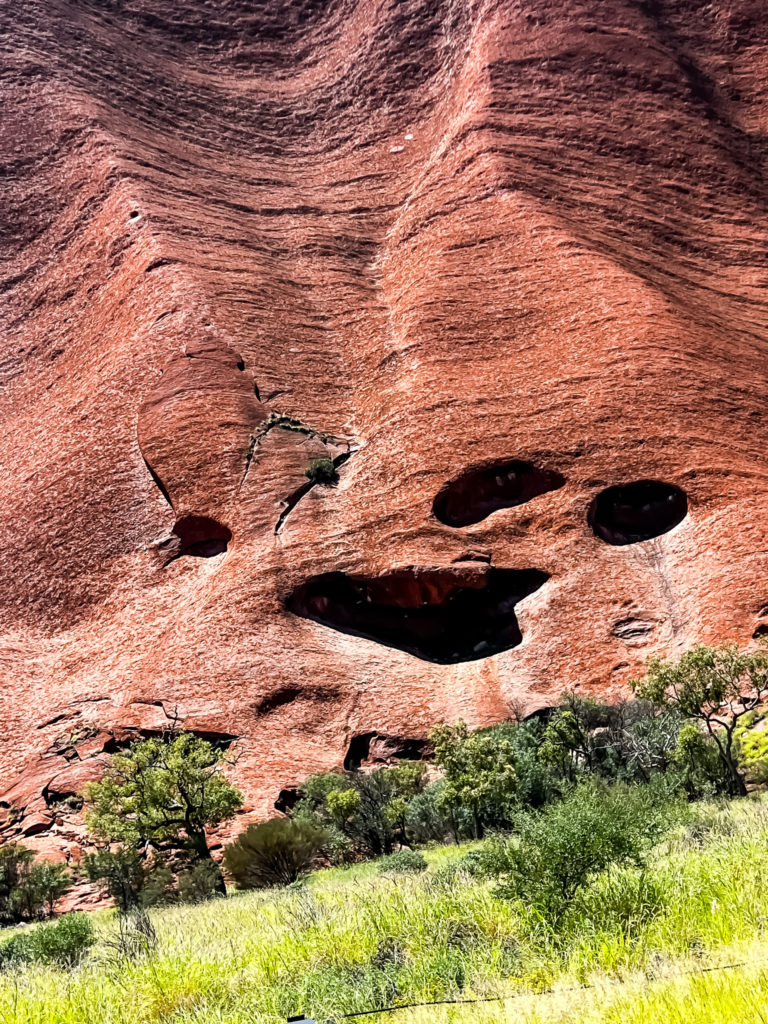
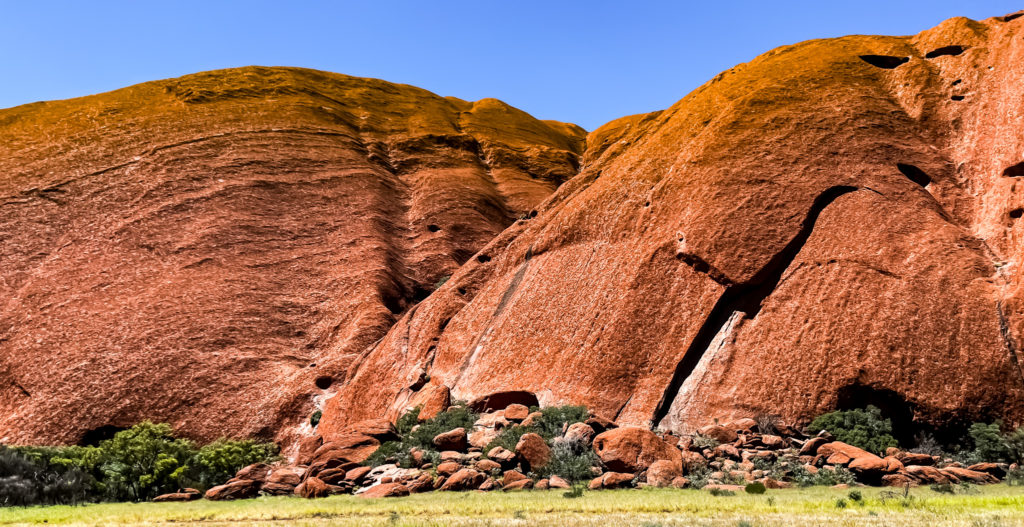
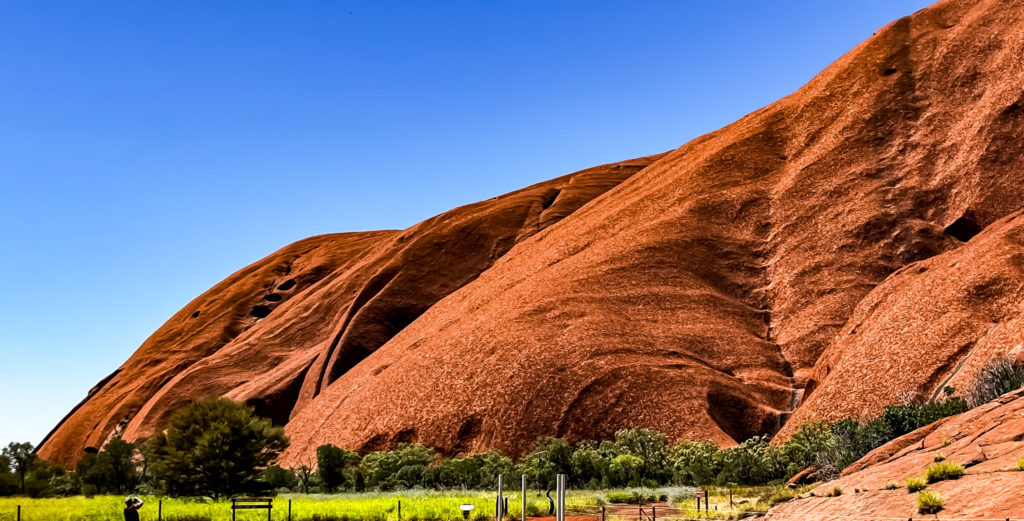
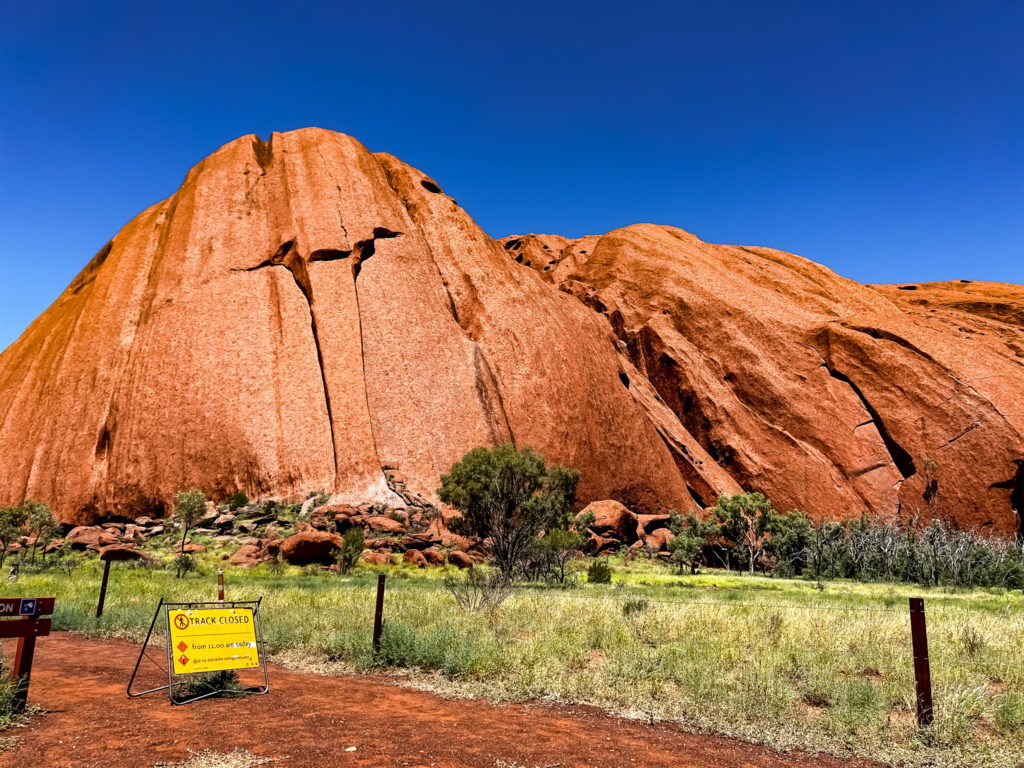
Back into town for a late lunch. A drive around town to do a few things, including filling up the car. It took 40 litres. At $2.46 a litre. $95, the gauge said just under half tank, in a small car!!!! Bloody hell. Then of course back out to the rock. Clouds rolled in and many had down pours and cloud bursts. But no “Rain on the Rock”.
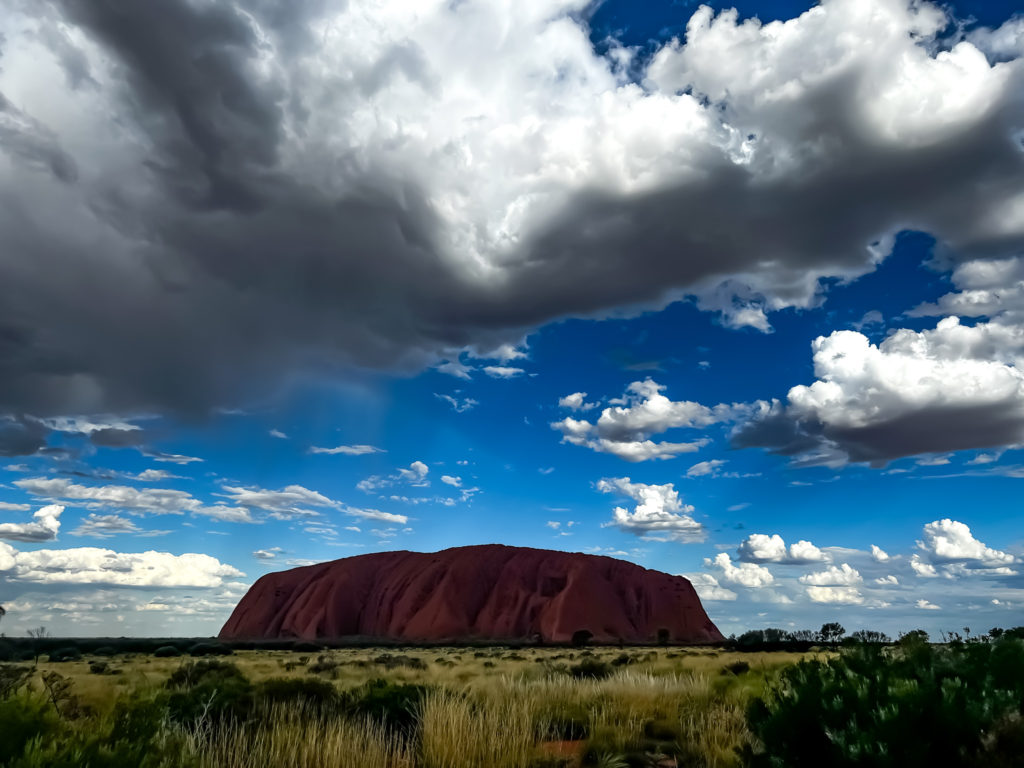
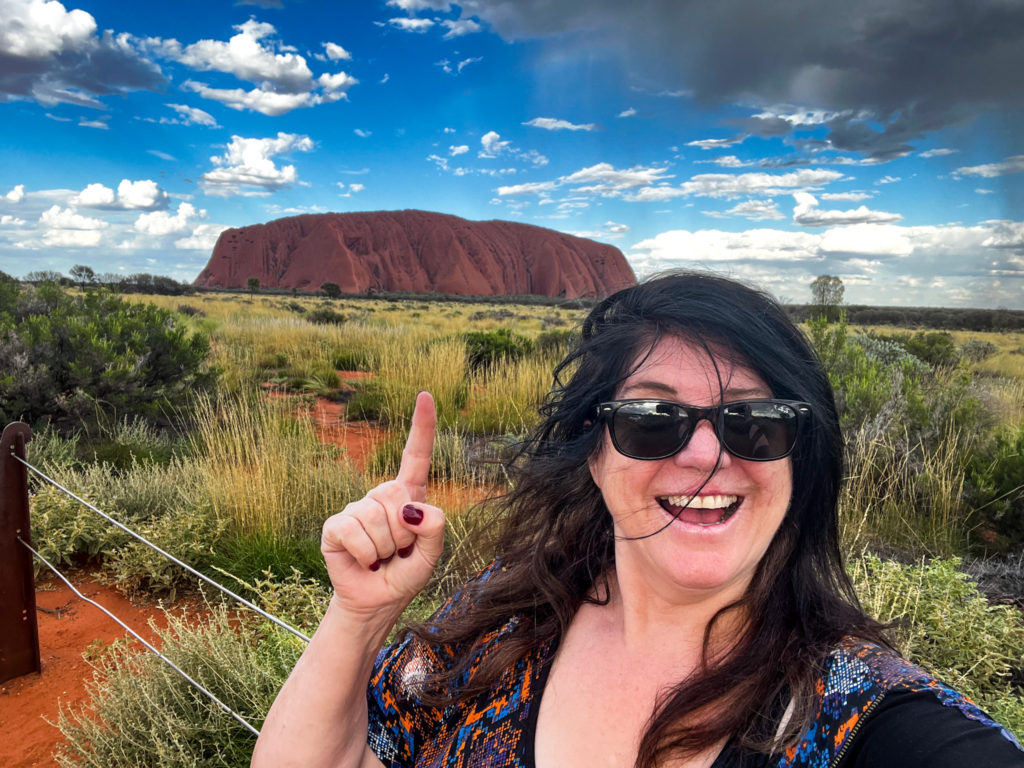
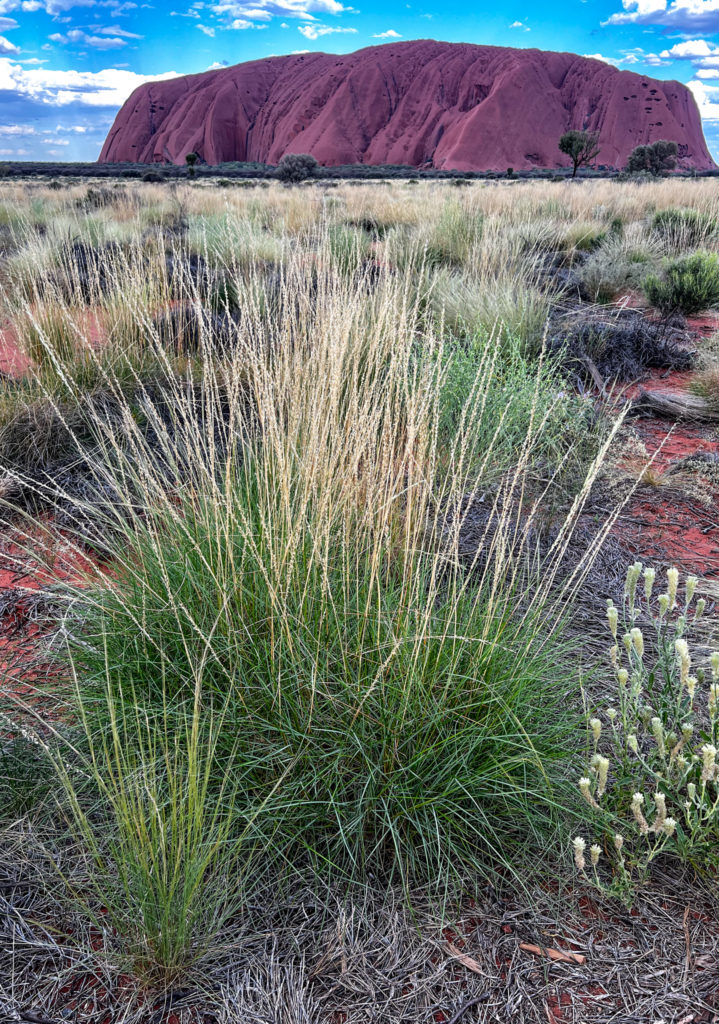

We waited for sunset but the stunningly blue sky clouded over and there was no sunset colours. Maybe tomorrow. Although Kata Tjuta looked pretty good in the clouds.
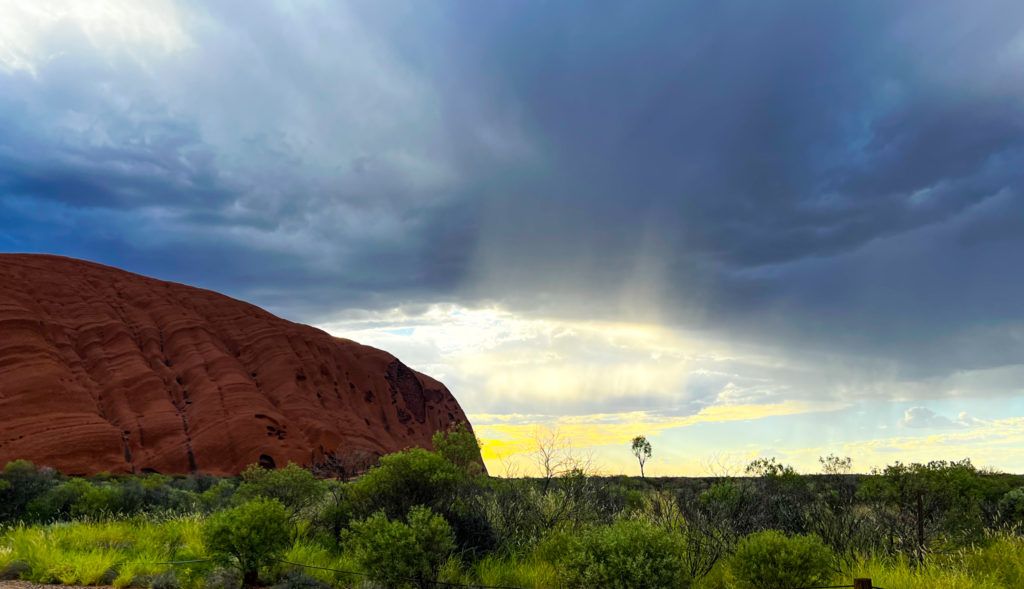
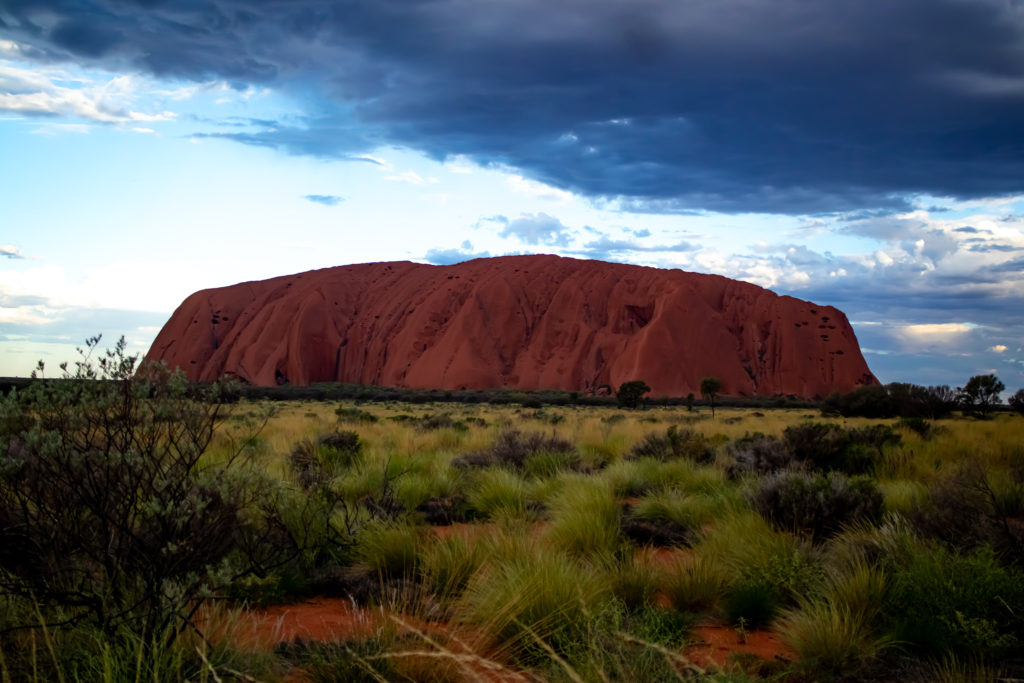

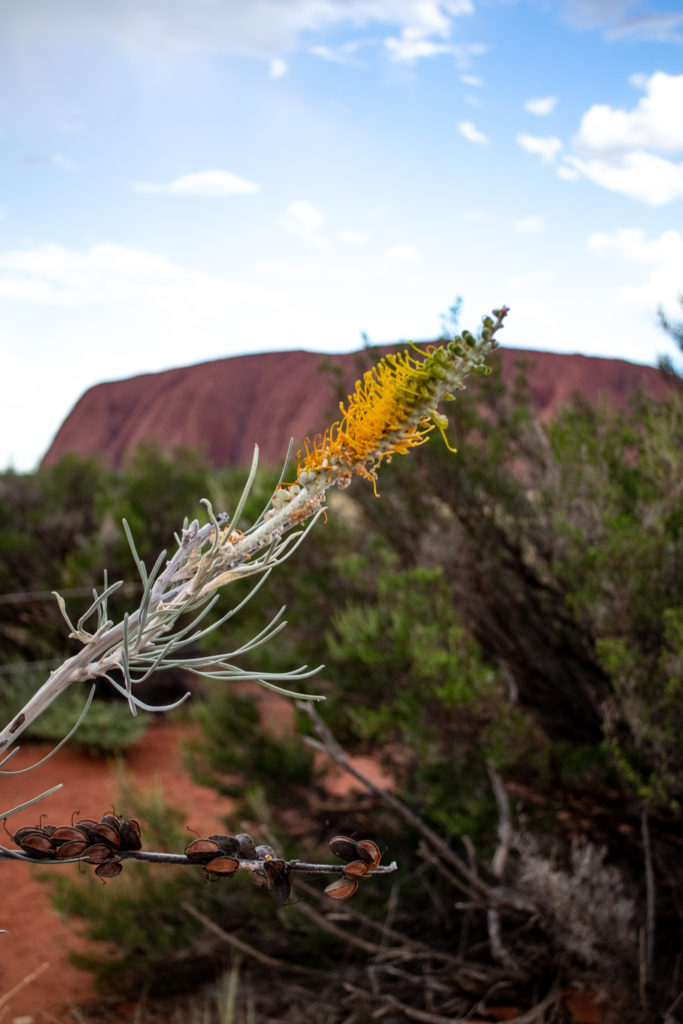
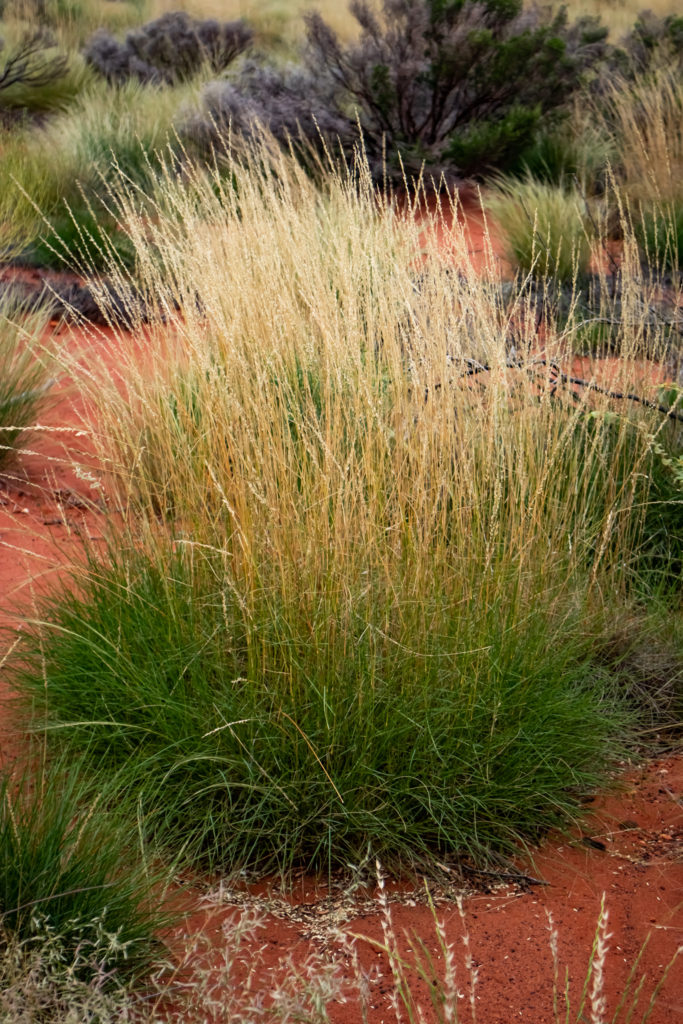
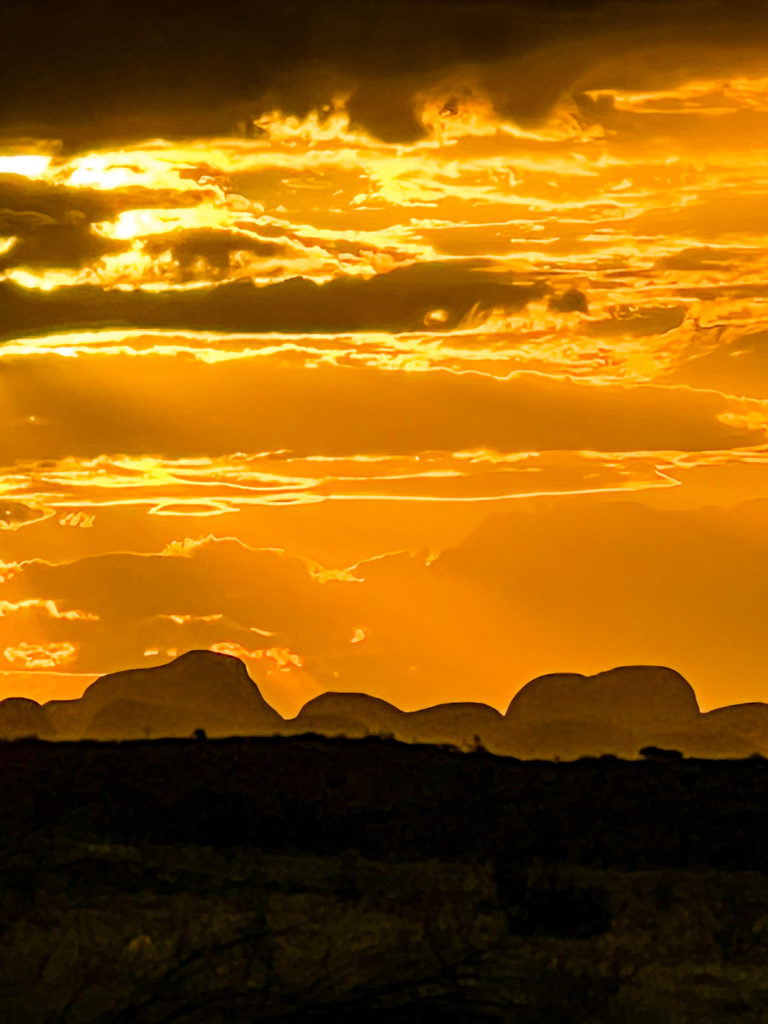
2022 – The Red Centre – Day 5
Up at 4.30am for a tour. Who knew that 4.30 happened twice a day. Off we went to meet the bus for our tour “Field of Lights and Uluru Sunrise”. There is one benefit of being up so early. The temperature was so beautiful. 27 degrees. Much better. As we all waited for the bus it was good to see a number of the tourists had their fly nets on just in case the flies were up early. We were heading off to a dark viewing of the “Field of Lights” and a sunrise over Uluru. Field of Lights is an art instillation by Bruce Munro, a British artist who specialises in immersive large-scale light based installations. He travelled to Uluru in 1992 and drew a design of his idea based on desert flowers from this region after the rains. It is made of 50,000 hand crafted cylindrical clear spheres and 50,000 frosted ones, connected by 380 ks of fibre optic cabling and 144 projectors.
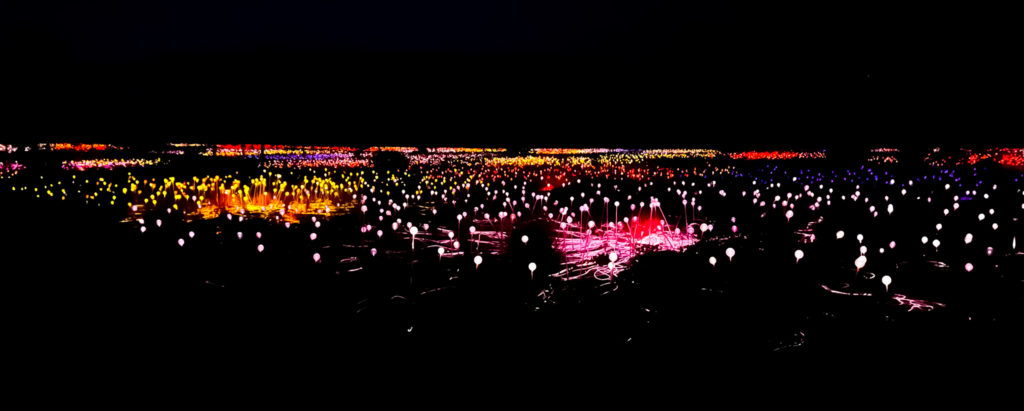
Our tour took us to the top of a sand hill to look down over the field. The colours pulsed red, white and blue, green and through all in-between.
We then walked down into the installation and saw it at ground level. Wonderful. No tripods allowed so not many sharp photos.
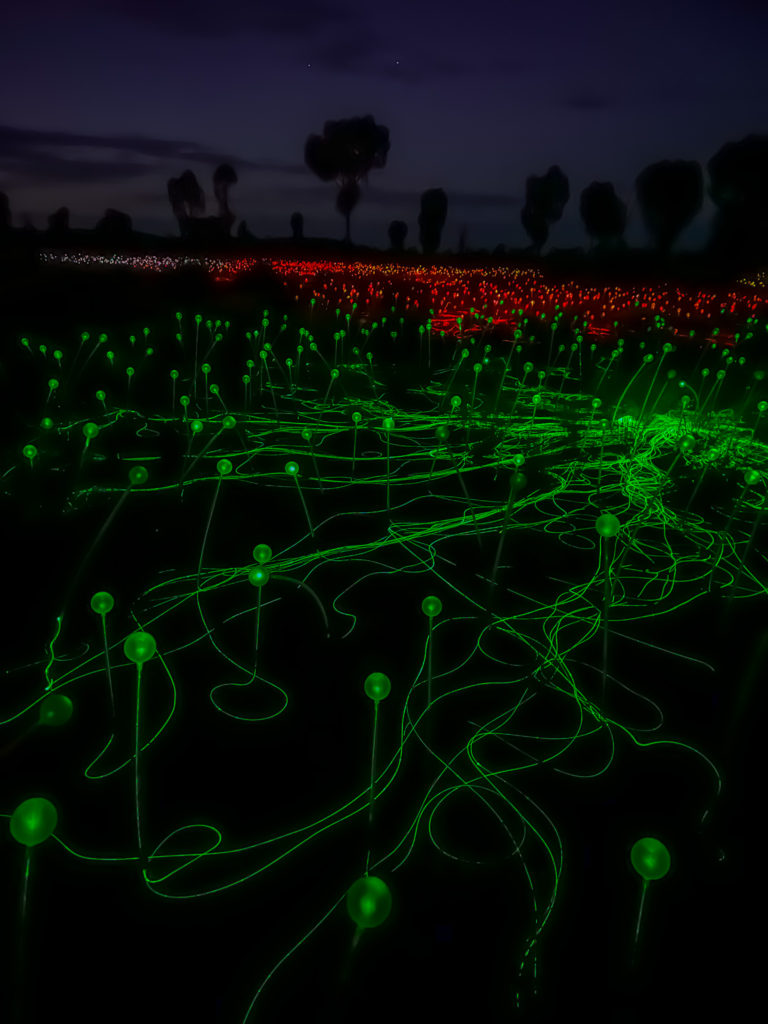
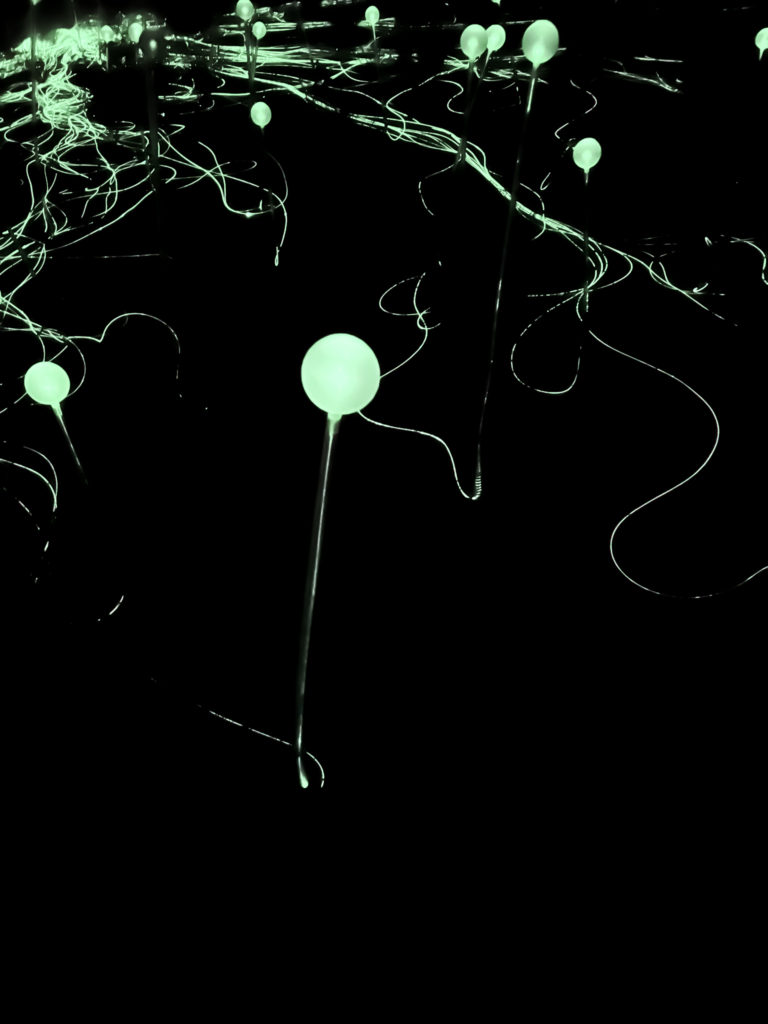

It was then back up the hill for a cup of tea and a sun rise. Amazing. Uluru went from a silhouette in the back ground to the beautiful thing it is, moving closer and closer as the colours came out.
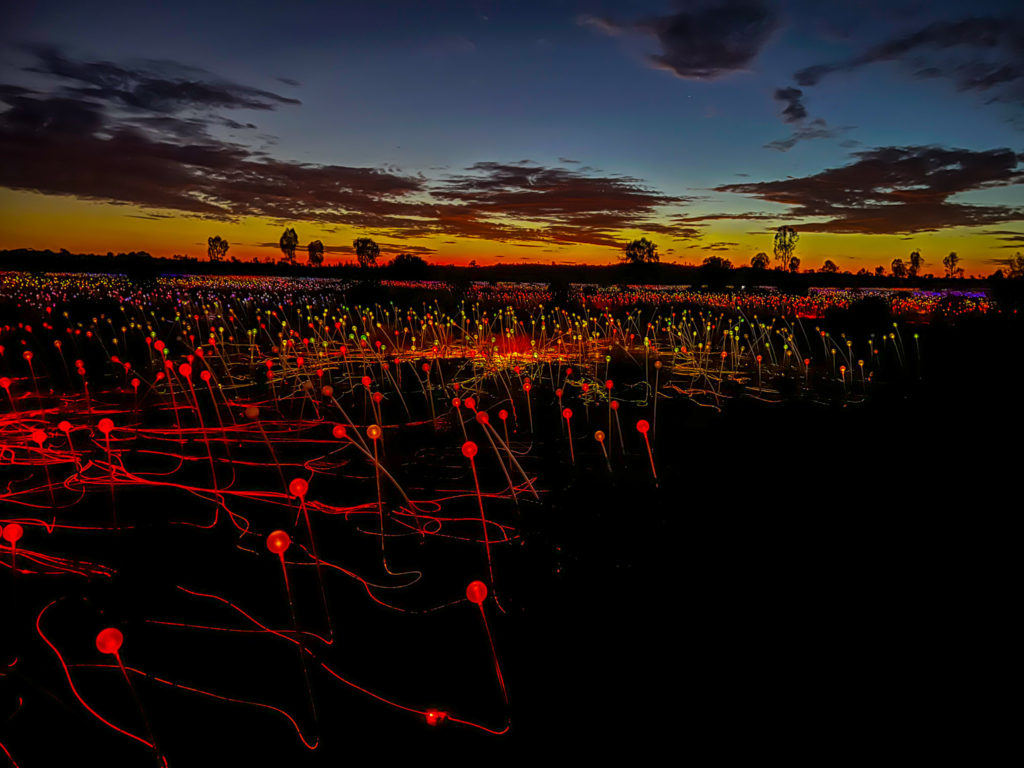
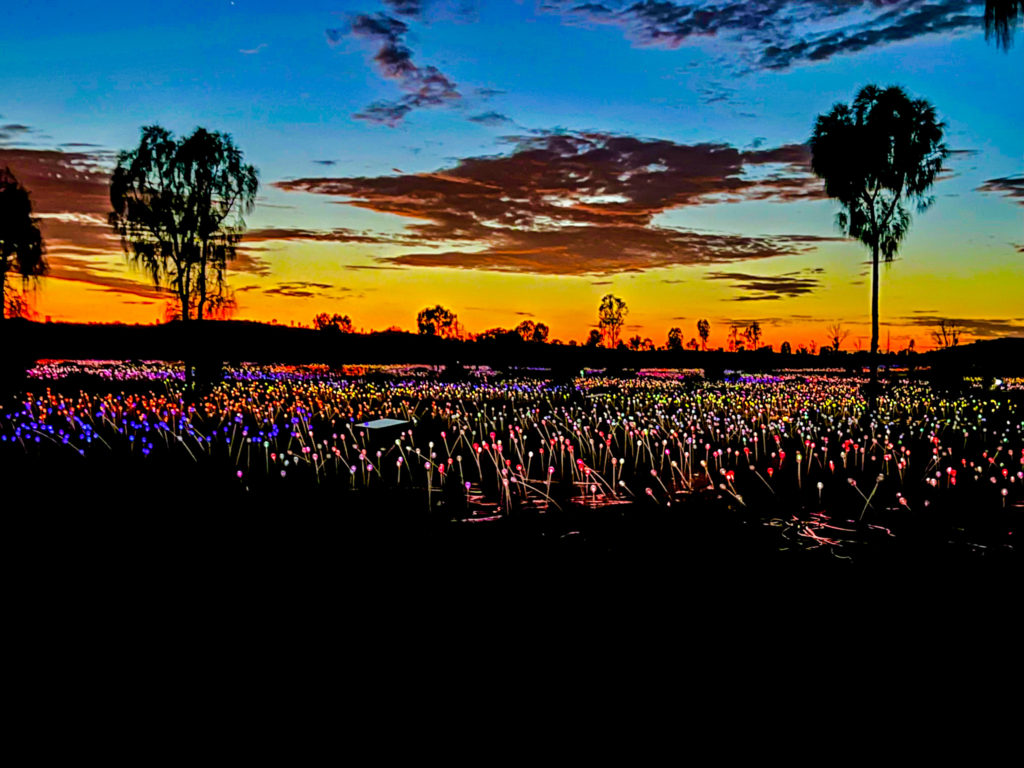
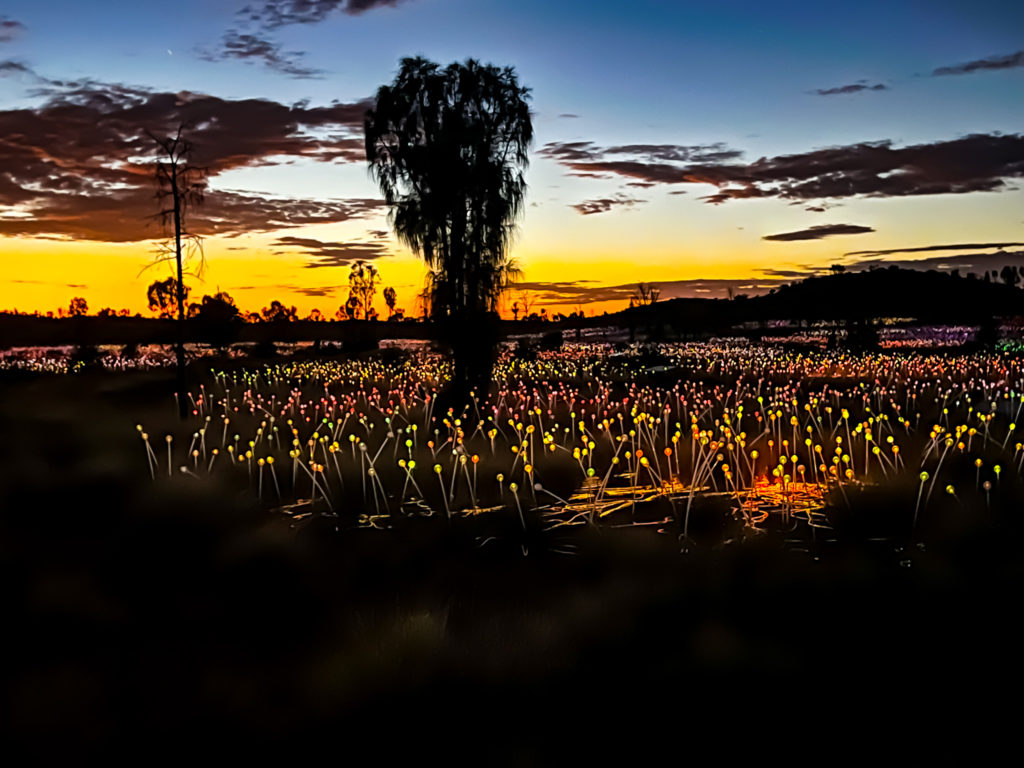
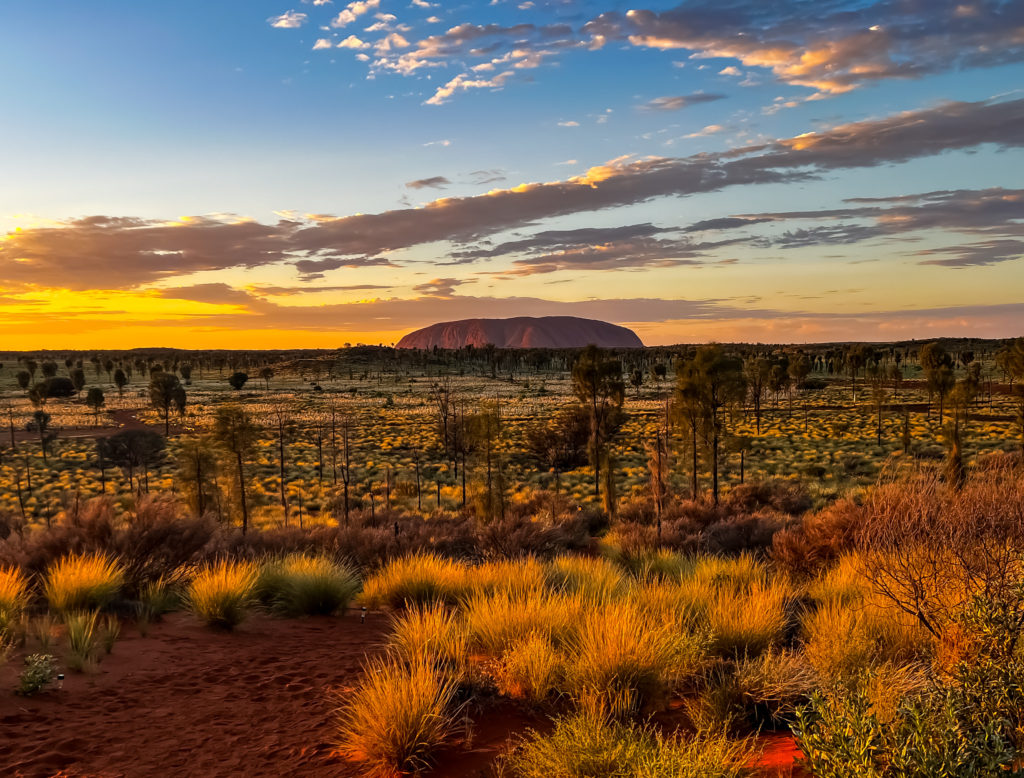

After that it was back to the hotel – to change gear, eat something, refill the water bottles (and get more from the fridge) and off to Kata Tjute. It’s 46 ks from Uluru and a lovely drive. Part of it goes through ‘dune country’. Only small dunes but very different flora. And then there are the 36 domes, rising up from the flat ground. Kata Tjute means “many heads” in the Anangu peoples language.
They have lived in the area for over 30,000 years. It’s a sacred site with many links to their creation stories. Anangu believe they are the direct descendants of these beings and are responsible for the protection and appropriate management of these ancestral lands. Thus the importance of “Handback” when the land title was given back to the traditional owners in 1985. Anangu people now sit on the council to run the area. They leased the land to National Parks but help to run the park.
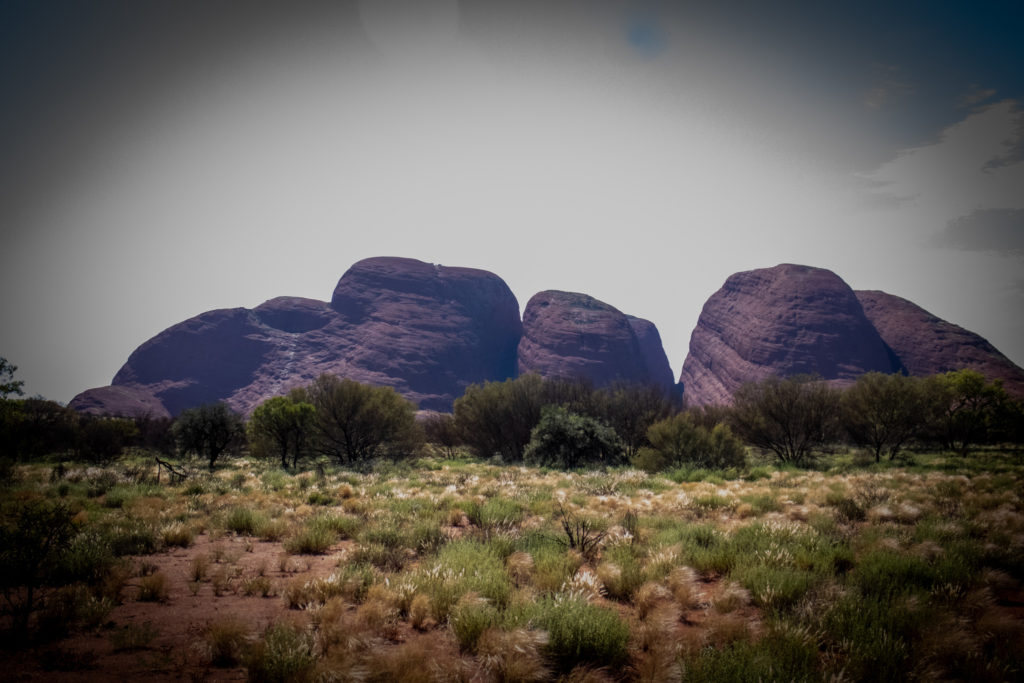
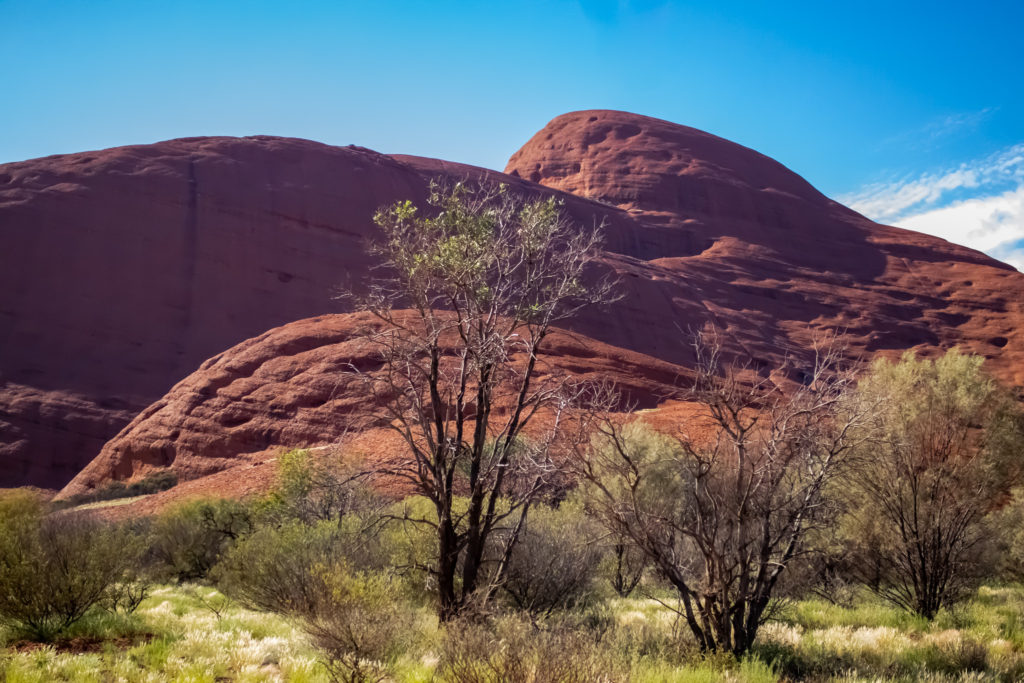
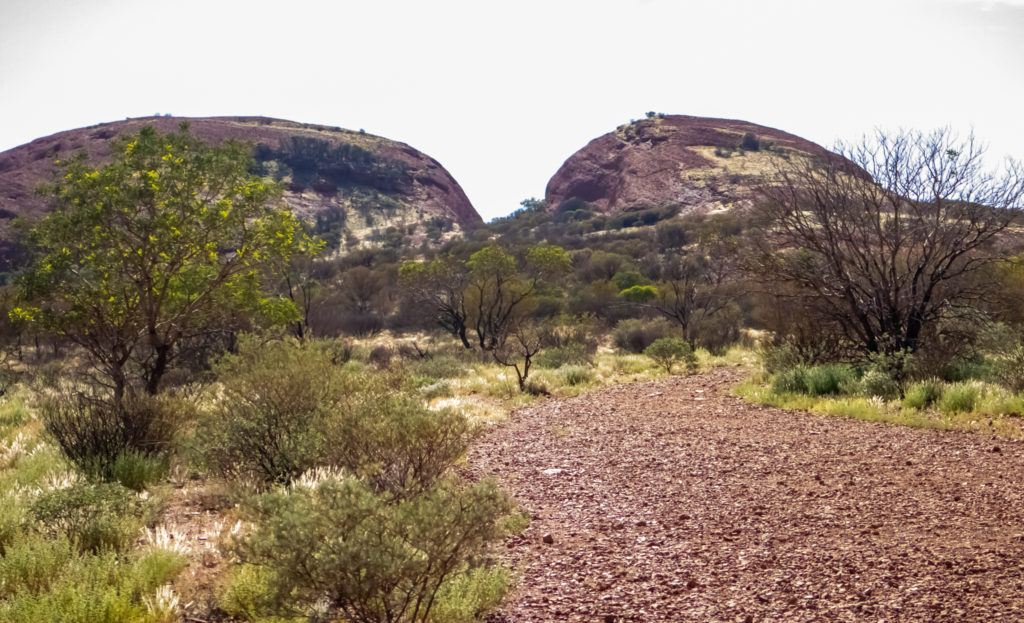
The rock of Kate Tjute is very different to Uluru. This is a massive conglomerate lump of many rocks, mostly washed down from the Peterman Ranges when the land was under water approx 500 million years ago.
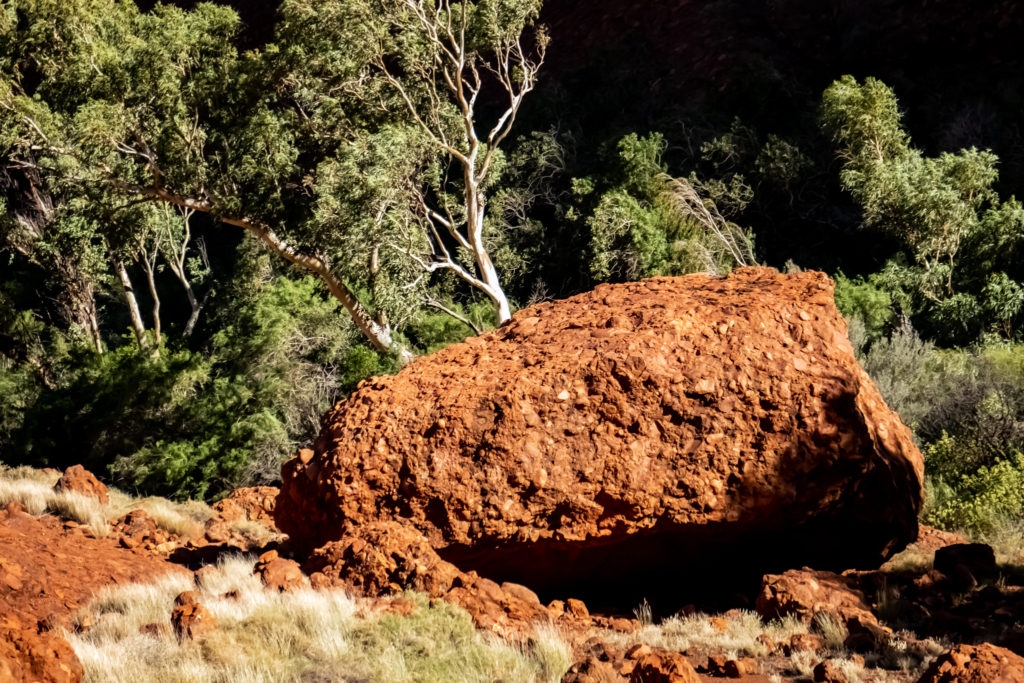


The Peterman Ranges at that time were bigger than the Himalayas!
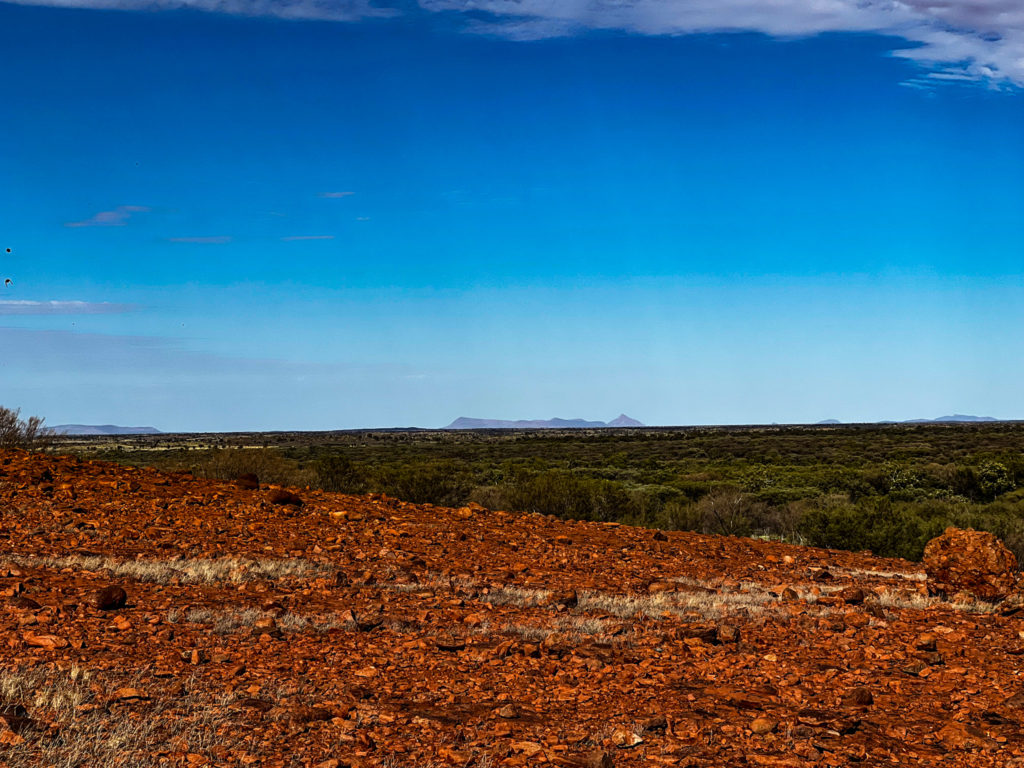
We did the Walpa Gorge Walk. A rocky track that rises gently (but is rough) and passes rare plants and leads to a grove of spearwood. Spectacular. Although this gorge is the hottest place in the National Park, reaching 59 degrees, it was so lush and beautiful. Waterholes, thick vegetation including many endemic plants and other desert plants. Fantastic boardwalks and bridges got you over the worst parts.
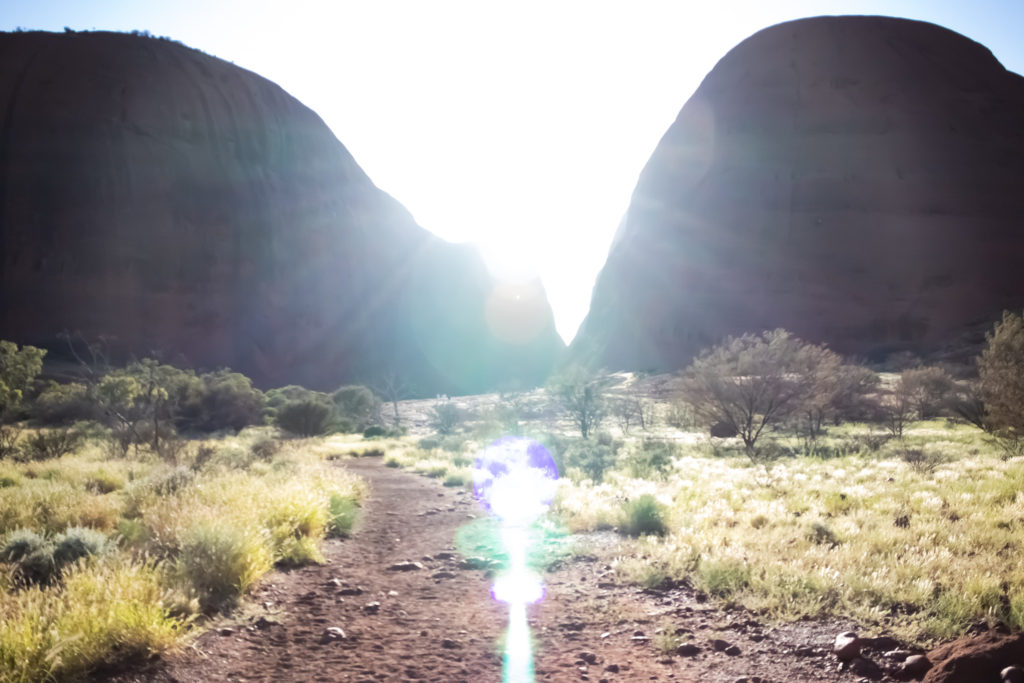
The top end, in shade, was incredible. Cool, stunning, many, many birds. Worth it.
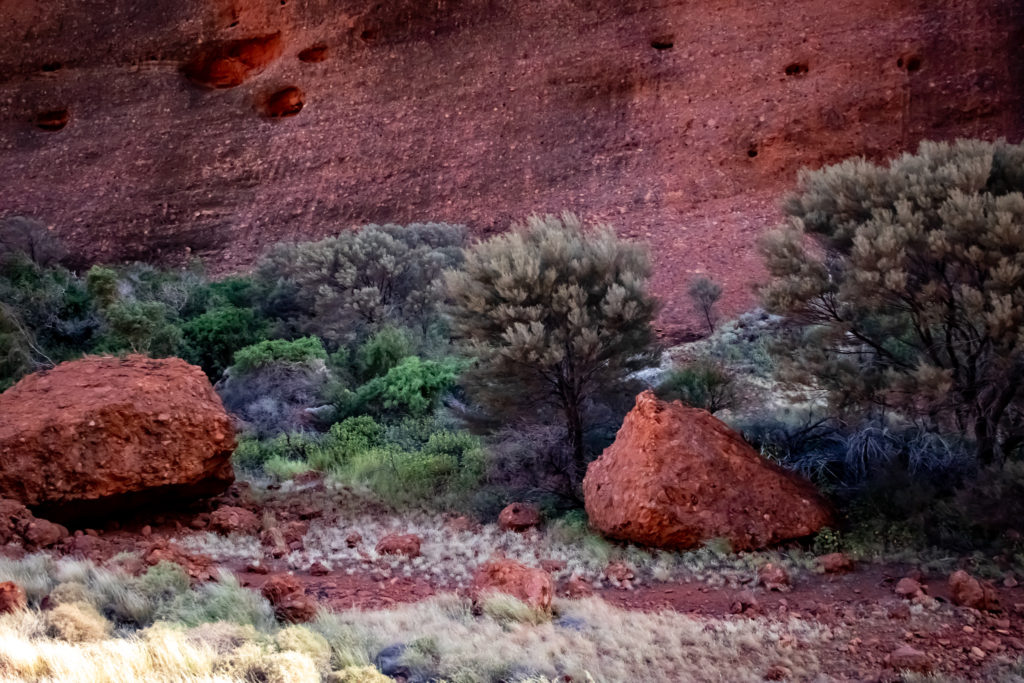


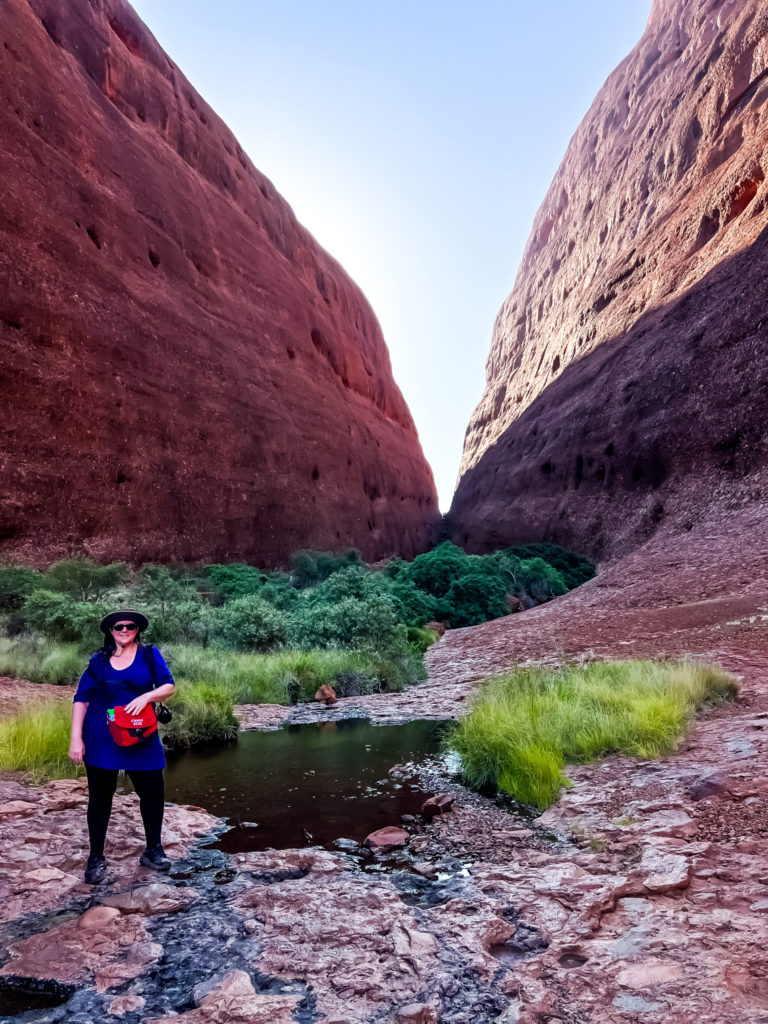
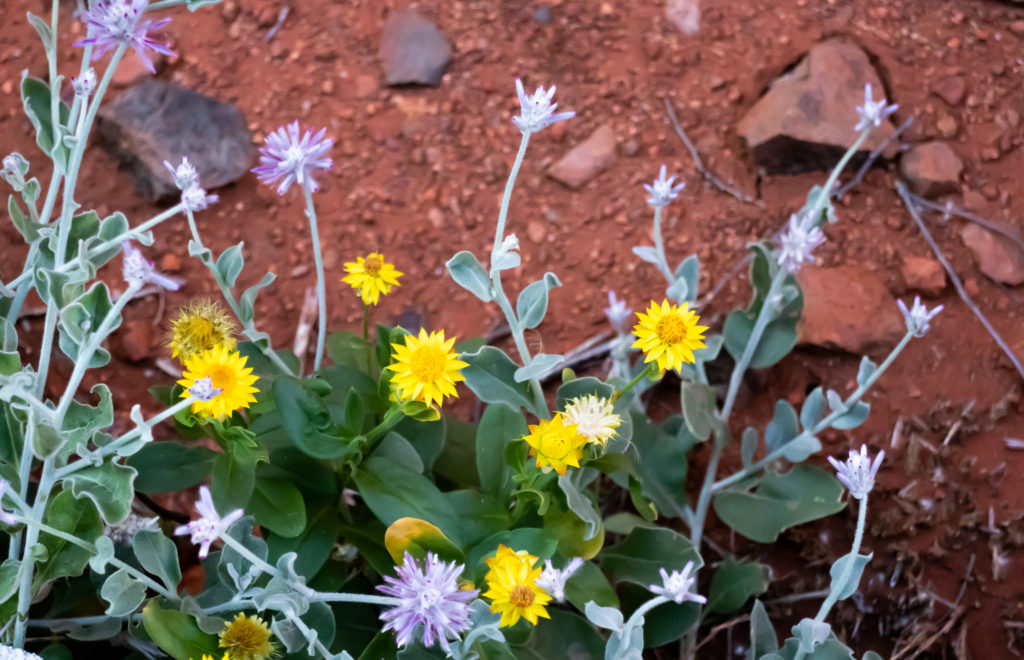
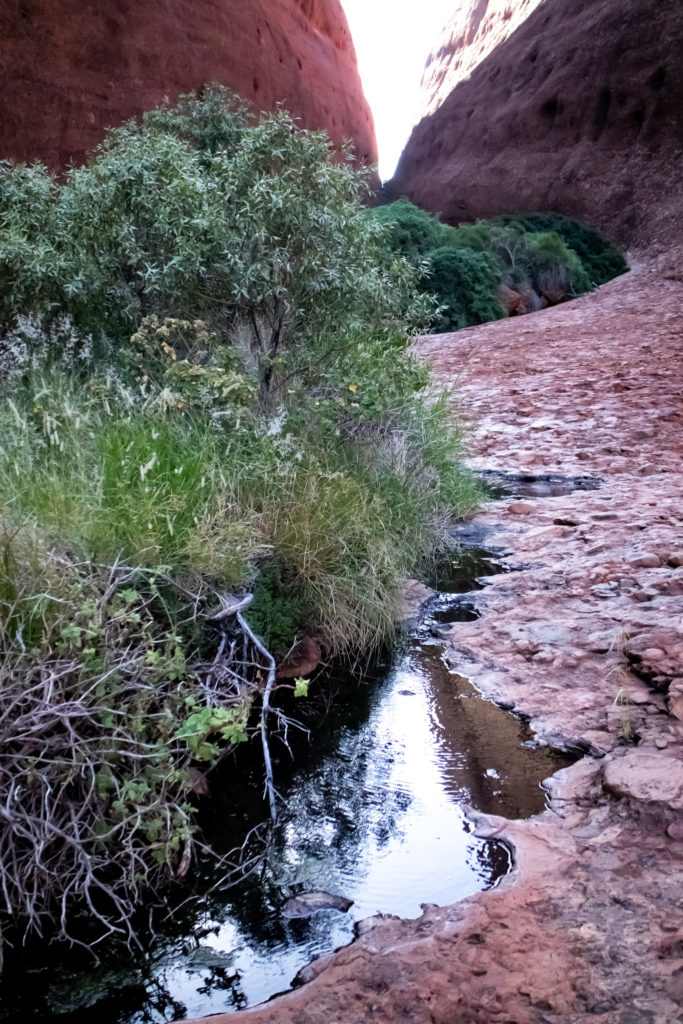
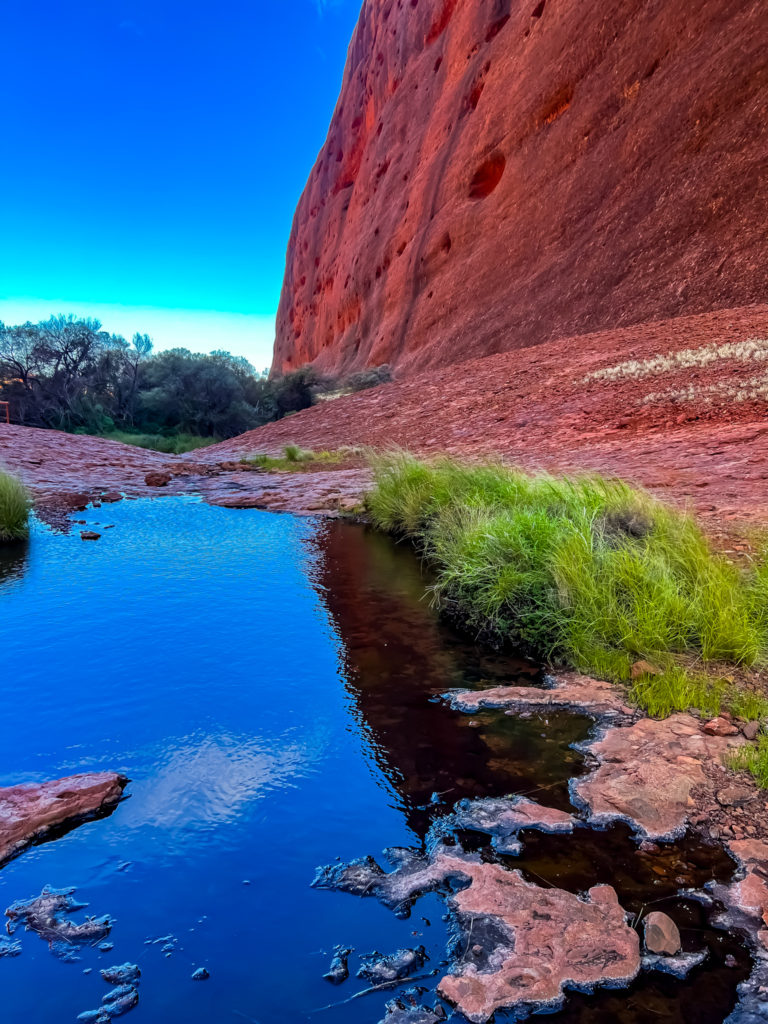
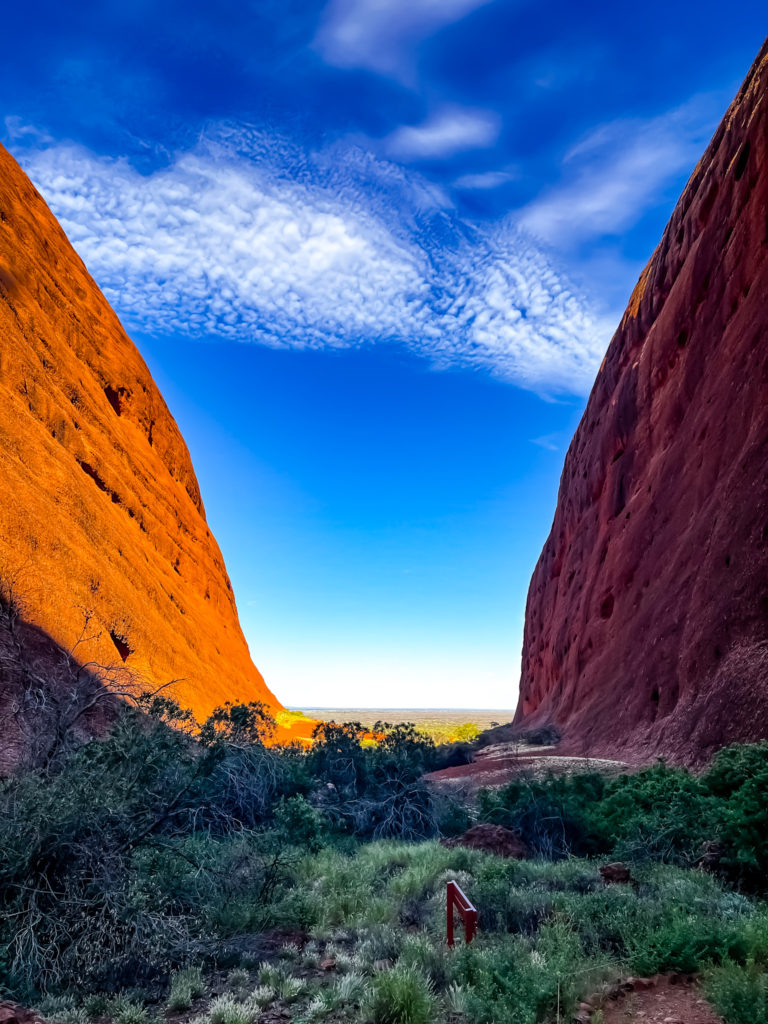
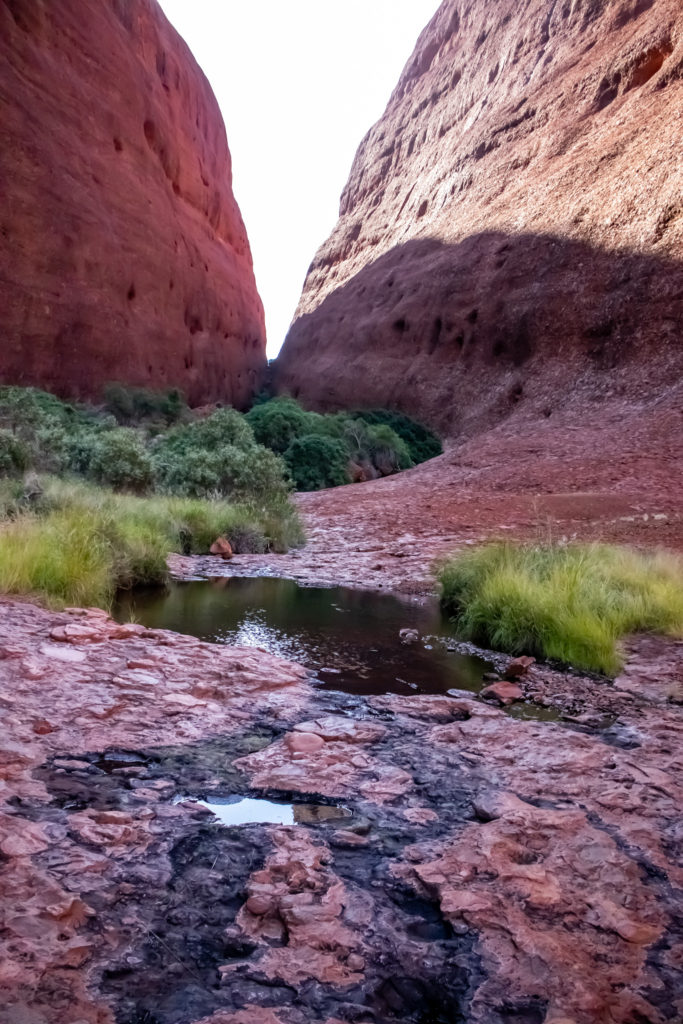
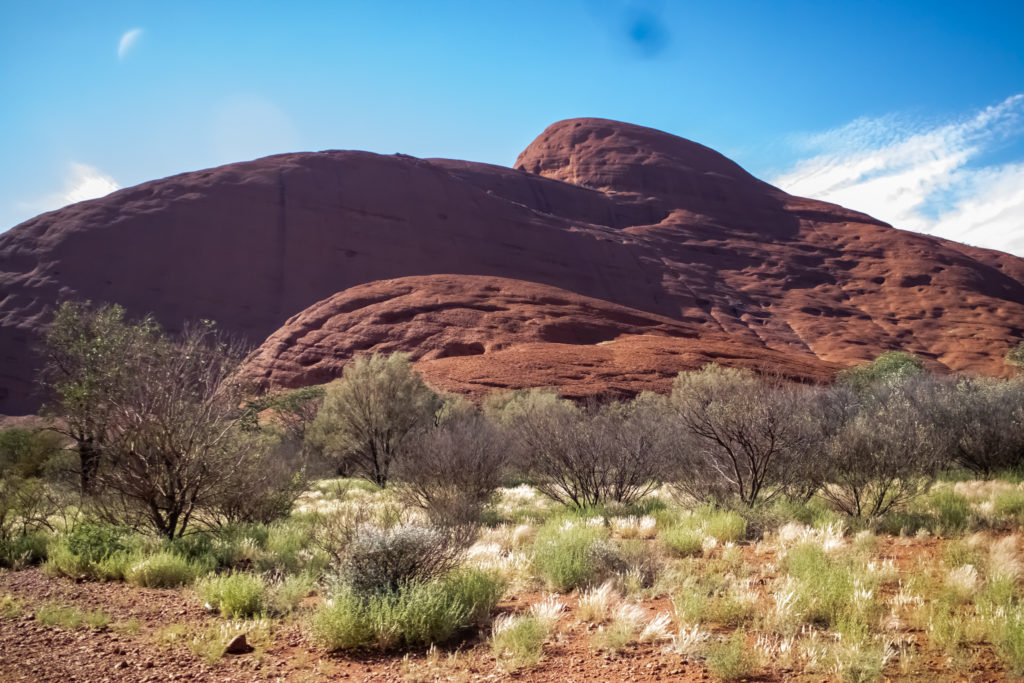
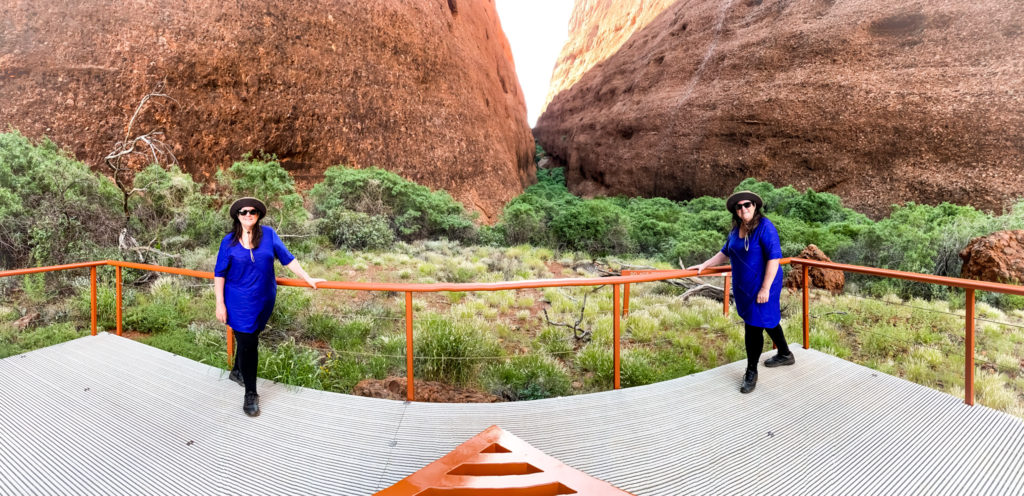
And then back via the different viewing stations. Kata Tjuta dunes viewing area was stunning. A large sand dune with views to both Kata Tjuta and Uluru. In fact everywhere was dead flat, giving 360 degree views of………well, everything. The area has four main landscapes. Pila – (sand plains) mainly Desert Oak and spinifex. Puti – (scrublands) grow in the foothills. Mainly Mulga. Puli – (rocky areas) where Kanyala and Native tobacco grow. Karu (creek beds) are within the Puli and grow large Eucalypts. Lots of flowers, ant nests with little sand towers on top.
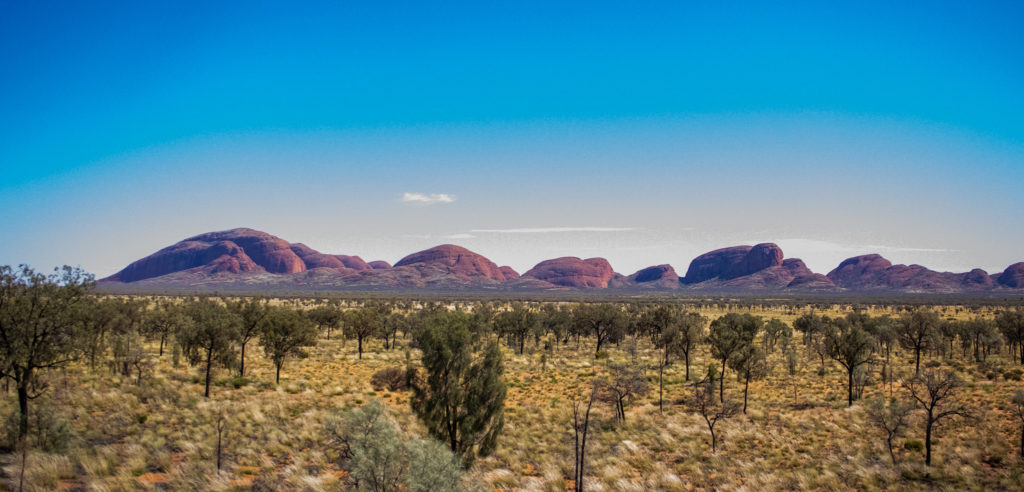

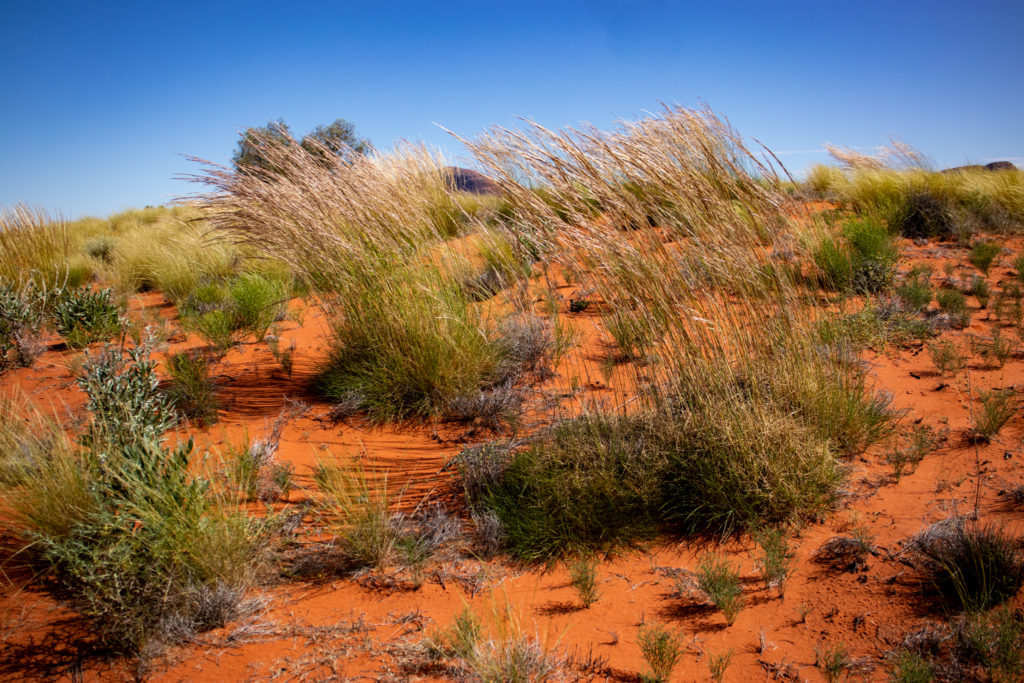
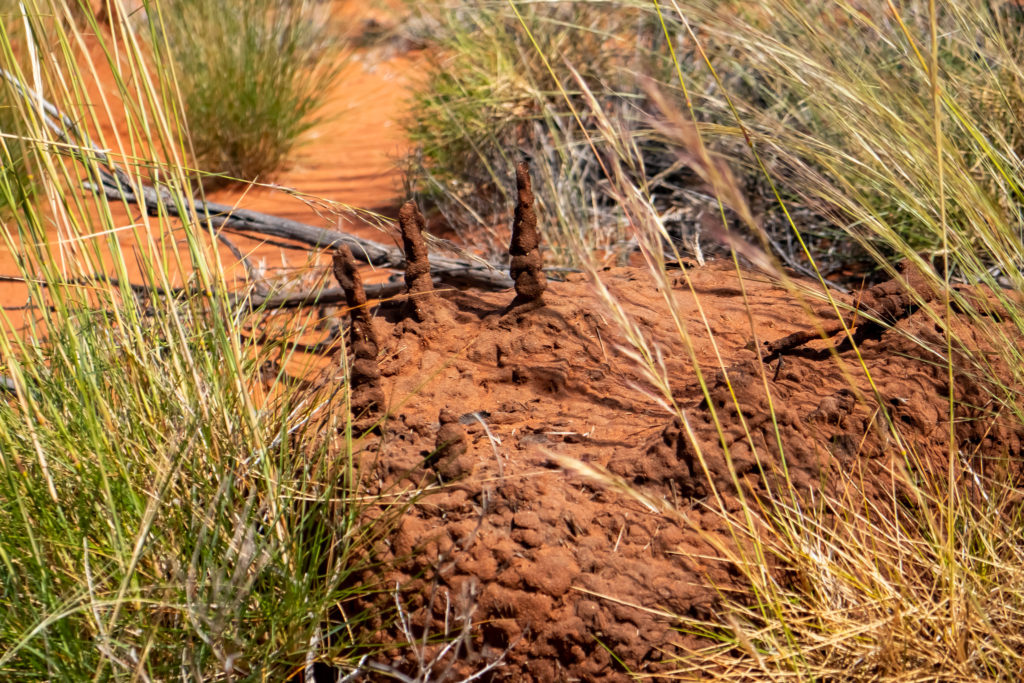
As we came back Uluru looked so different with a different angle of light on it. So of course a detour for more photos. This light gave it so much more depth and texture. Wonderful.
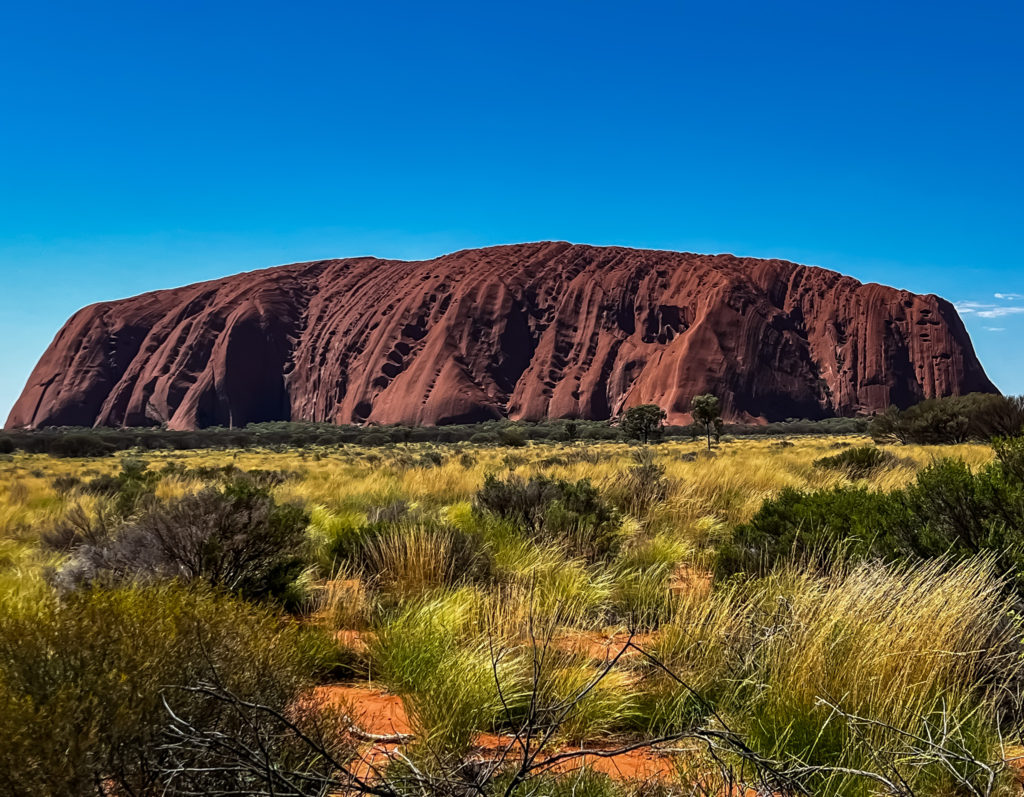
Then shops for groceries, shower and a snooze. There was an IGA with almost normal prices. All done by 12 noon. Hahah.
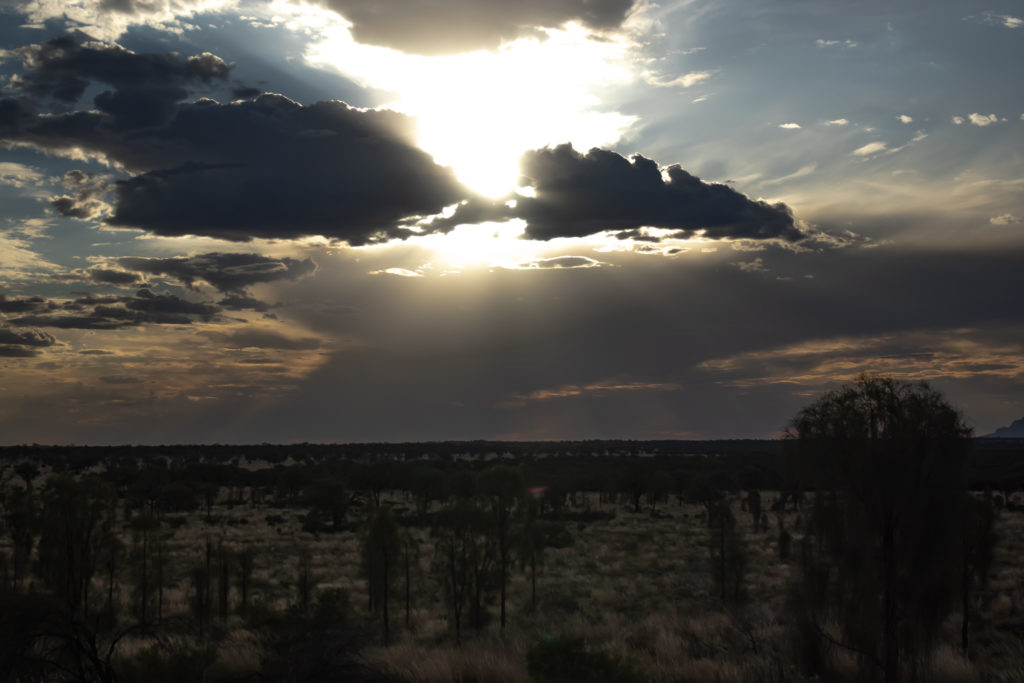
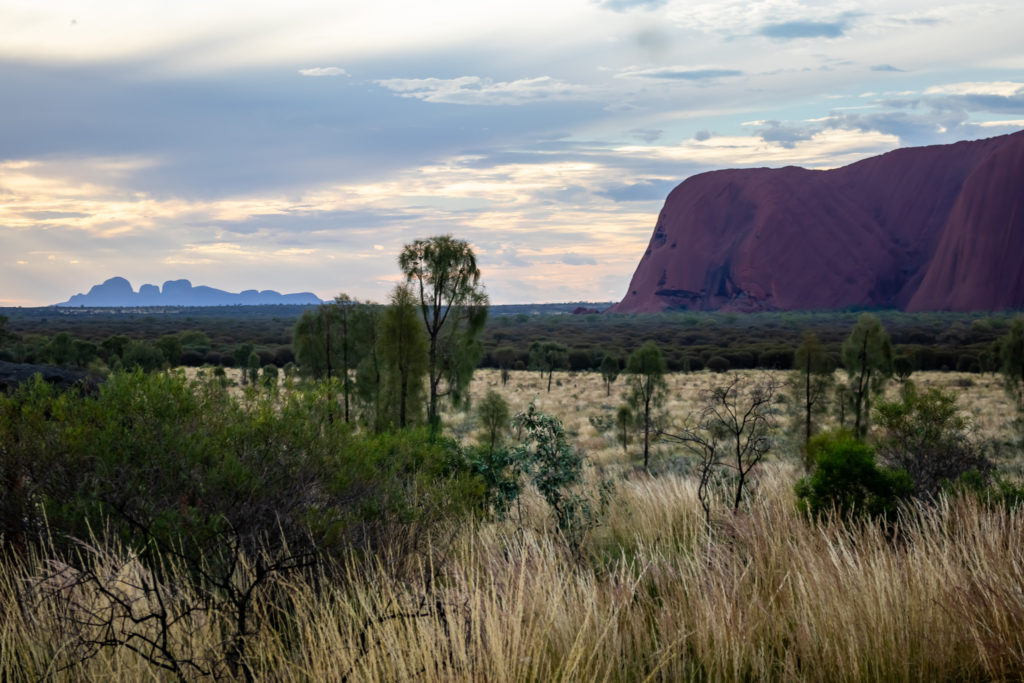
The evening excursion was a trip out to the ‘other side’ of Uluru. And another 2 k walking track. So pretty. Again we could see both Uluru and Kata Tjuta. The national park is so beautifully prepared and presented. This walk was wheelchair accessible including ramps up to all the viewing platforms.
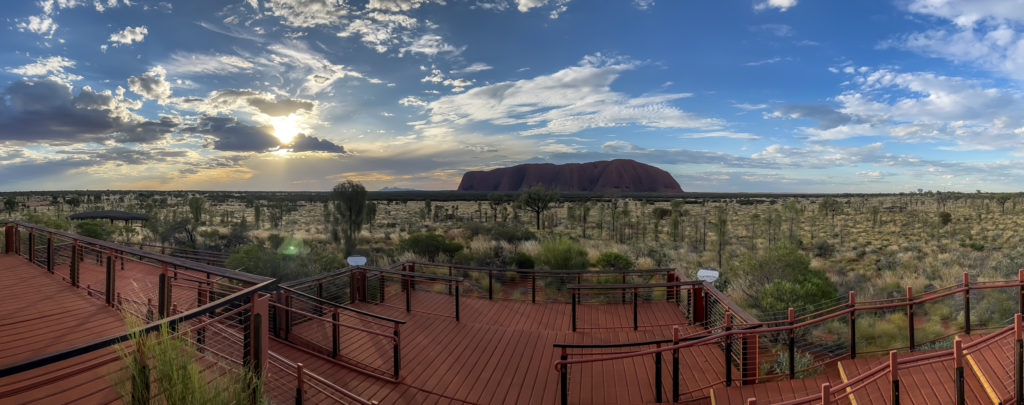
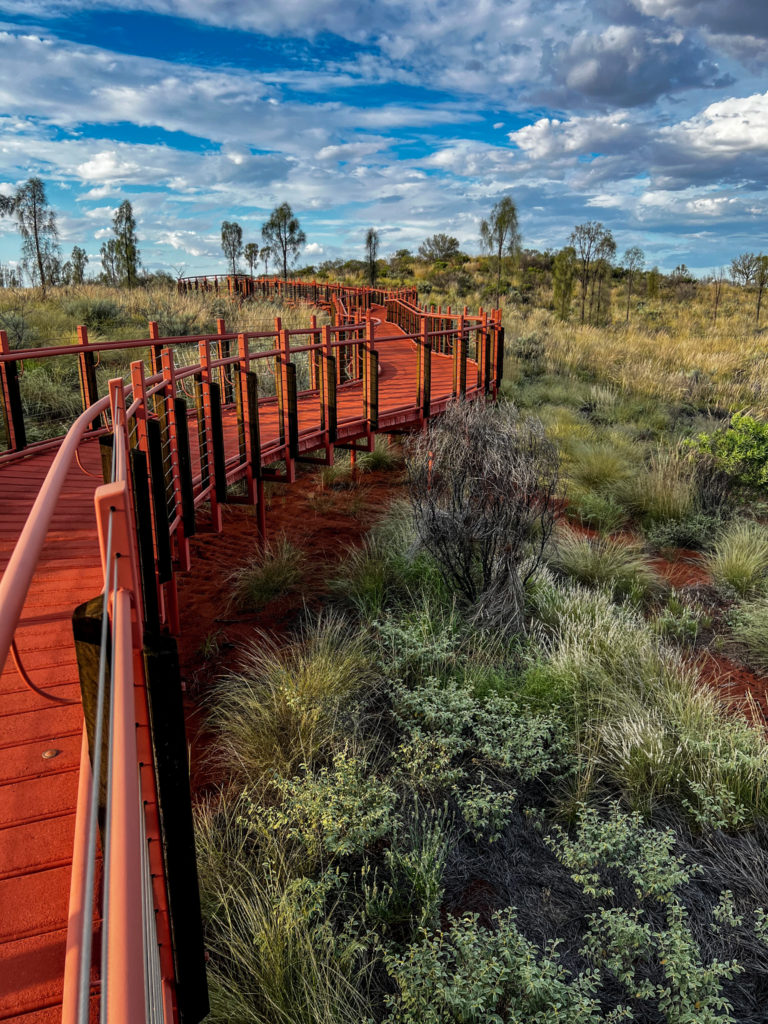
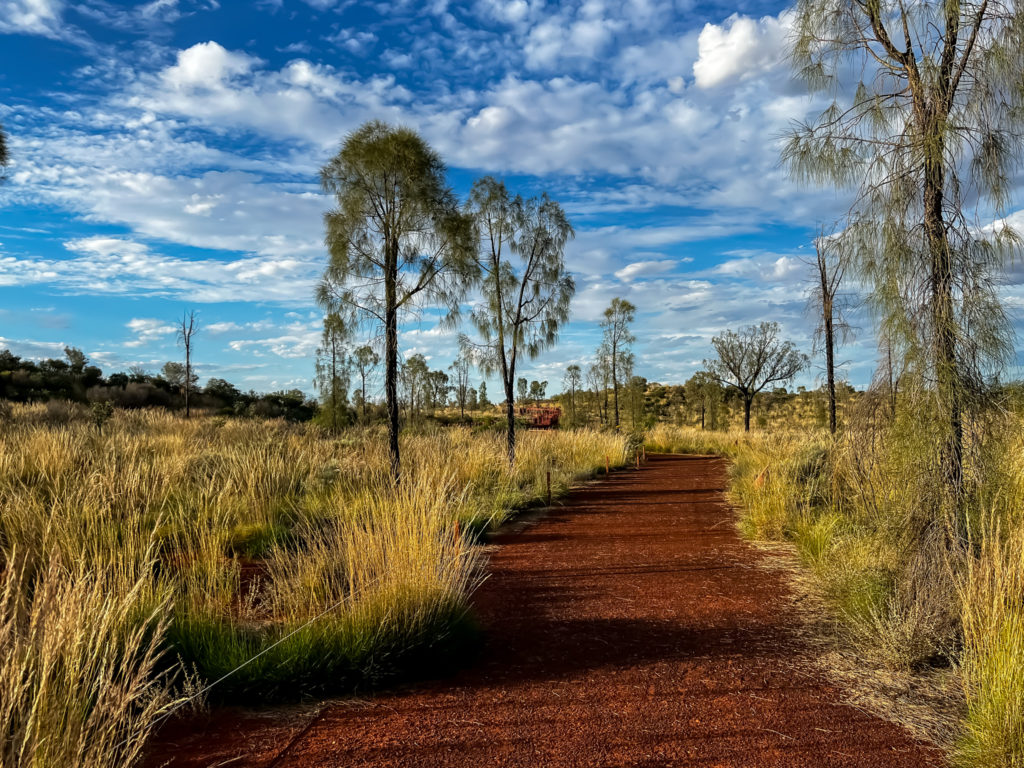
Then around to the ‘sunset viewing place’, but once again it was cloudy so nothing spectacular happened.
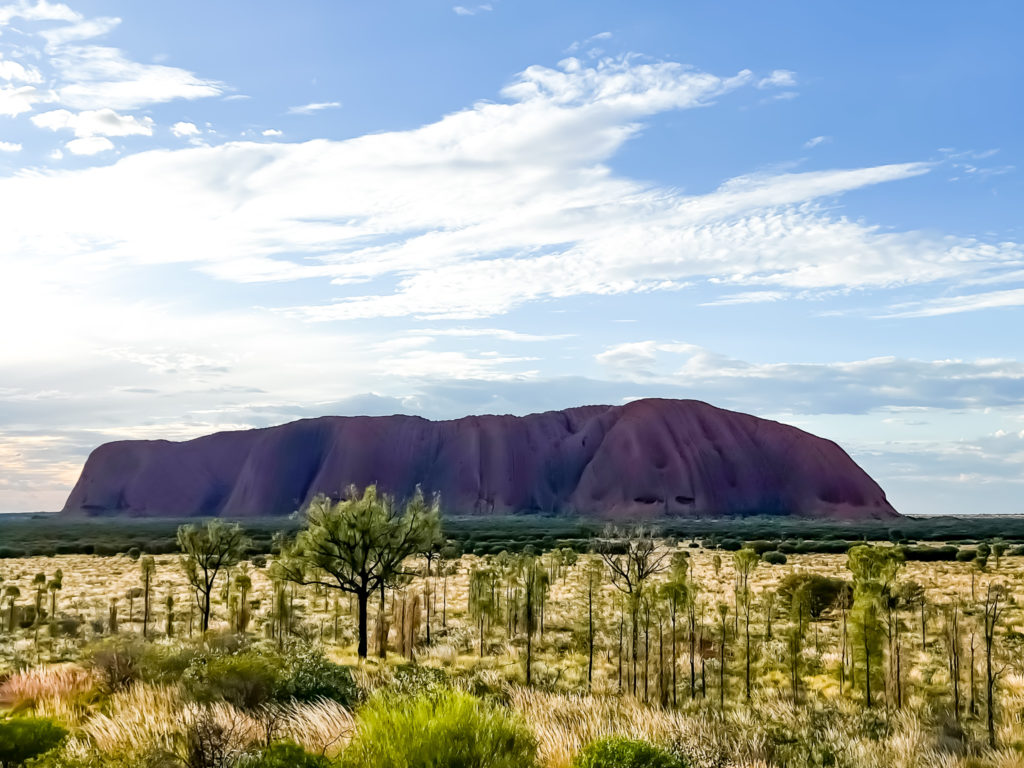
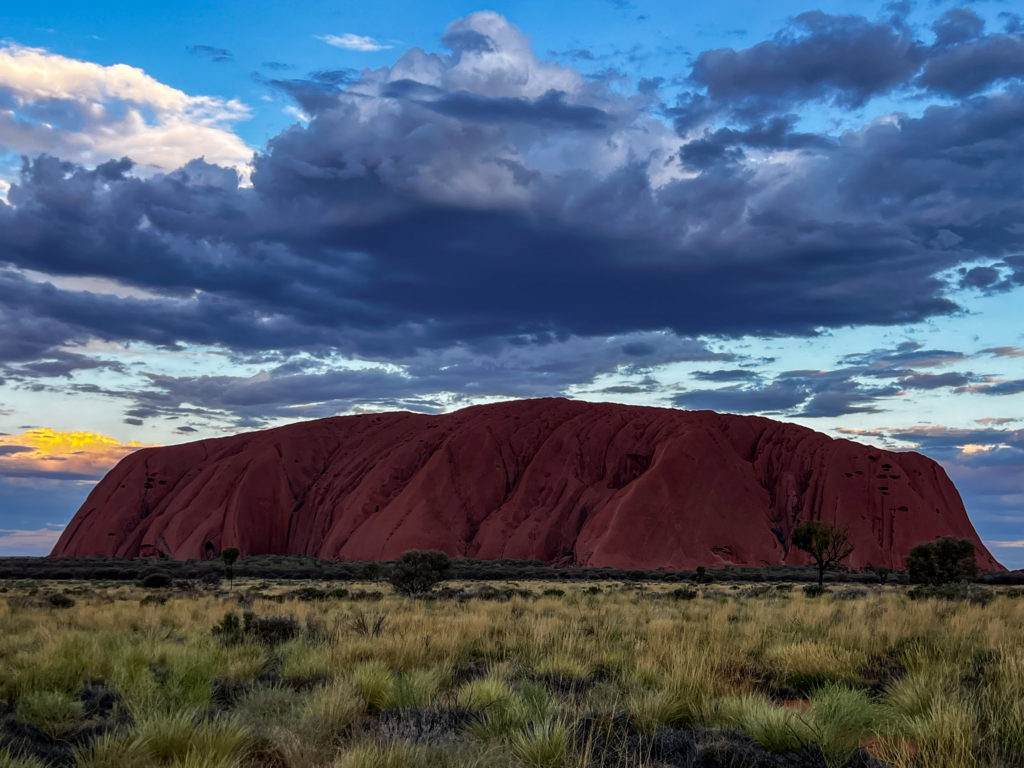
2022 – The Red Centre Day 6
Uluru. Different Transport!
The bugs at the hotel are … plentiful. It’s a beautiful hotel – Sails in the Desert. The room is lovely, huge. Gigantic balcony. As if anyone is going out there. Modern and nice. Apart from one thing. The bugs. Small Christmas beetle type things. Many grasshopper type things, moths and stick insects. And some how – after dark…they all come in to the room. We seem to have found out how they are getting in and have plugged the gaps with towels but the door is about 5mm smaller than the door jam so that must be how they get in. But there are at least 2-5 every square meter. And when you pick a bag up more scurry out.
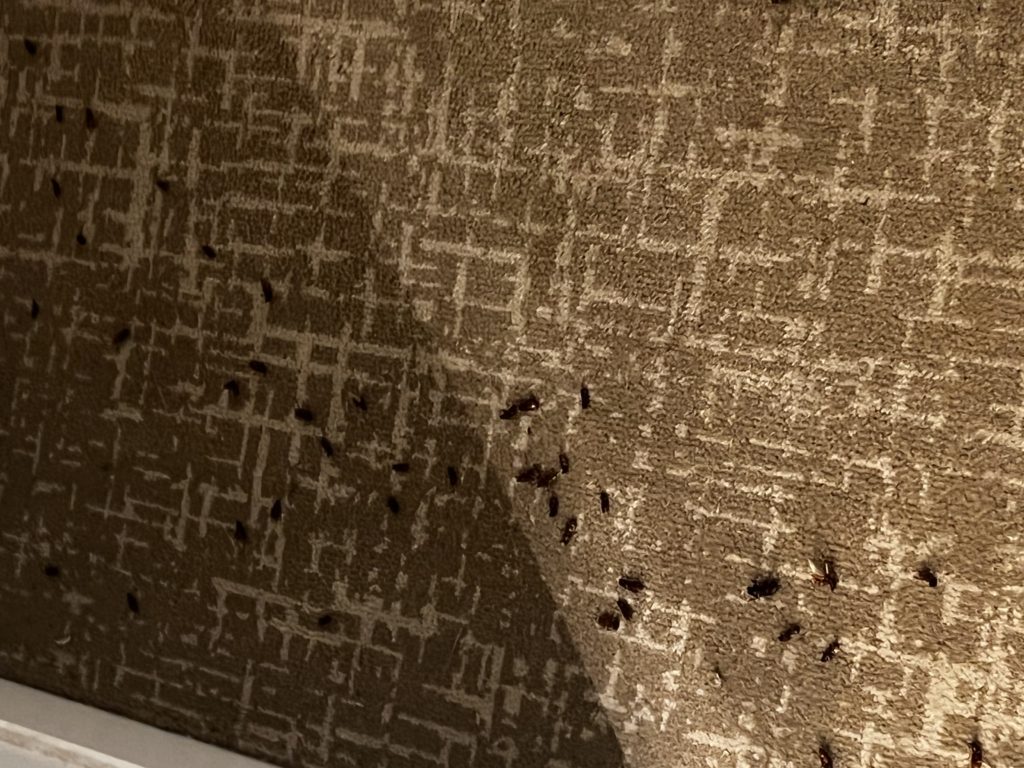
We thought we had lots but then we saw the lift area and the corridors (which are like outdoor breeze ways) around the hotel.
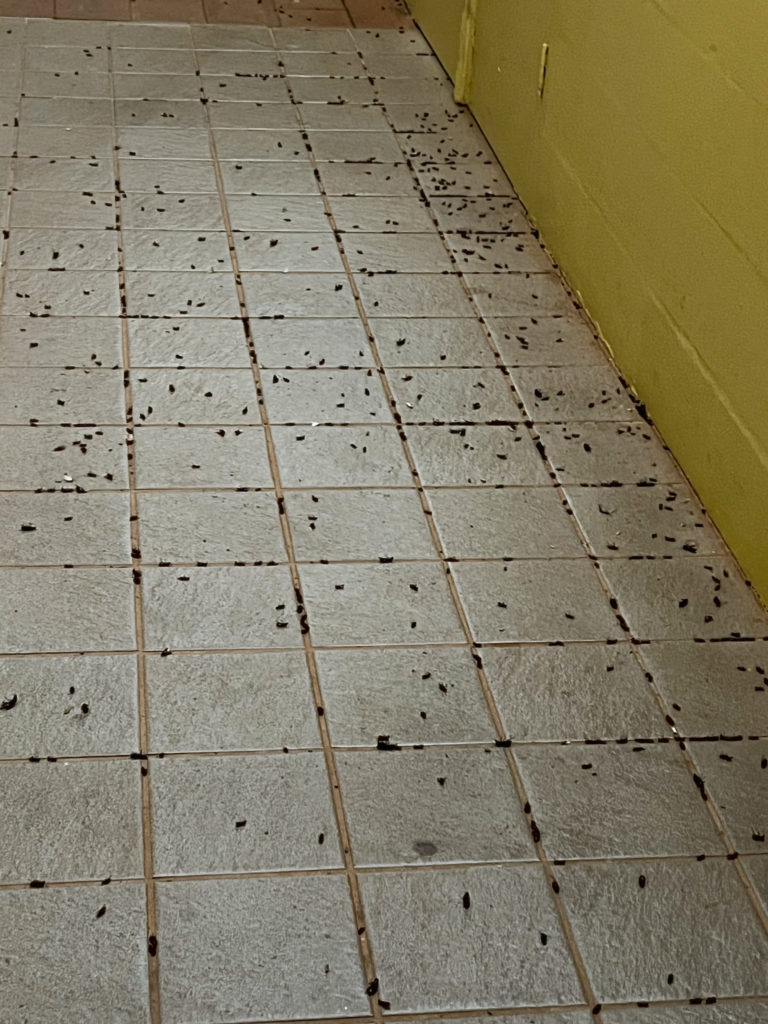
How do you get to go around all of the 12 ks around Uluru in 40 degrees plus heat? On a Segway of course. Yay another 6 am start. A car park training session and off we went. The loop took well over 2 hours.
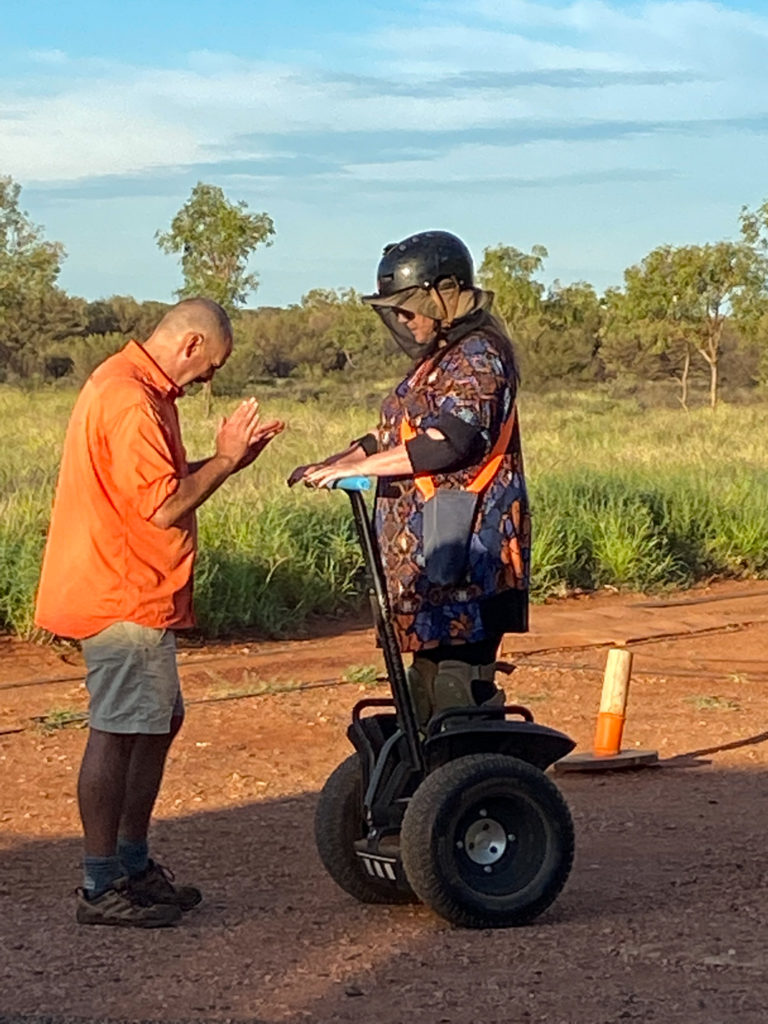
And damn, Uluru, the big red rock plopped in the middle of the sand desert, right? Wrong! In most parts is not like that at all. We rode through so many heavily wooded corpse of timber, lush and green with massive bird, insect and even hidden animals.
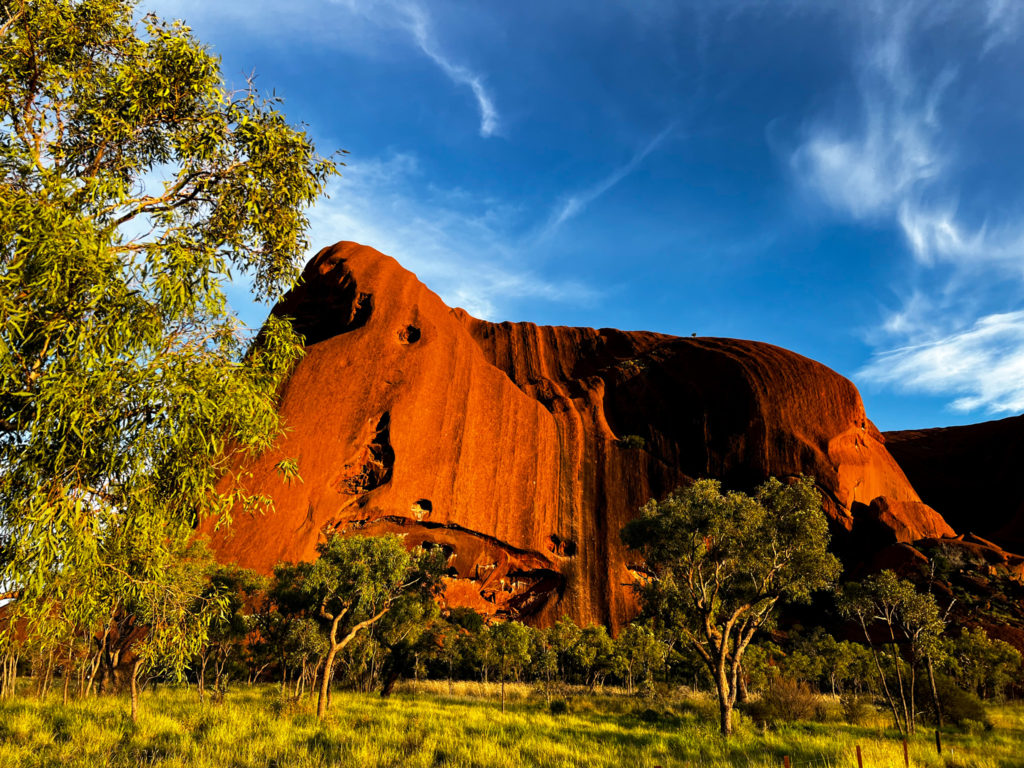
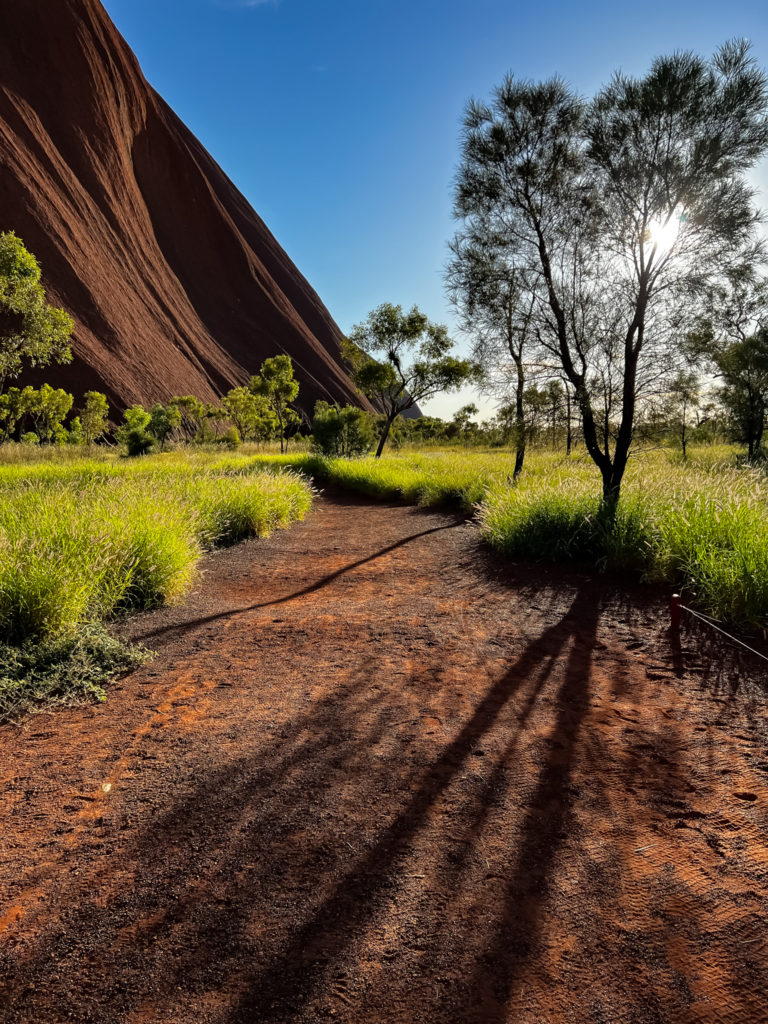
We would ride for 10 or 15 minutes then stop and talk about the area. A few of the areas were either mens or womens secret business places, so no photos there but we were told about the legends and why the area was important.
Uluru, as we know was formed by the giant inland sea approx. 550,000,000 years ago. As it changed from a sea, two large alluvial fans formed. One had heavy particulates that formed Katu Tjuta. The other with light sandy material that formed Uluru. Then the Alice Springs Orogeny episode occurred in central Australia. This tectonic plate movment took about 150,000,000 years to happen and caused the land to tilt. Uluru tilted a full 90 degrees in most parts, thus the lovely striations across the whole thing.
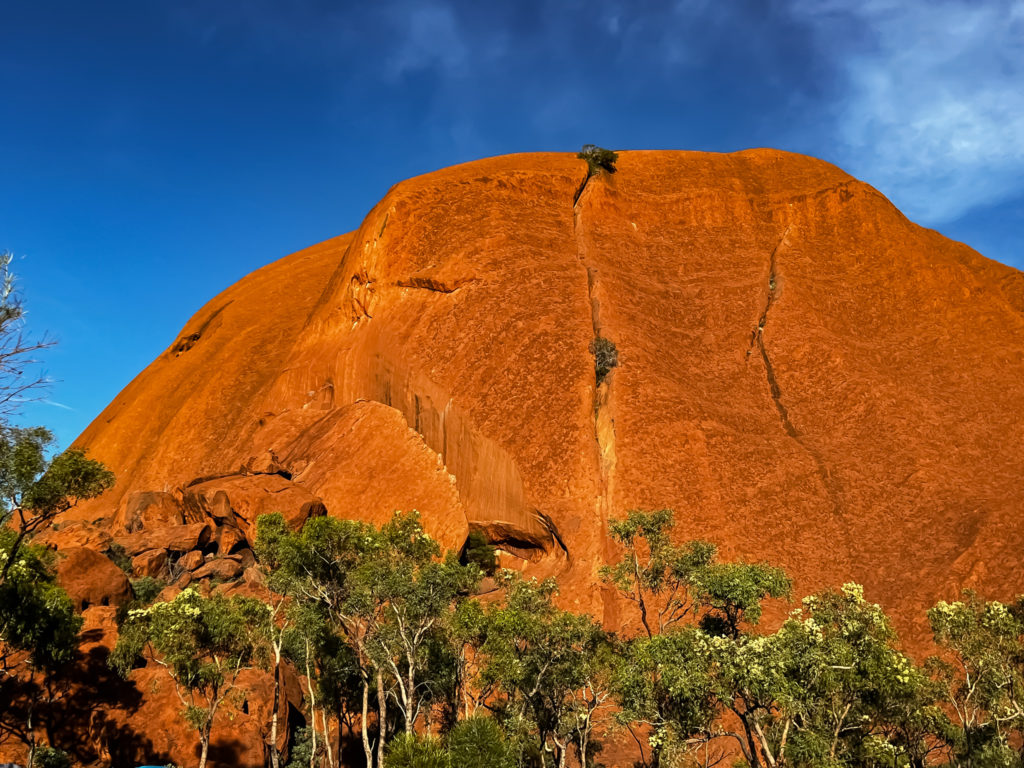
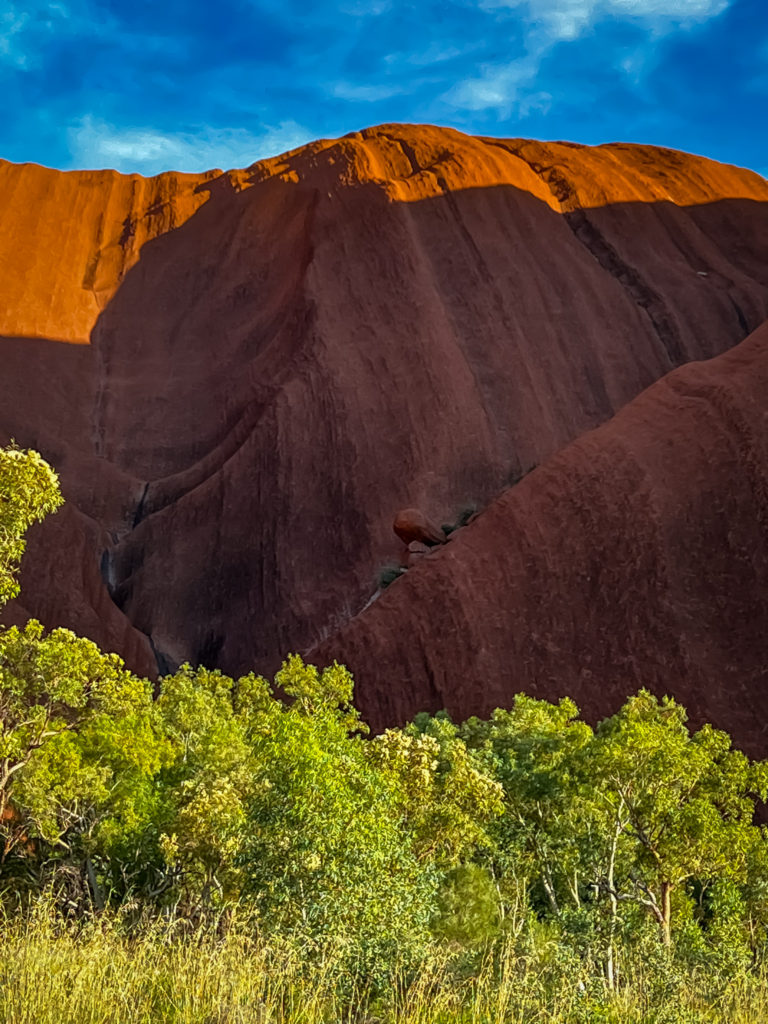
Another interesting thing is that Uluru, Kata Tjuta and most everything else in this area is not red stone. It is a beautiful grey (that we saw in the caves) but has a very high iron content. And we know what iron does in sun and rain over time…it rusts. Thus the red colour.
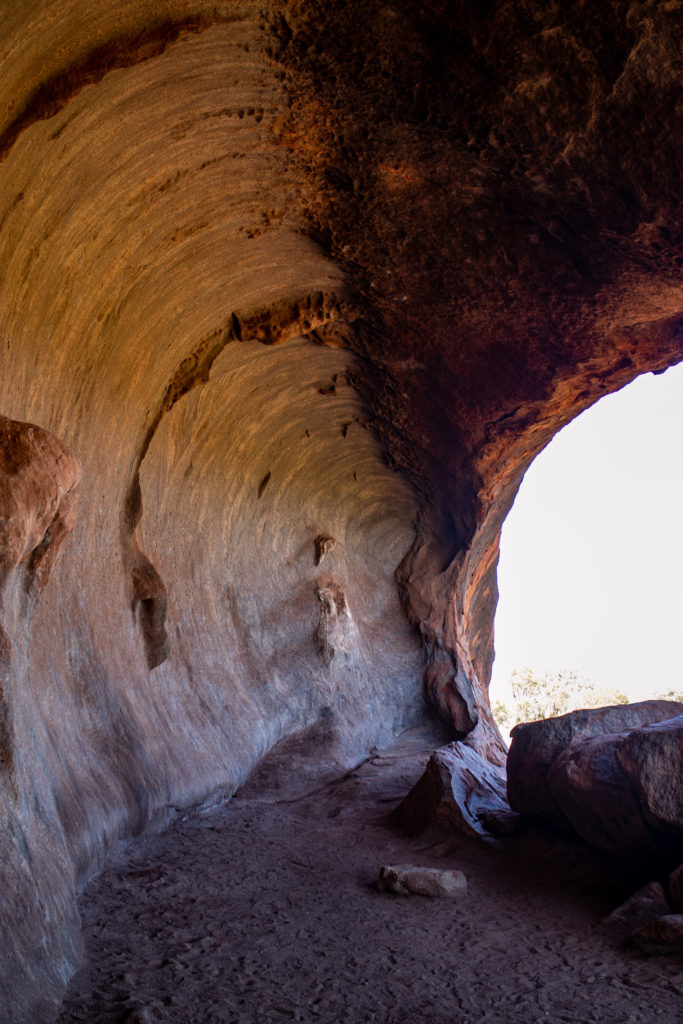
When Uluru rotated, only the top was left exposed. The rest, they believe, goes down 6 kms. That’s a big rock.
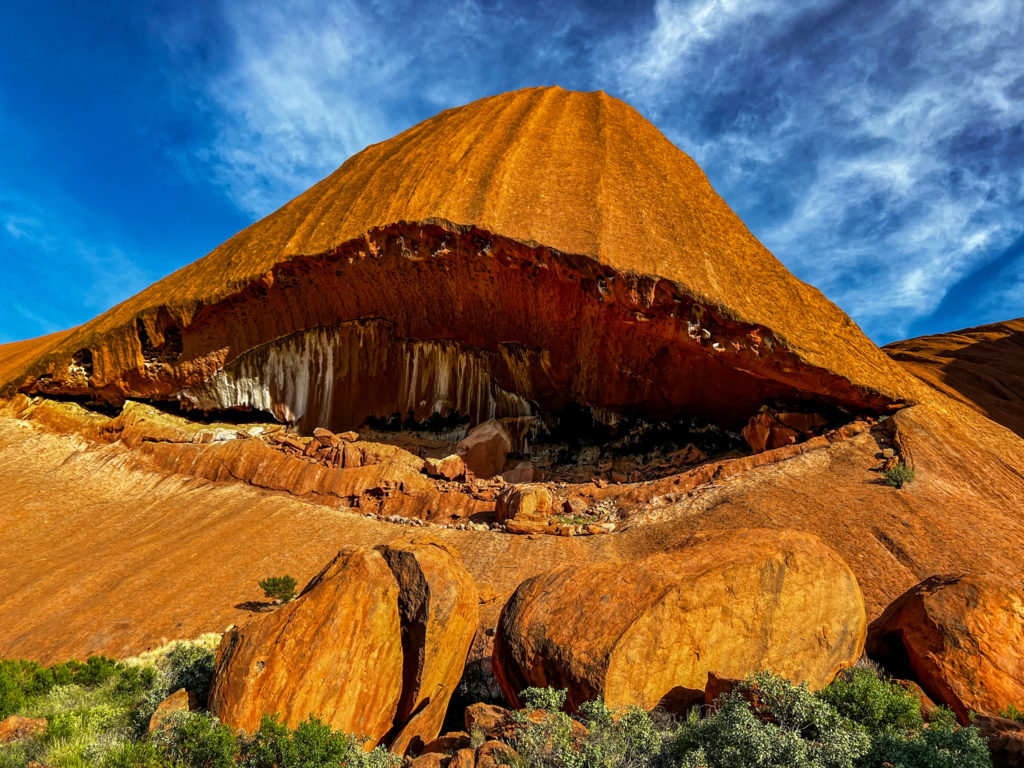
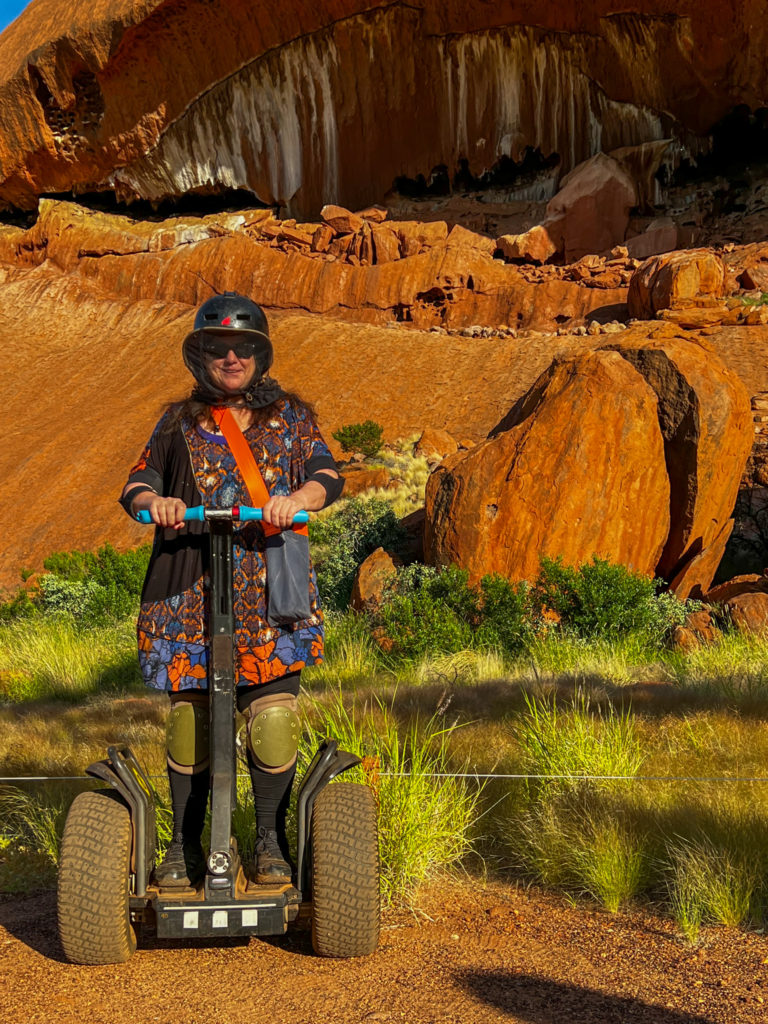
One of the Women’s Places has a fairly permanent water hole. The local kids get to go and swim and you can hear them squealing, from deep into the bush. Most of the distinguishing features are part of the creation stories. The Yankunytjatjara and Pitjantjatjara people know that these are all proof of creation and of the dreaming stories. With most of the stories, as well as explaining how something happened, there is a moral attached. Things like teaching the kids to finish what they started and to listen to the advise of the elders.
We saw lots of plant life.
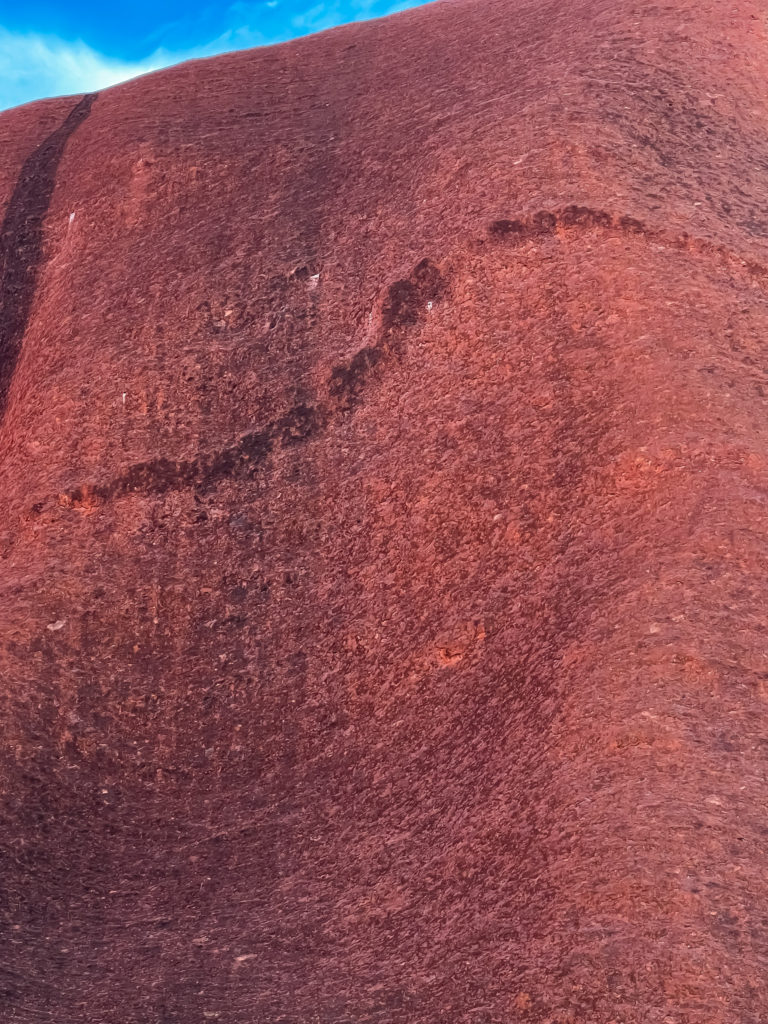
The Mulla Mulla plant has a huge white flower on it. Its name means “Pretty but useless”. After the Segway trip we had time to get to the other side and do another walk before the 11 am trail closures – as it was 41 today.
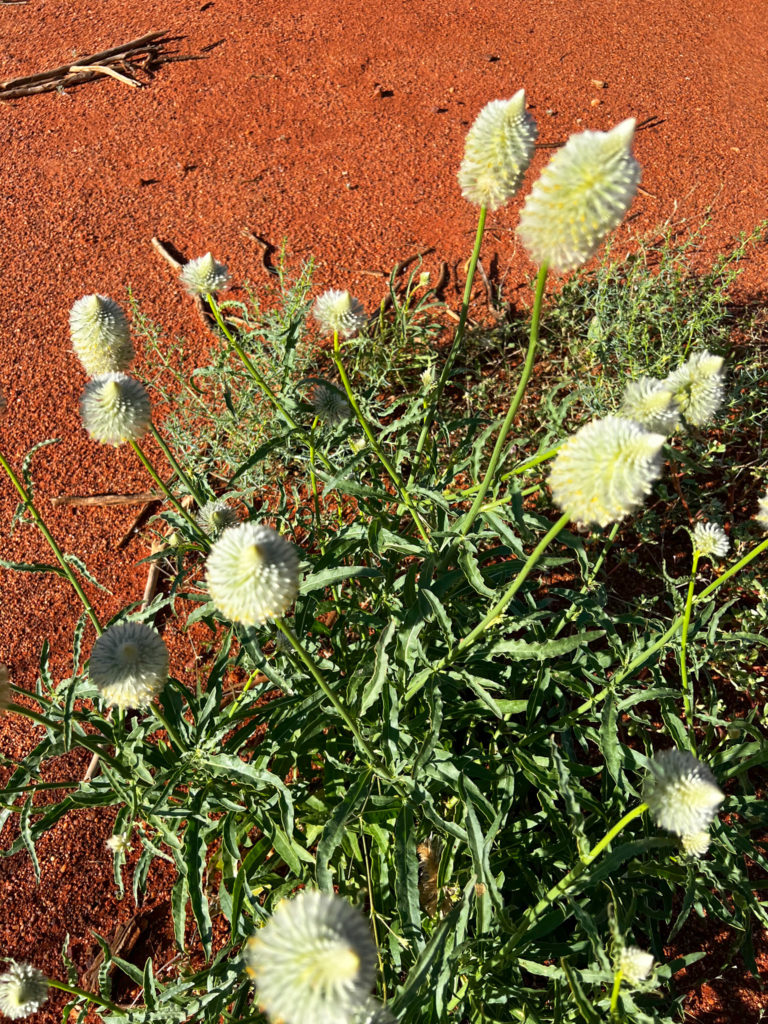
The Mala Walk.
This walk takes you past many of the “Learning Caves” and down to Kantju Gorge.
The rock formations along here are related to the activities of the Mala (Rufus hare-wallaby) people.
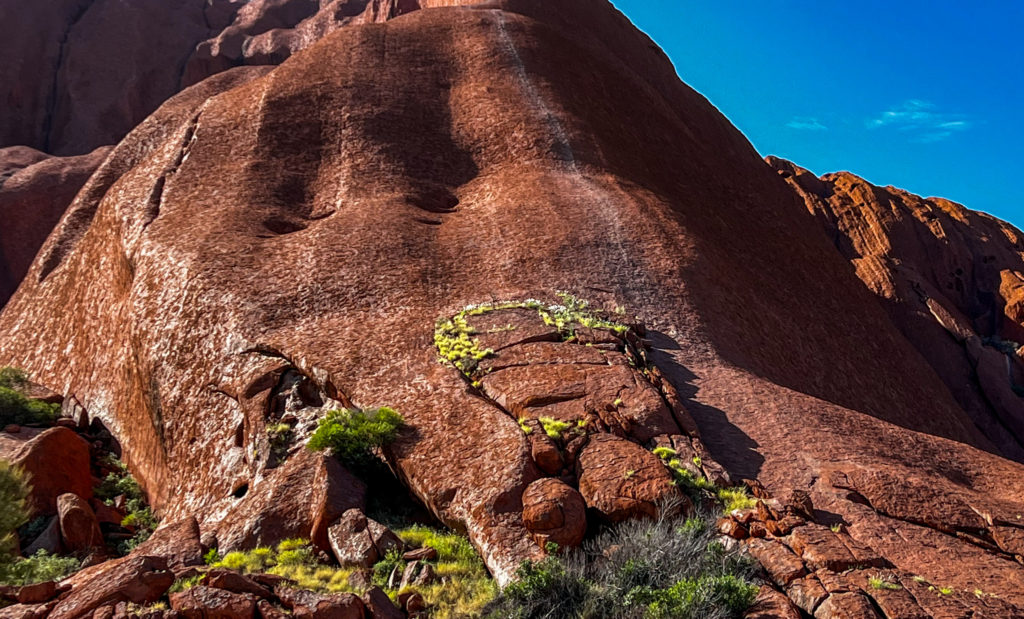
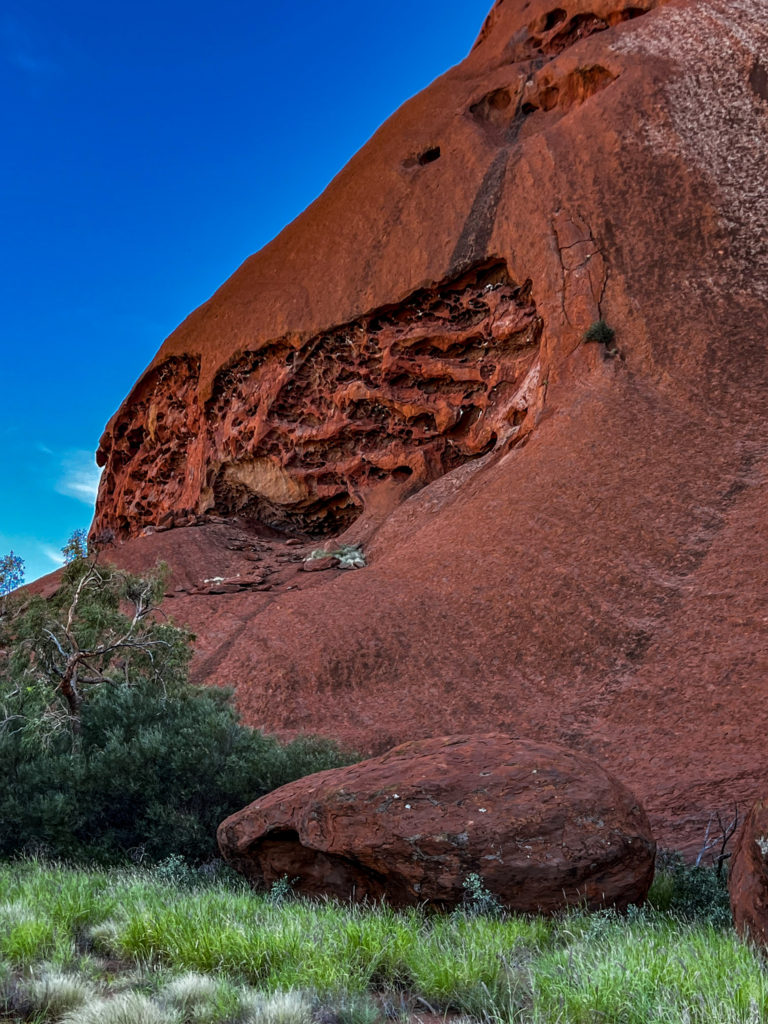
As we walked into the gorge we were struck with the …reverence of the place. It was amazing. We were the only ones in there and spoke in whispers. We just sat and listened. We watched the frogs swimming in the water hole.
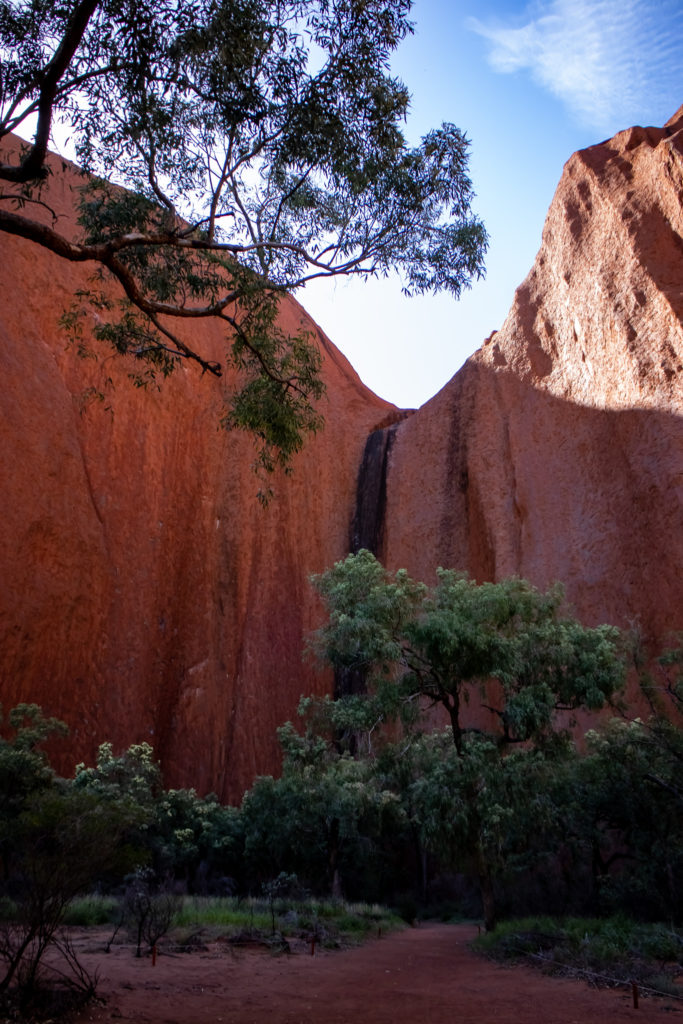
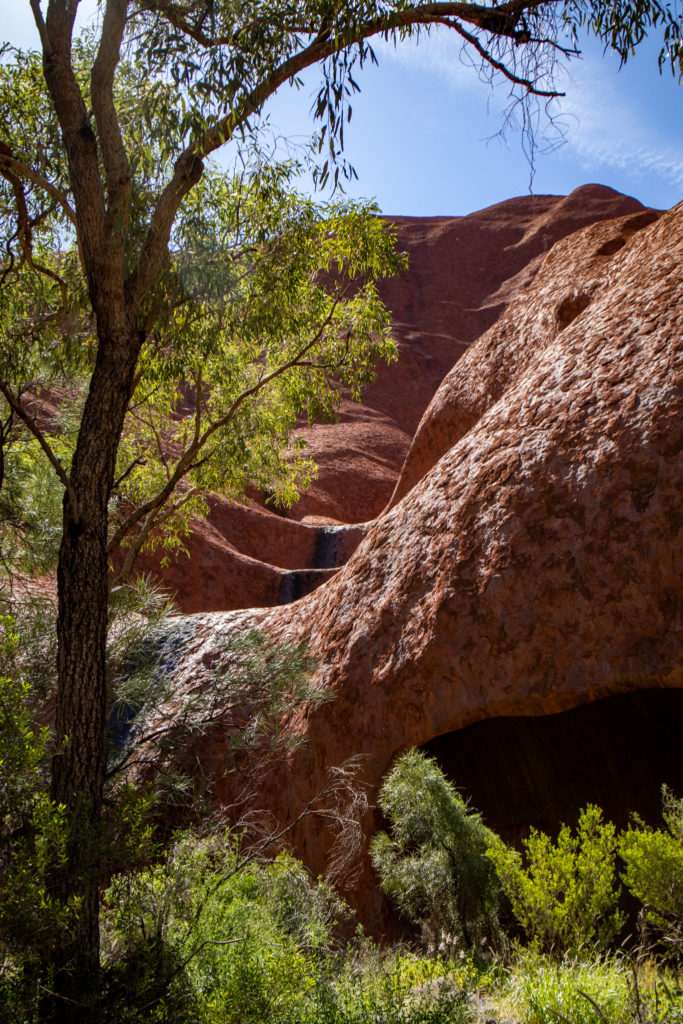
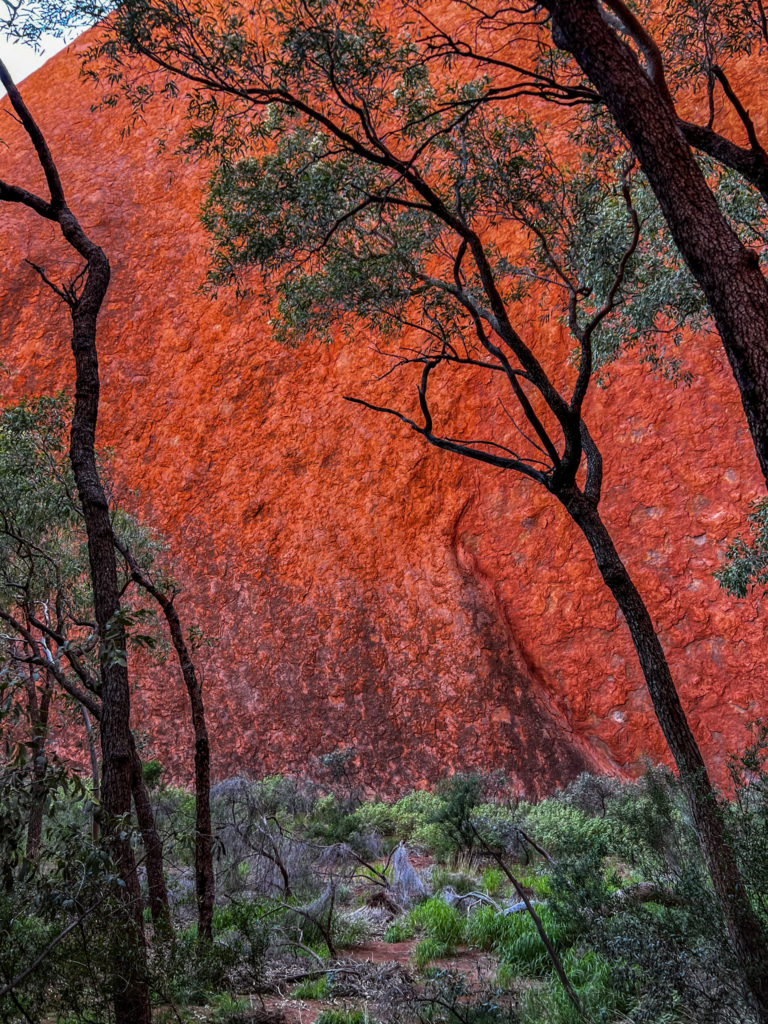
We stared and we marvelled. And we were quite cross at the noisy group that came yelling and laughing along the trail. Then all stood around talking at full volume. It was just wrong. Reading up about the gorge later it said that “this has always been a quiet place of respect. A good place to sit and reflect”. Certainly was. So cool and quiet and stunning.
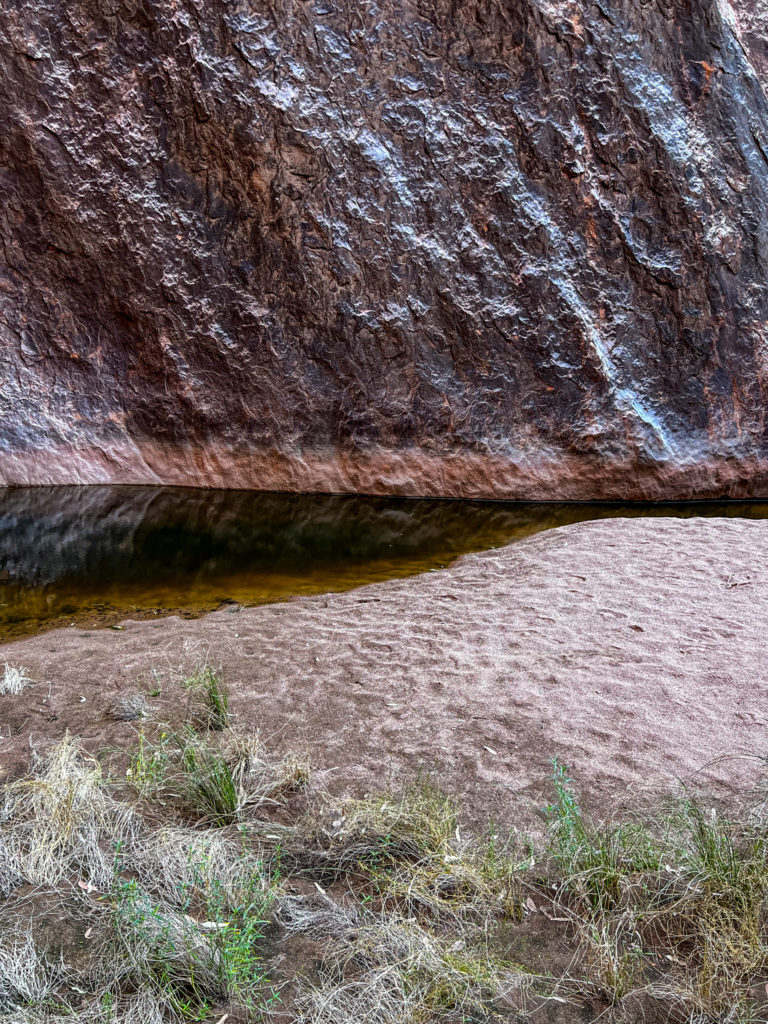
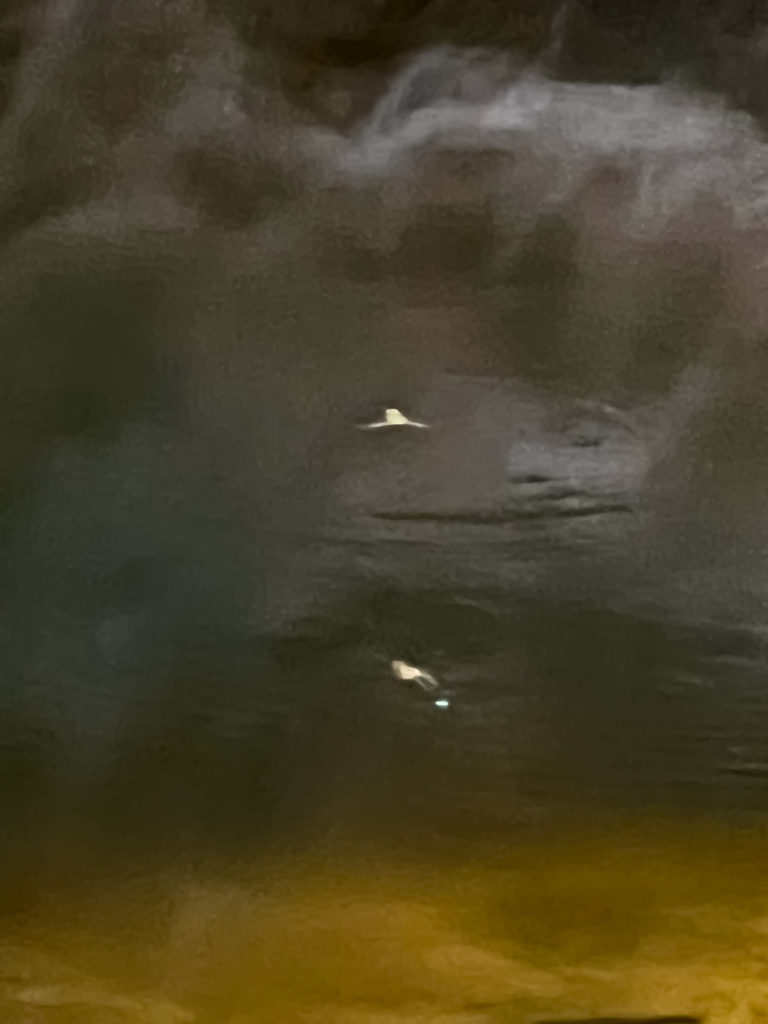
When the rains come the Burrowing Frogs emerge, search for a mate and the race is on to see if the tadpoles can grow into frogs before the water dries up. Their real name is Water-holding Frogs. They bury themselves in the sand as the water dries up using their spade like structures on their feet. When the rain is heavy enough to soak down to where they have burrowed, the frogs emerge to breed, often in huge numbers. After breeding they bloat themselves full of water before burying themselves in the sand again. These guys are opportunistic feeders and will eat whatever is available, including ants, termites, beetles, flies, spiders, grasshoppers and moths.
In extremely dry times, Anangu people would dig up these frogs and squeeze the water out of them for a drink. Not sure which of the four species we saw. We saw heaps and they were lovely, swimming around. Legs straight out behind them.
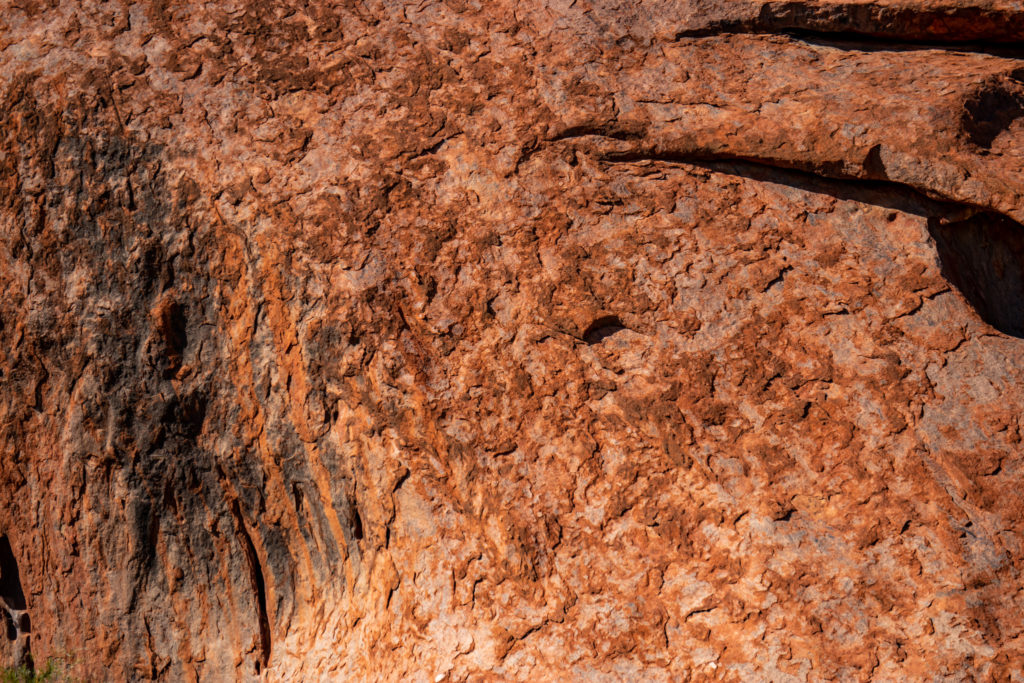
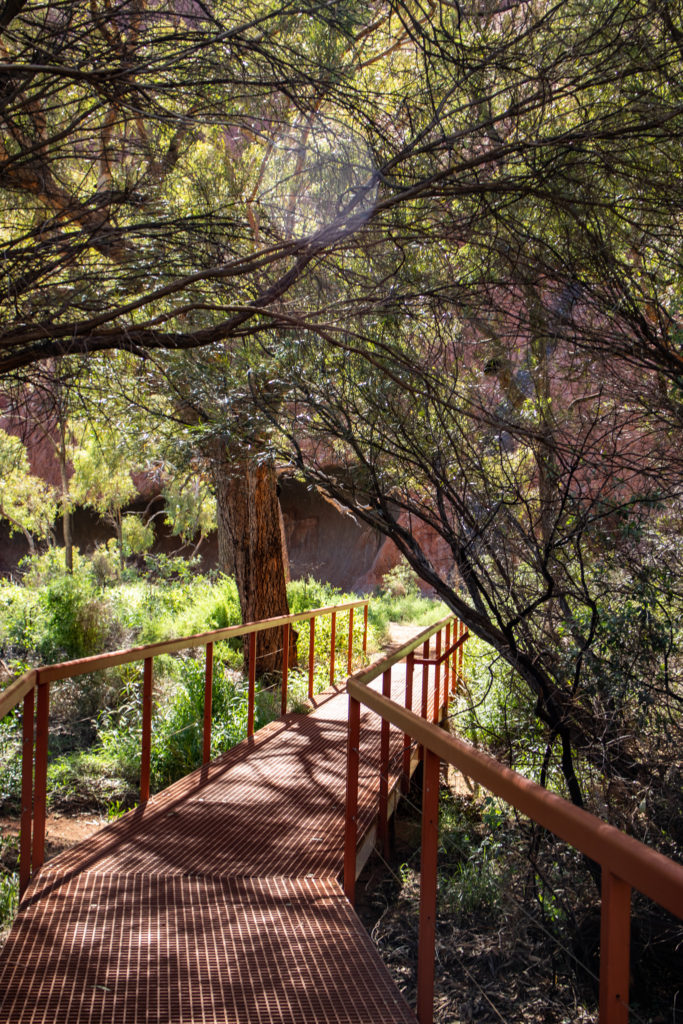
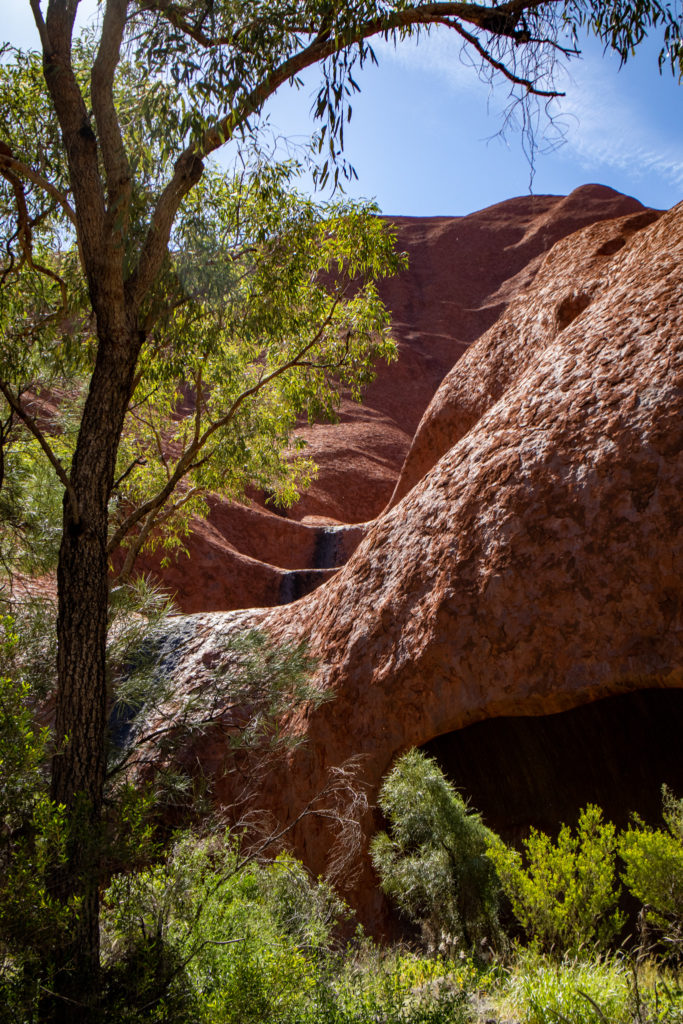
The gorge was a ‘box canyon’ ending in hugely steep walls. The run off after the rain into the waterhole must be insane. A huge black stain ran down the length of the wall. SO beautiful.
Then back along the trail past the “old peoples’s cave”, a place for them to sit and chat if they were too old to attend ceremonies. An amazing cave/overhang. Beautiful. A learning cave with art work in it.
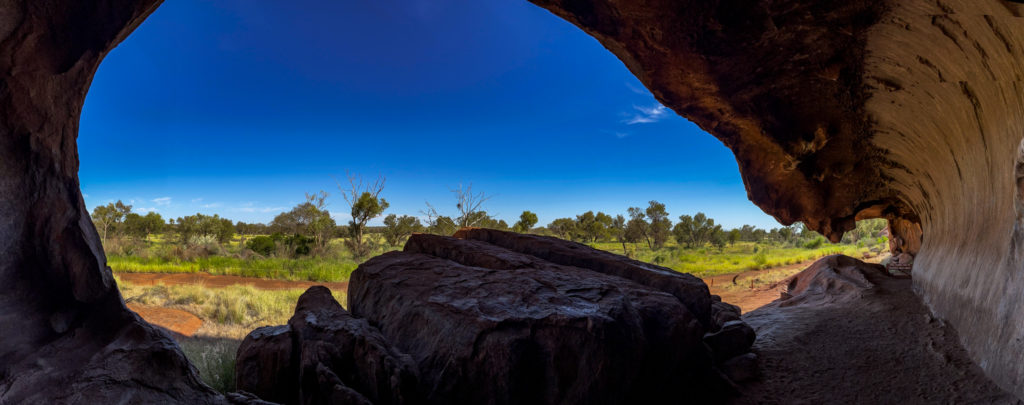
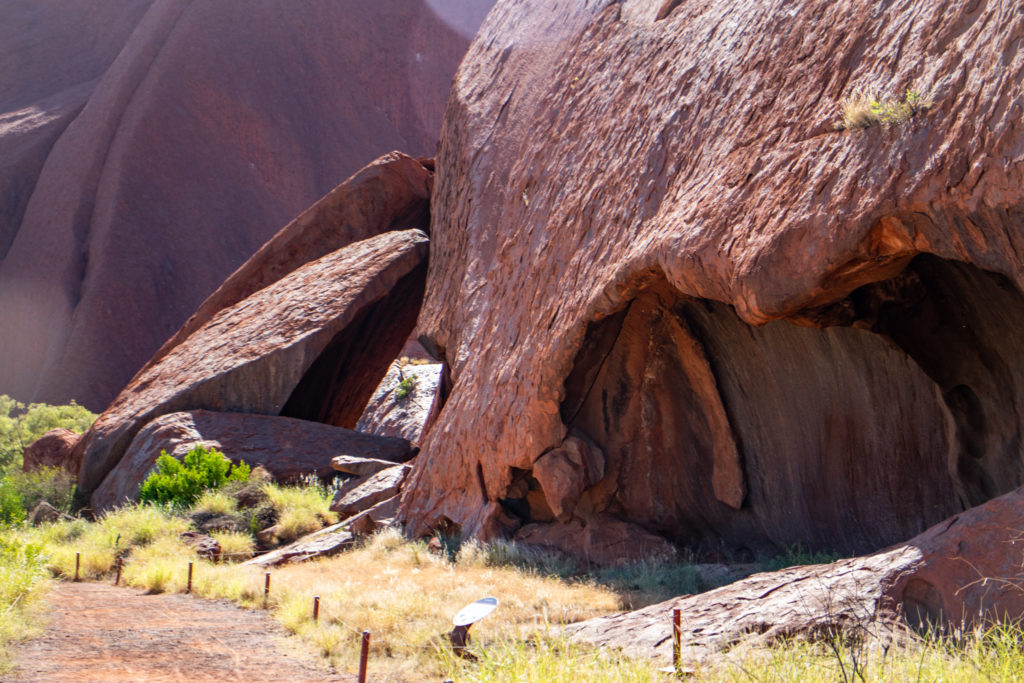

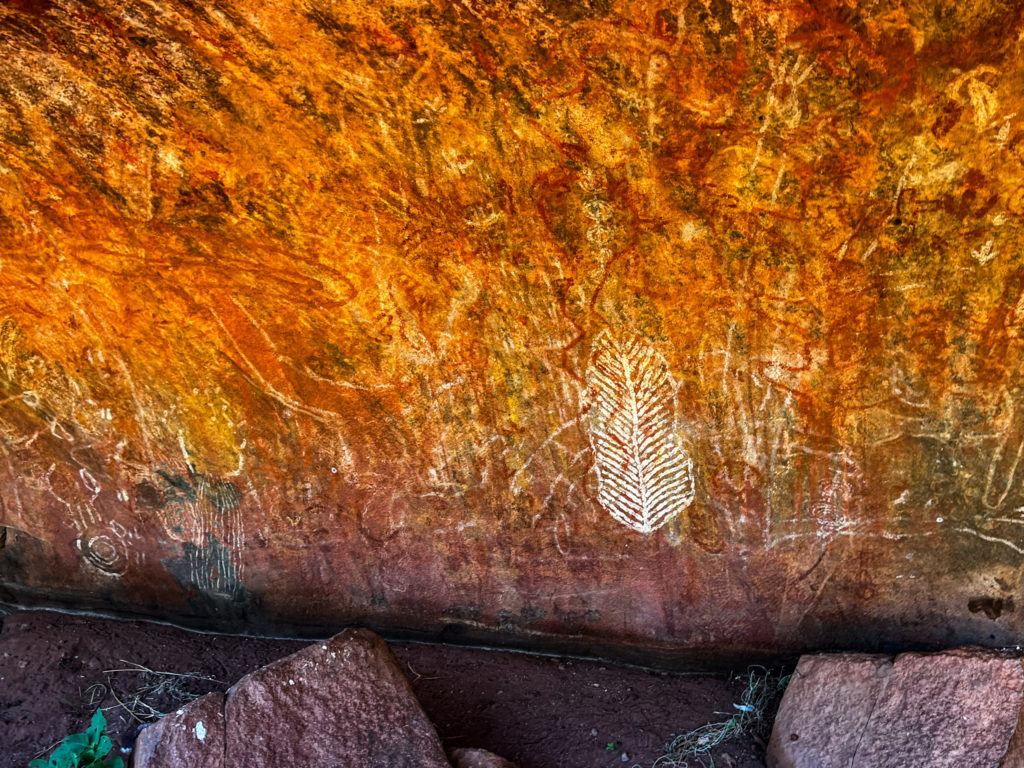
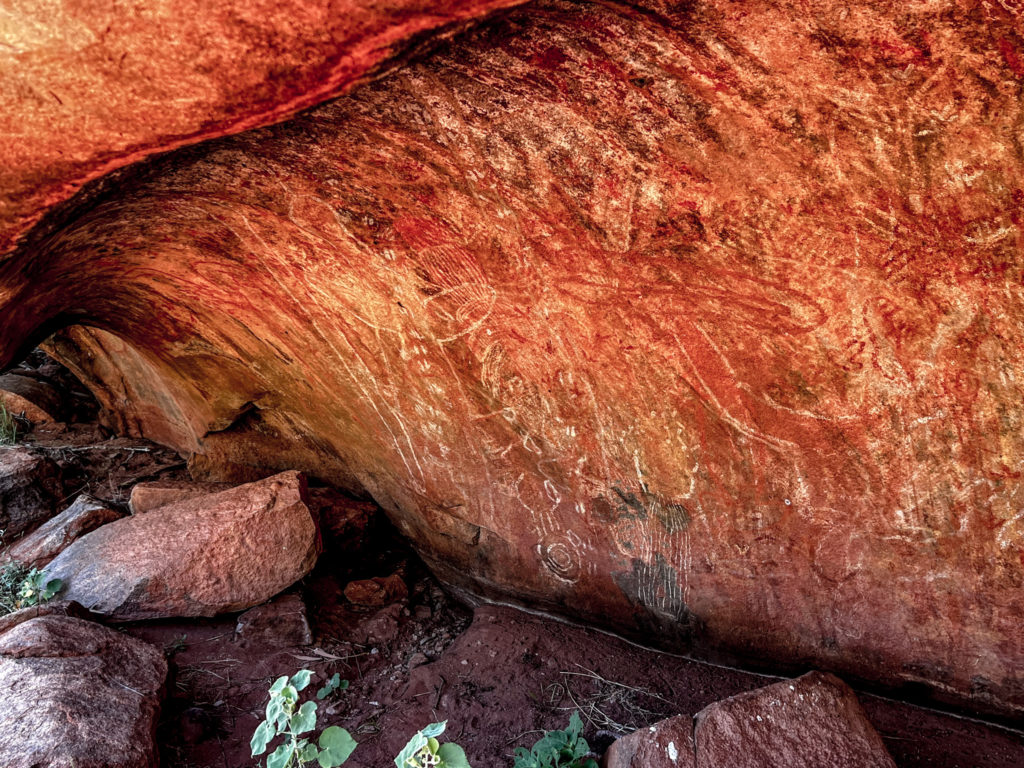
Another set of rocks were created by Marsupial Mole women.
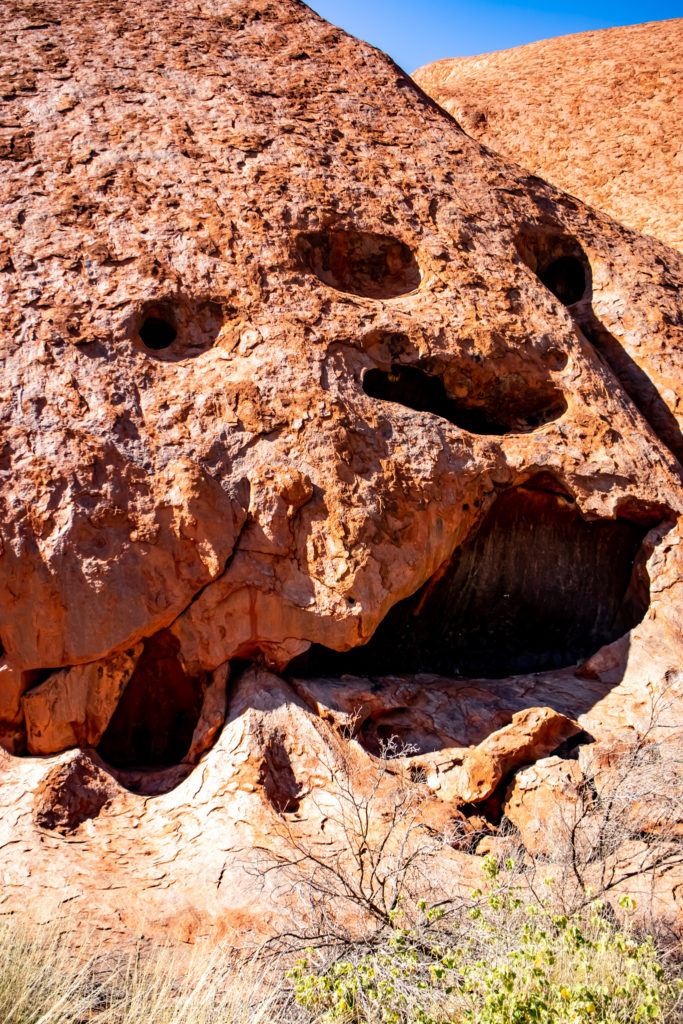
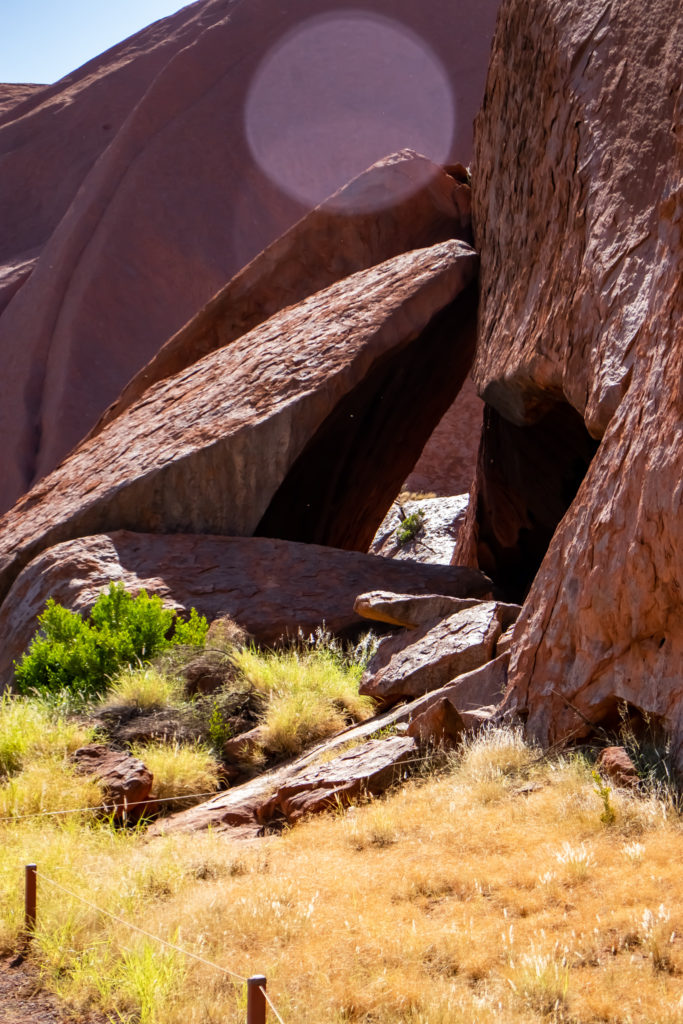
Then a visit to the cultural centre. Mostly a collection of shops selling beautiful arts and craft. We did indulge in some “Rosella Flower and Raspberry Gelato” and some “Malted Wattle Seed and Chocolate Gelato”. Both wonderful. Strong colours but wonderful.

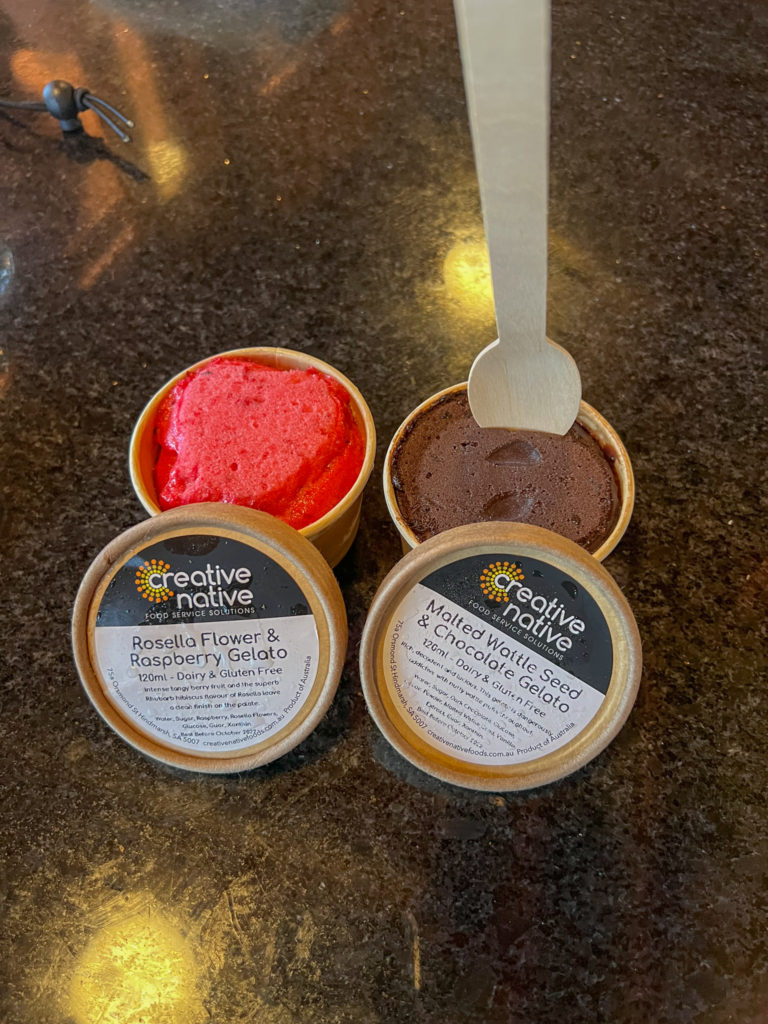
We topped up the petrol tank. Another $54.87. Lol. NOT LOL.
The evening activity was a sunset camel safari. A bus picked us up and took us to the camel farm. We were all in a long chain. We were given our camels, mounted up and off we went. Mine had a muzzle – not because he was mean but to stop him snatching mouthfuls of feed every few steps.

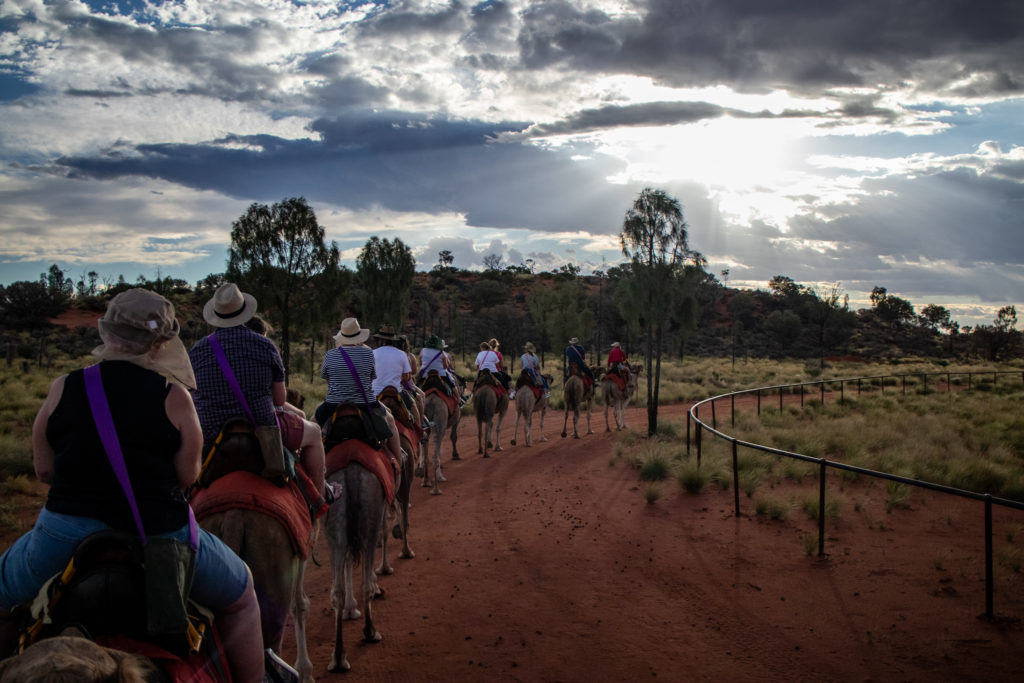
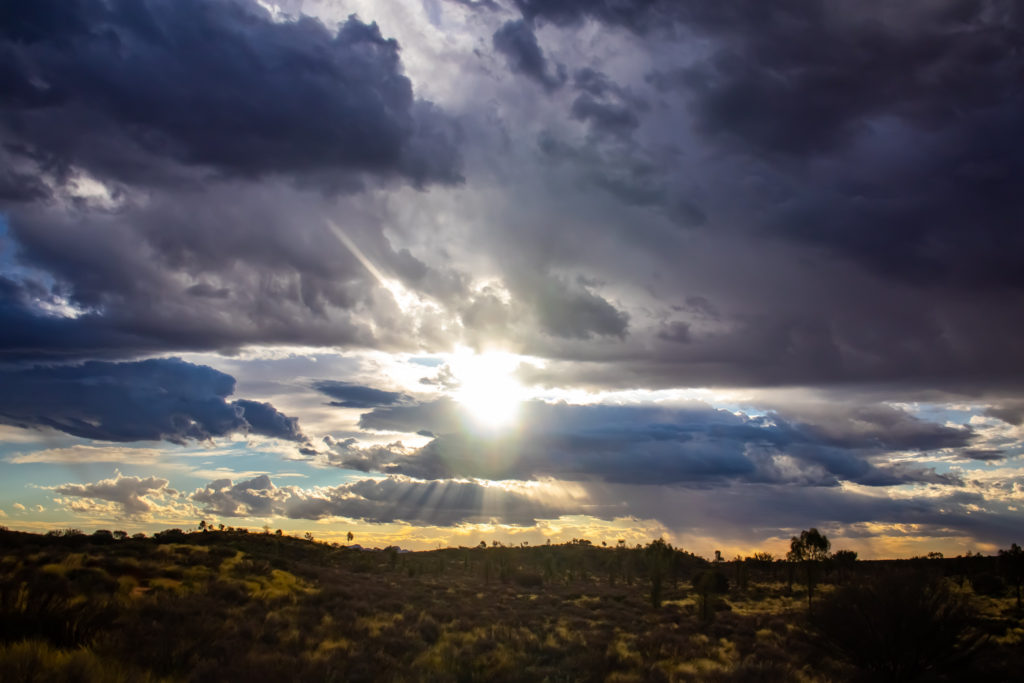
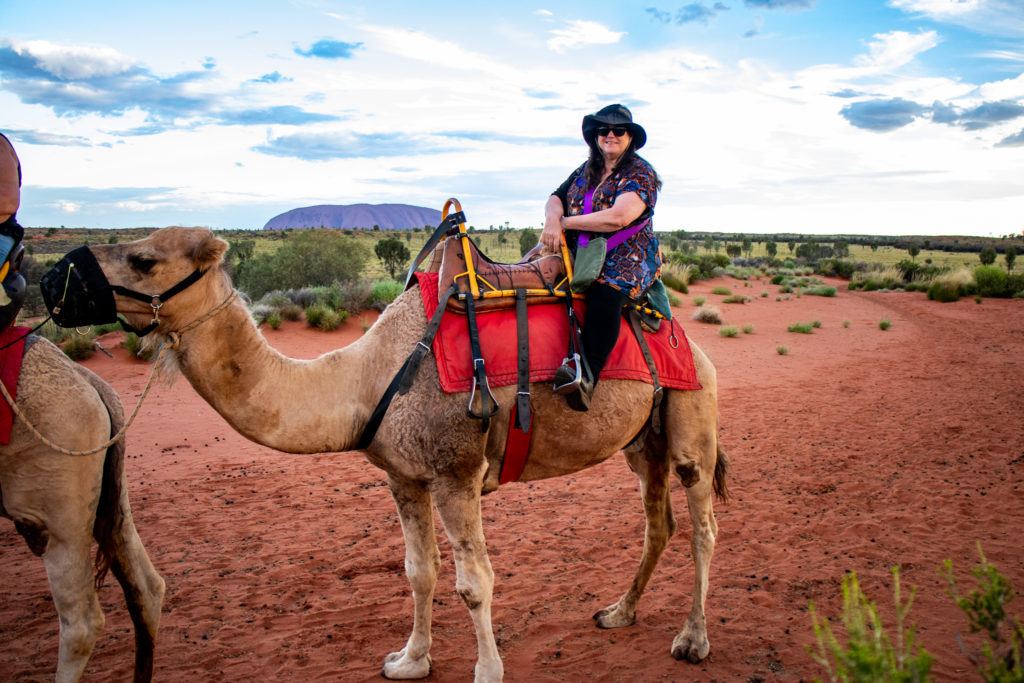
We spent a lovely hour plodding along as the sun sunk behind Katu Tjuta. It was cloudy again so we still didn’t see the infamous colours of the rock but didn’t matter. It was wonderful.
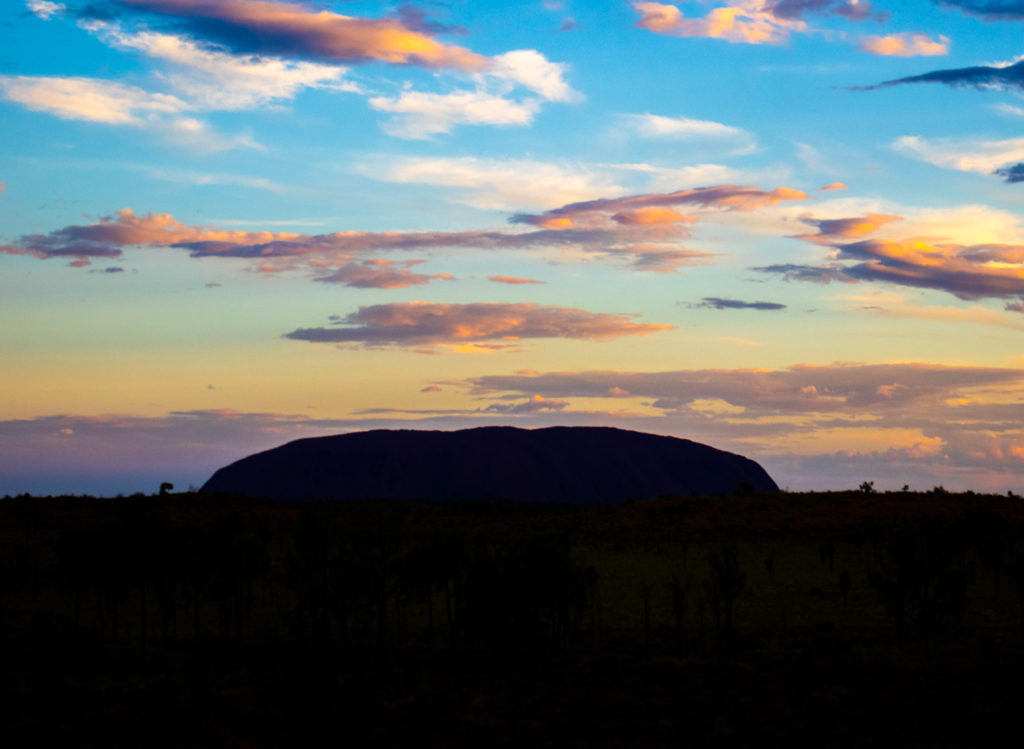
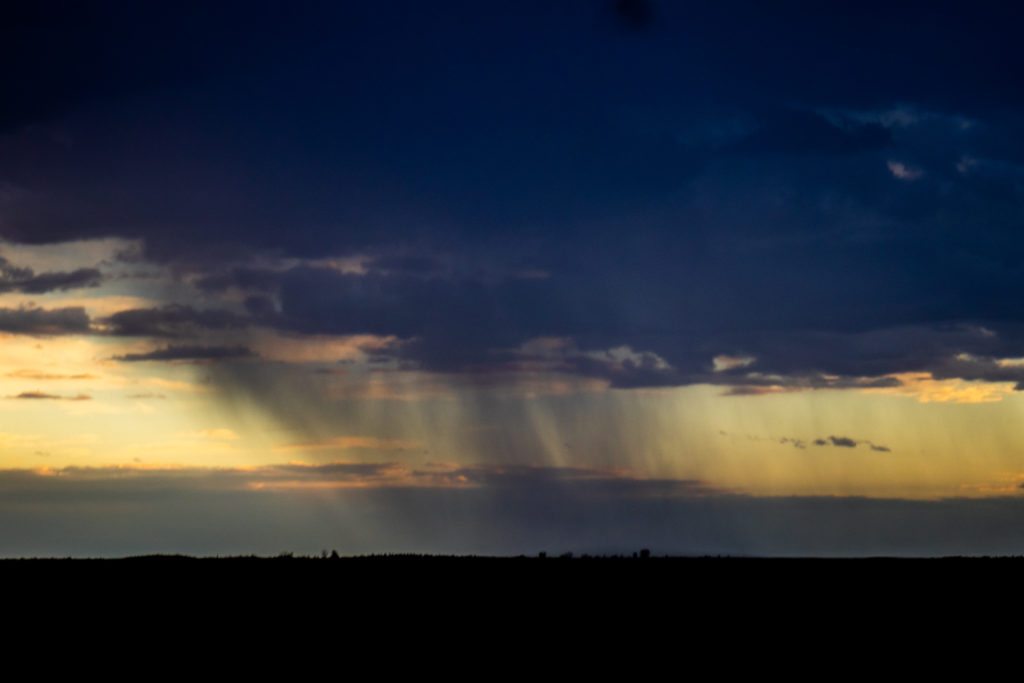
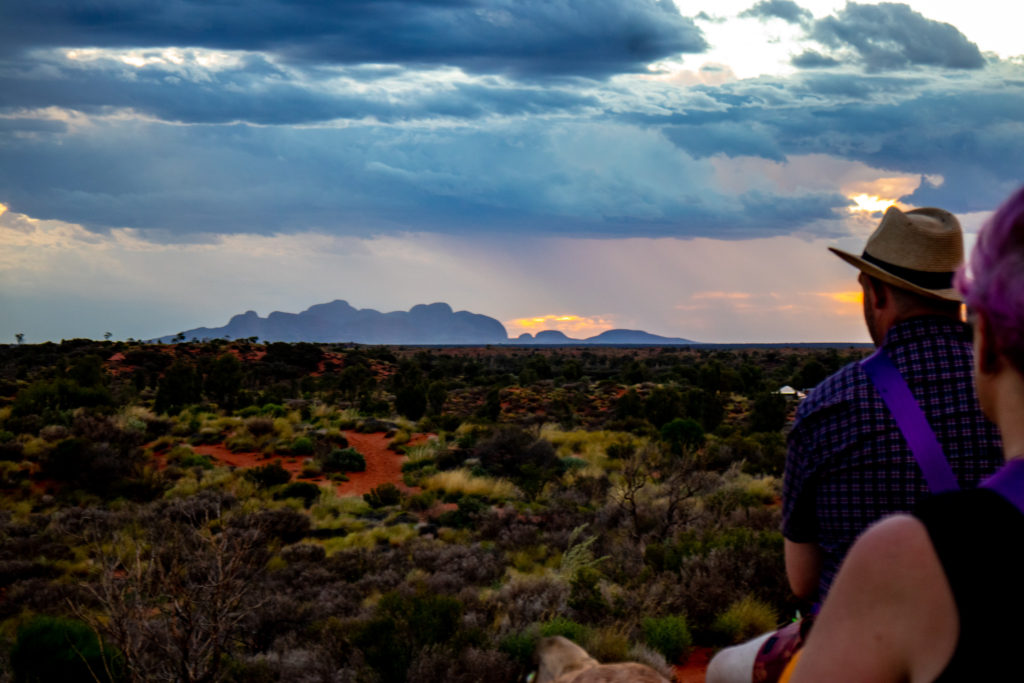
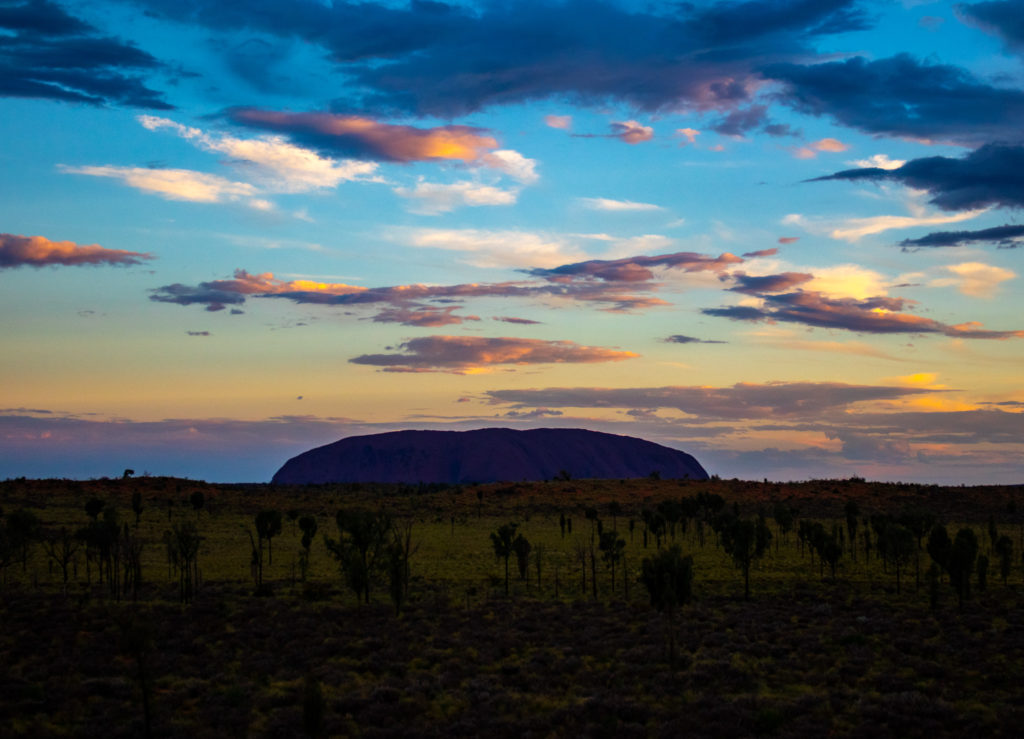
What a fantastic way to finish up our time in Uluru. Tomorrow we head back to Alice. Uluru and Katu Tjuta are the BOMB. Brilliant. Much WOW
2022 – The Red Centre – Day 7
Day 7 – On the Road.
All good trips must come to an end. Today was the 5 hour drive back to Alice Springs. It was so sad to farewell the magnificent Uluru and Kata Tjuta. The showed in the rear vision mirror for a long time. A few stops along the way – as to be expected.
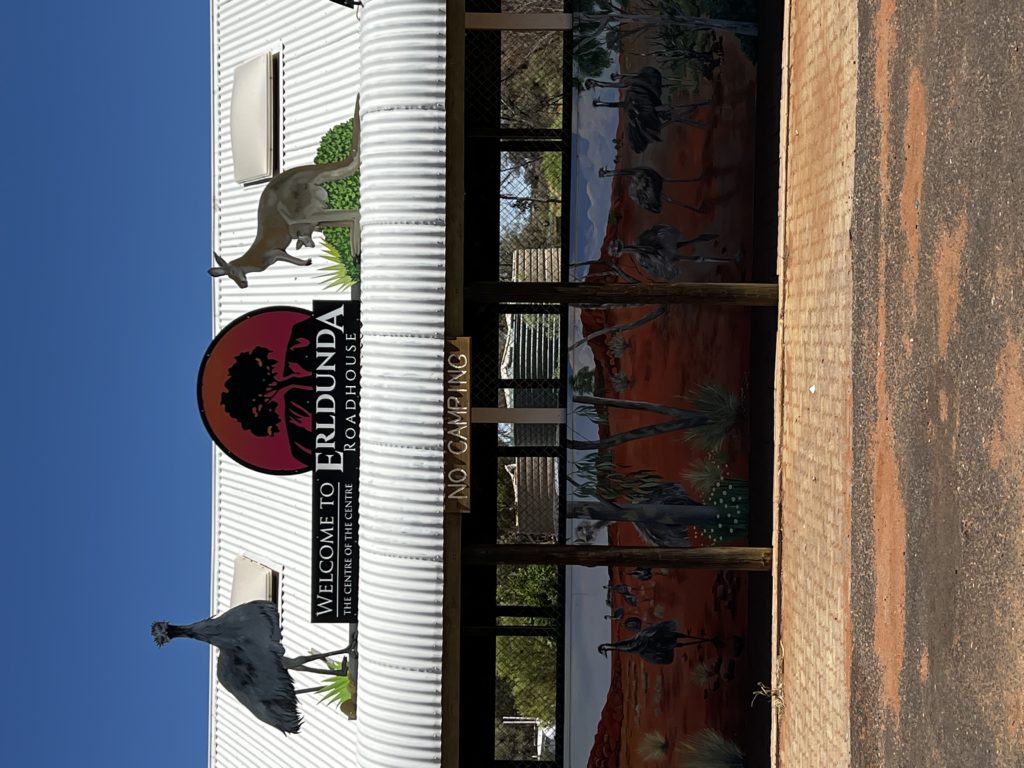
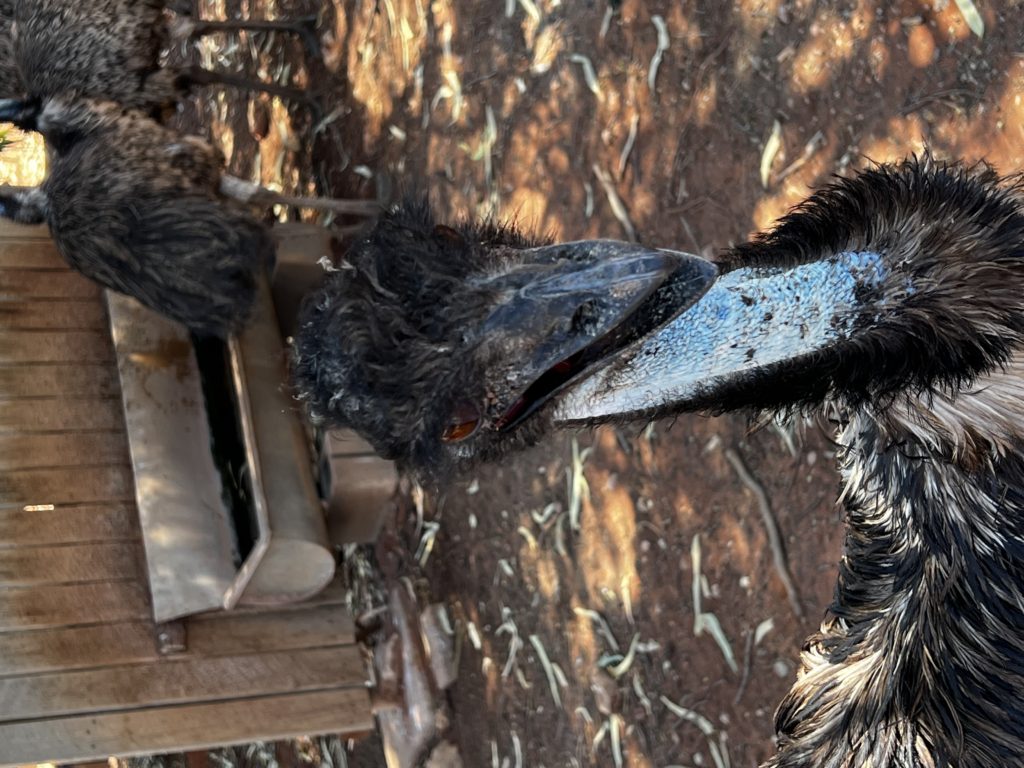
The Erldunda Roadhouse in the “town” of Ghan. Really an intersection and a roadhouse. And the “Centre of the Centre”. Chatted to the emus. Again we saw huge flocks of Budgies. The most common caged bird on the world. In the wild they only come in green. Far to fast to get photos of when flying.
We stopped at the Fink River. It still had plenty of water from the rains last month. So pretty.

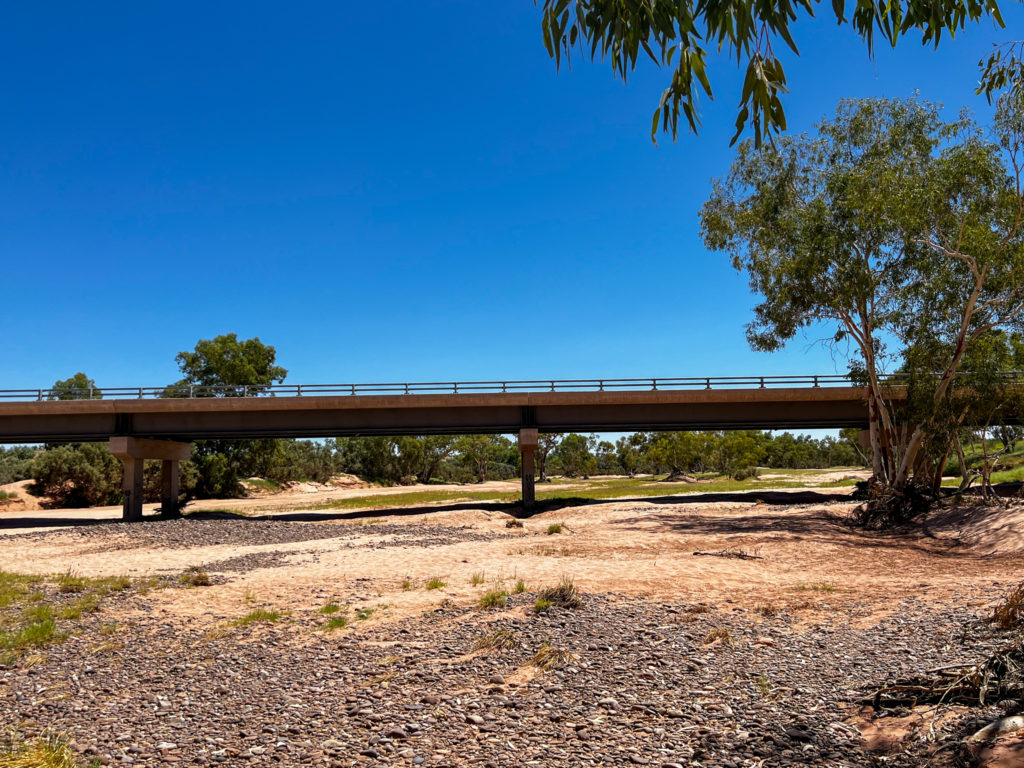
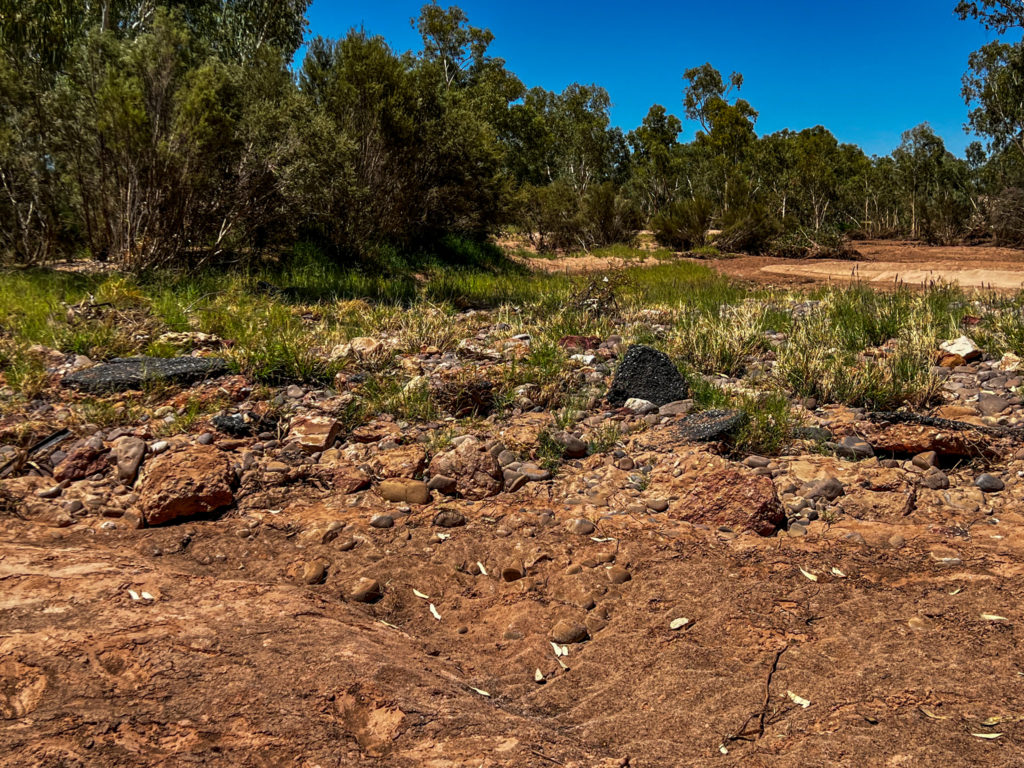
Full of fish and birds. BUDGIES!!! Flocks of them. I would watch them fly into the trees and just disappear.

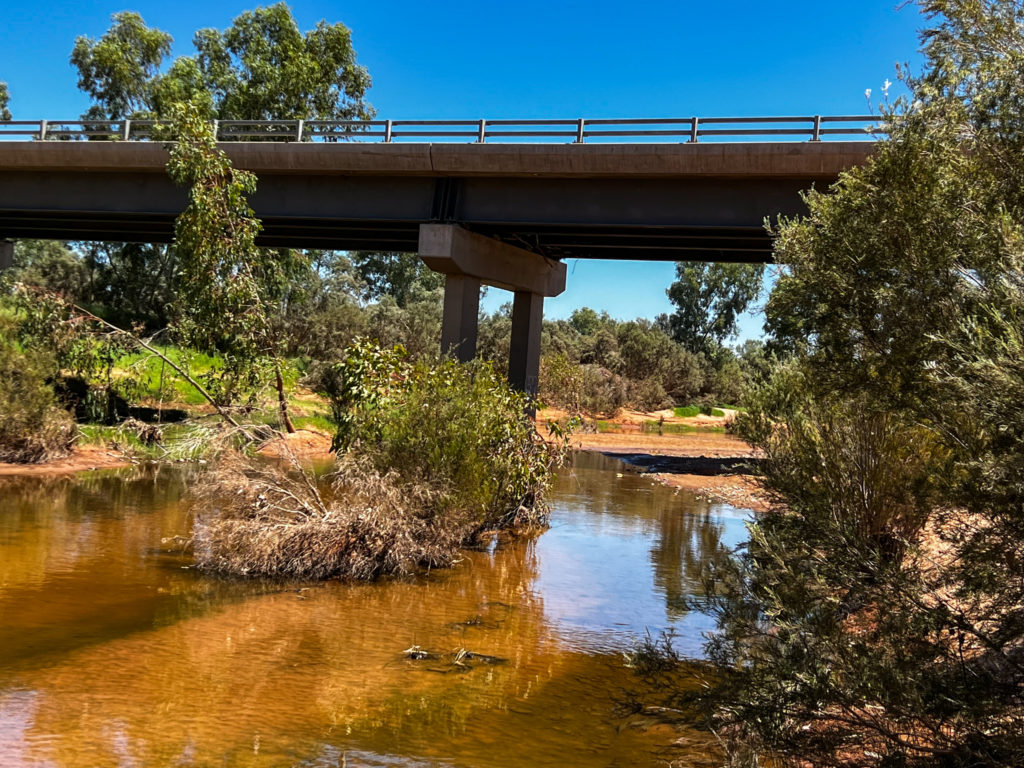
This tree has around 20 Budgies, AKA Budgerigars in it. I saw them fly in and could hear them chittering and chirping. They were mocking me. See if you can find any. Then back to Alice. Home tomorrow.

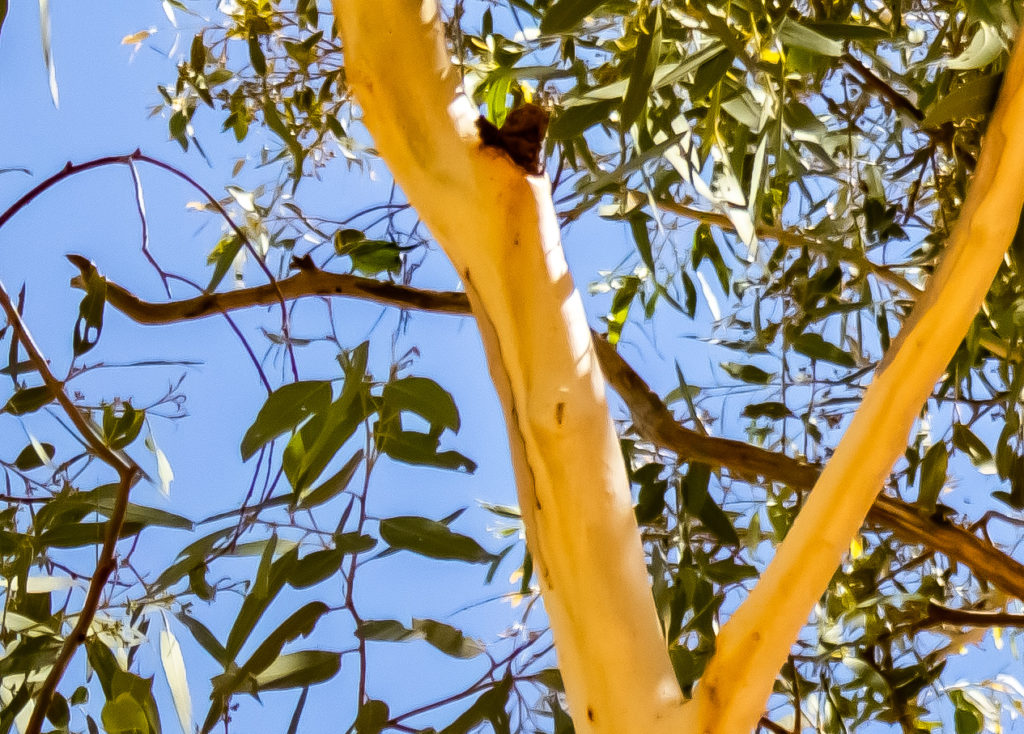
When it floods here it takes great chunks of road with it.
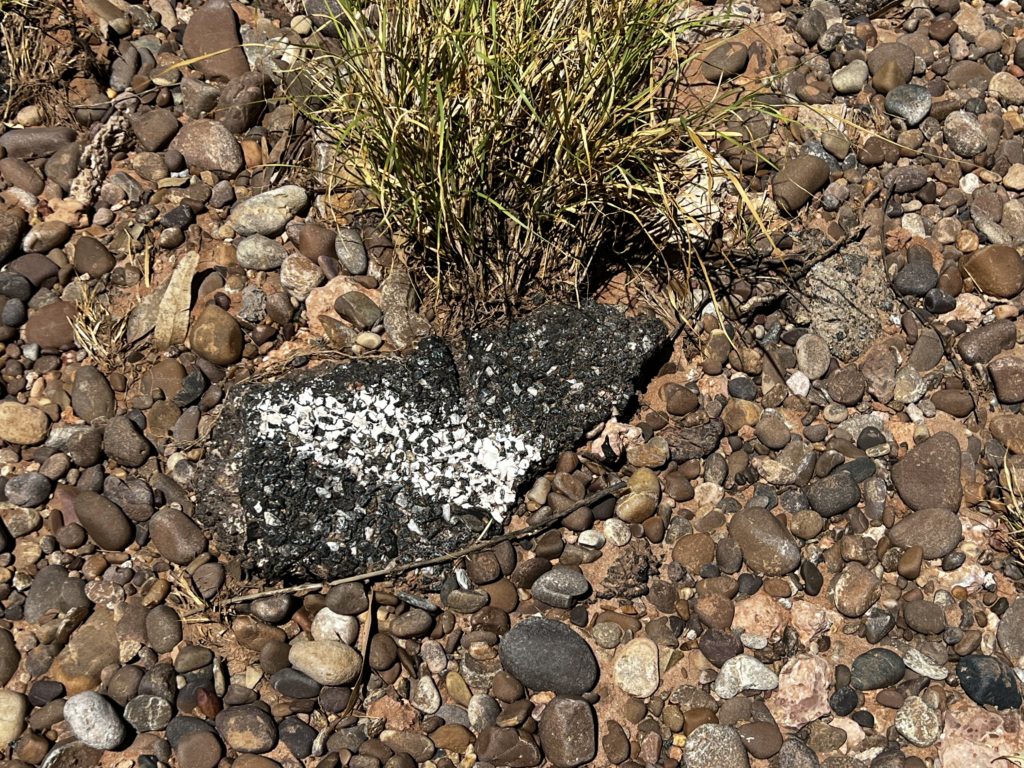
2022 – The Red Centre – Day 8
And then the trip home.
After a visit to the Royal Flying Doctor Base. And of course more petrol.

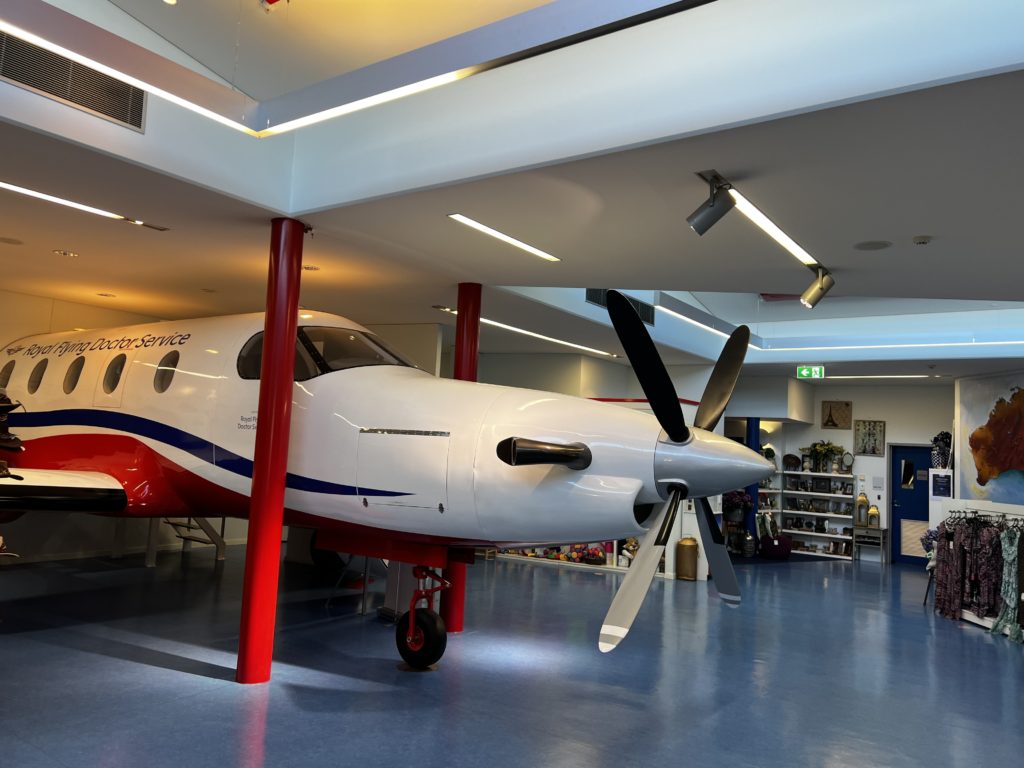
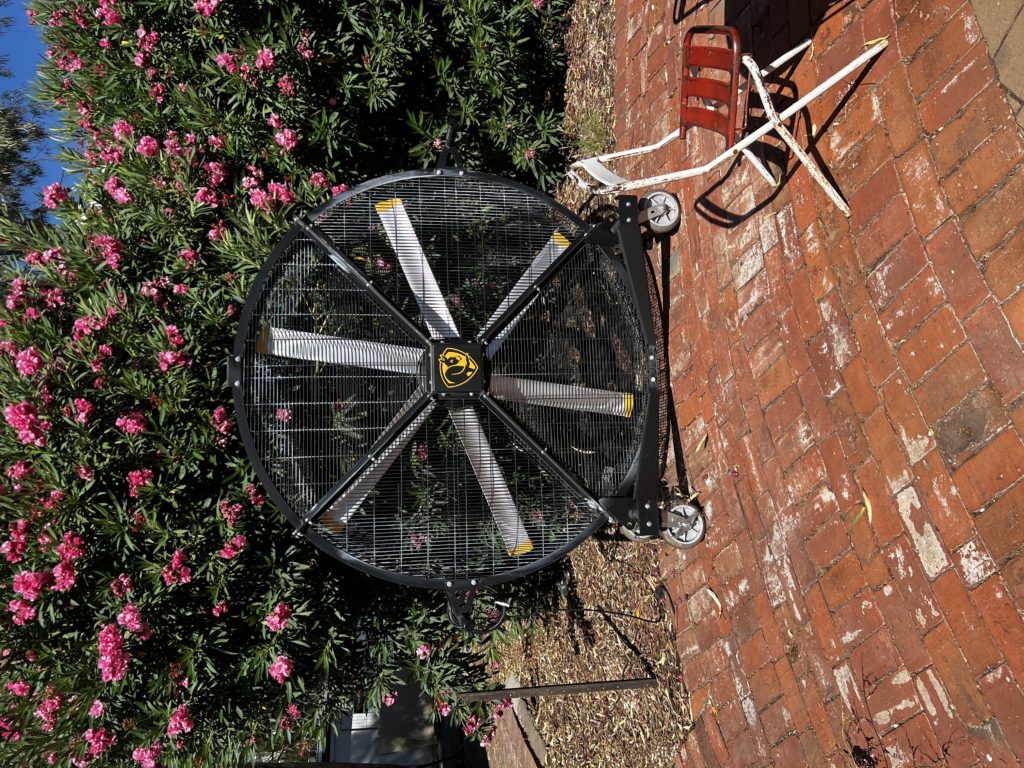

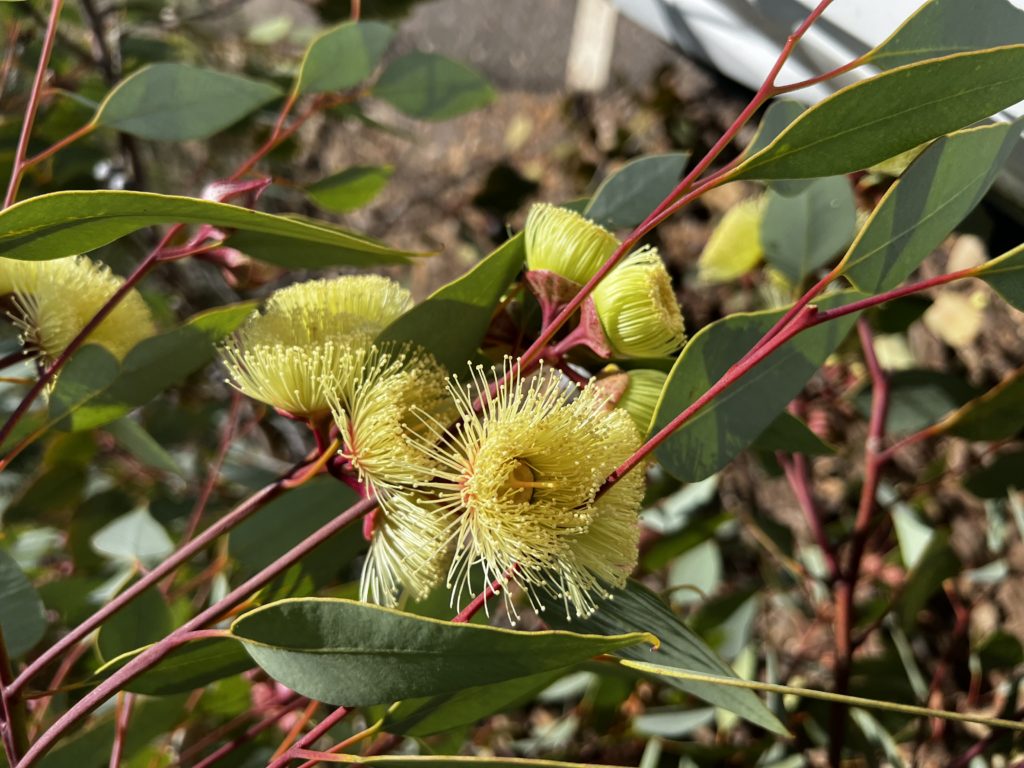
Alice Qantas Club is lovely. One of the nicest!
After a quick glass of bubbles in Sydney it was the final flight home. The pilot said we were going to dodge the storms that were hitting Canberra at that time.
One hour and 50 minutes later we landed (normally 45 min). We had been all the way down the coast to the Victorian boarder. Then up around Cooma and home.
To arrive to pouring rain and very chilli weather was glorious.
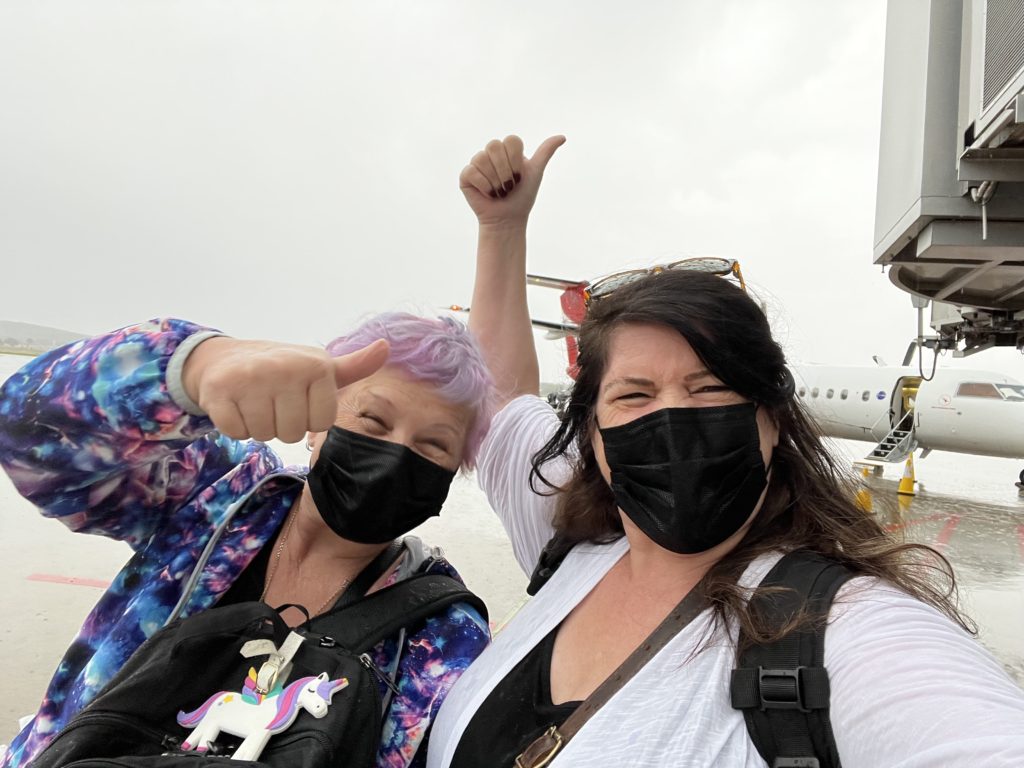
THE END
The next trip……. late May 2022
East Kimberley.
